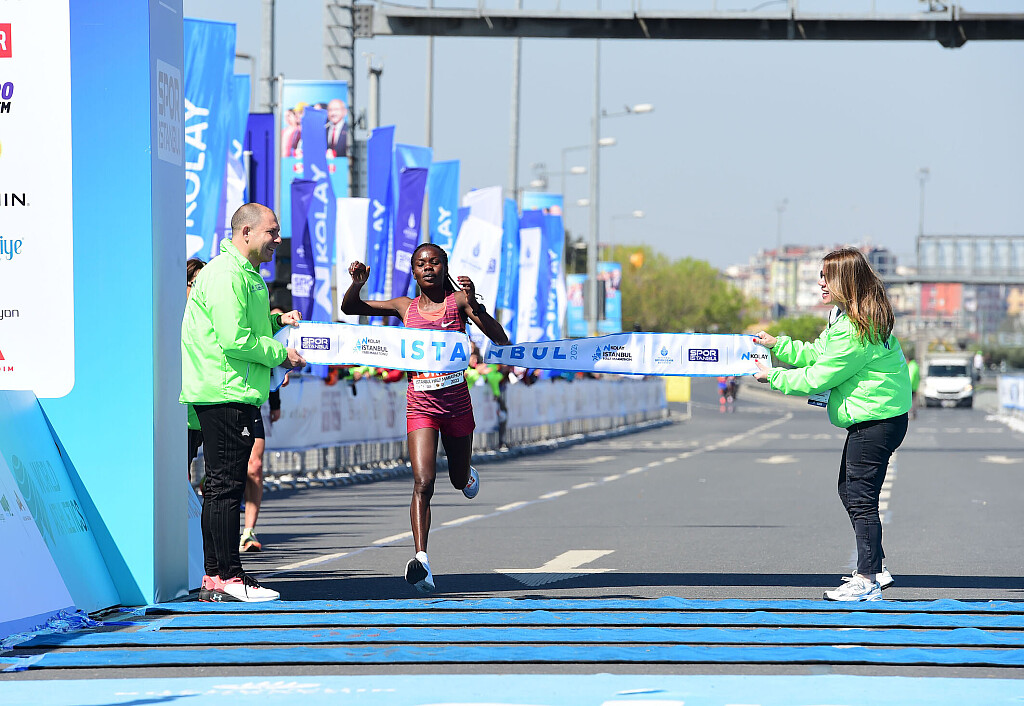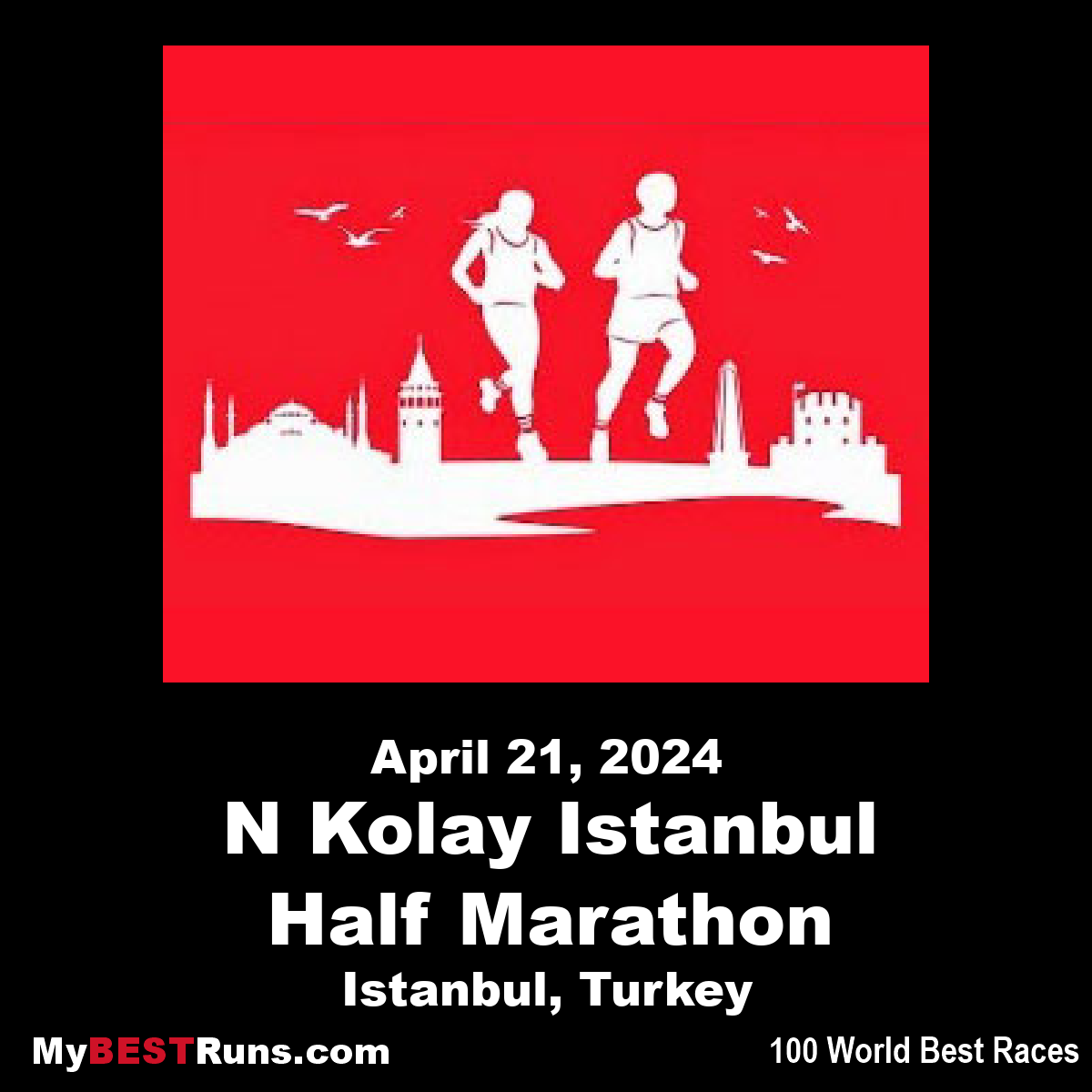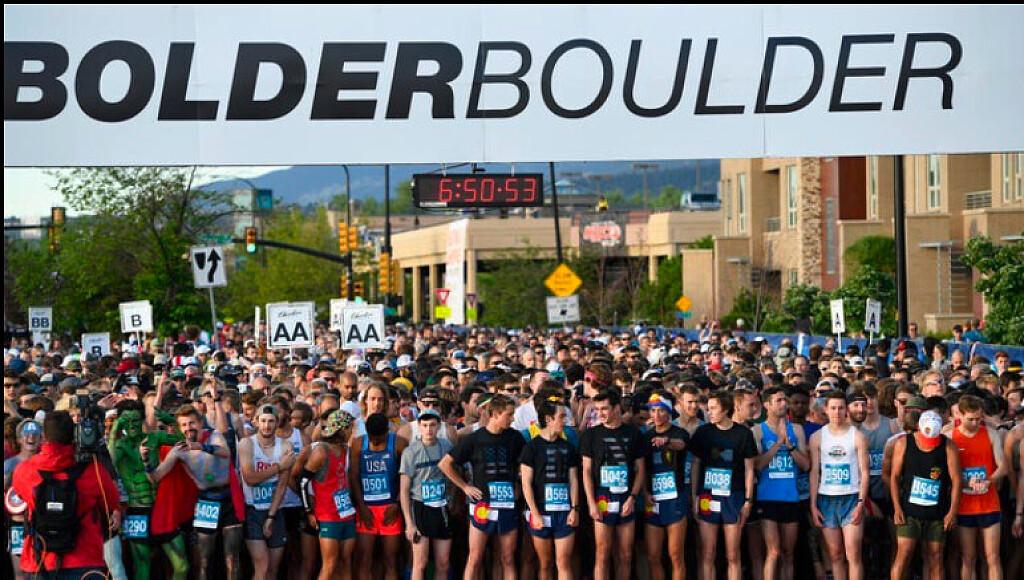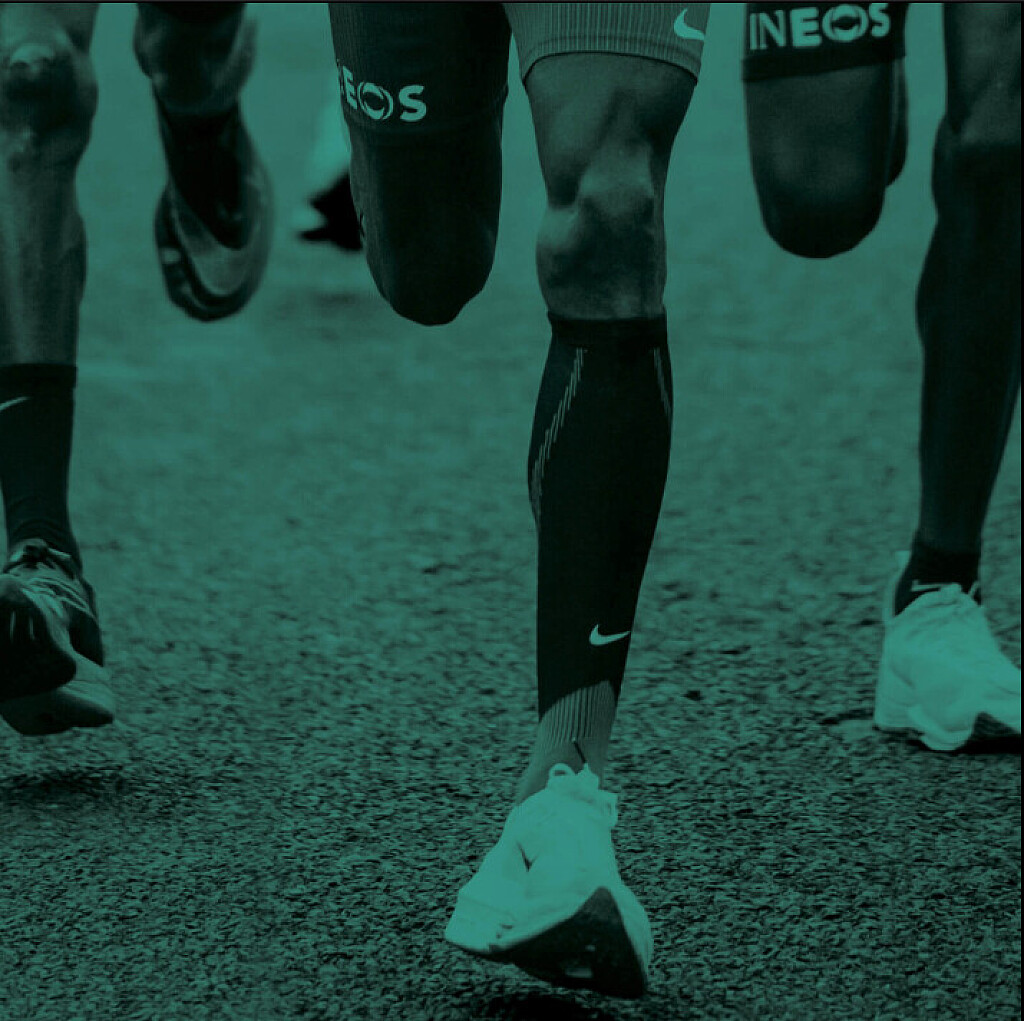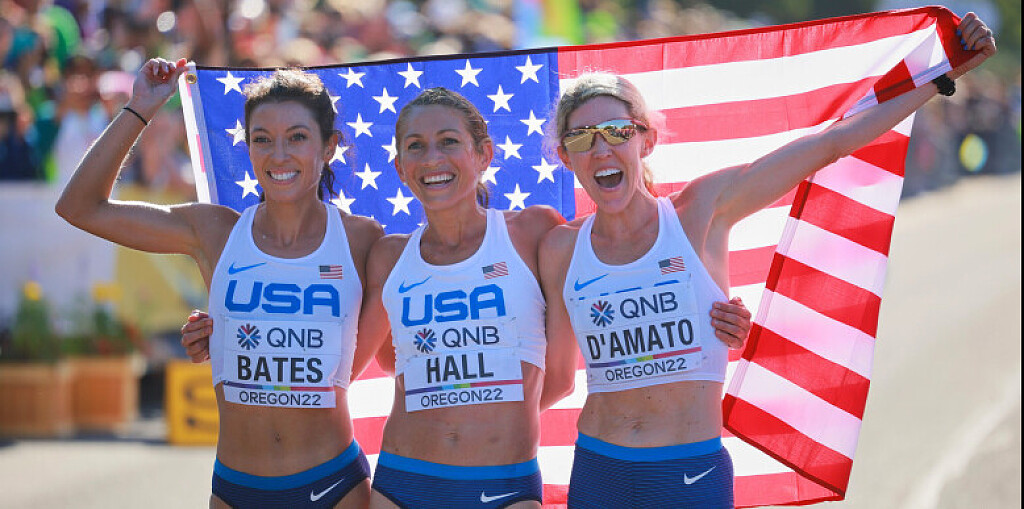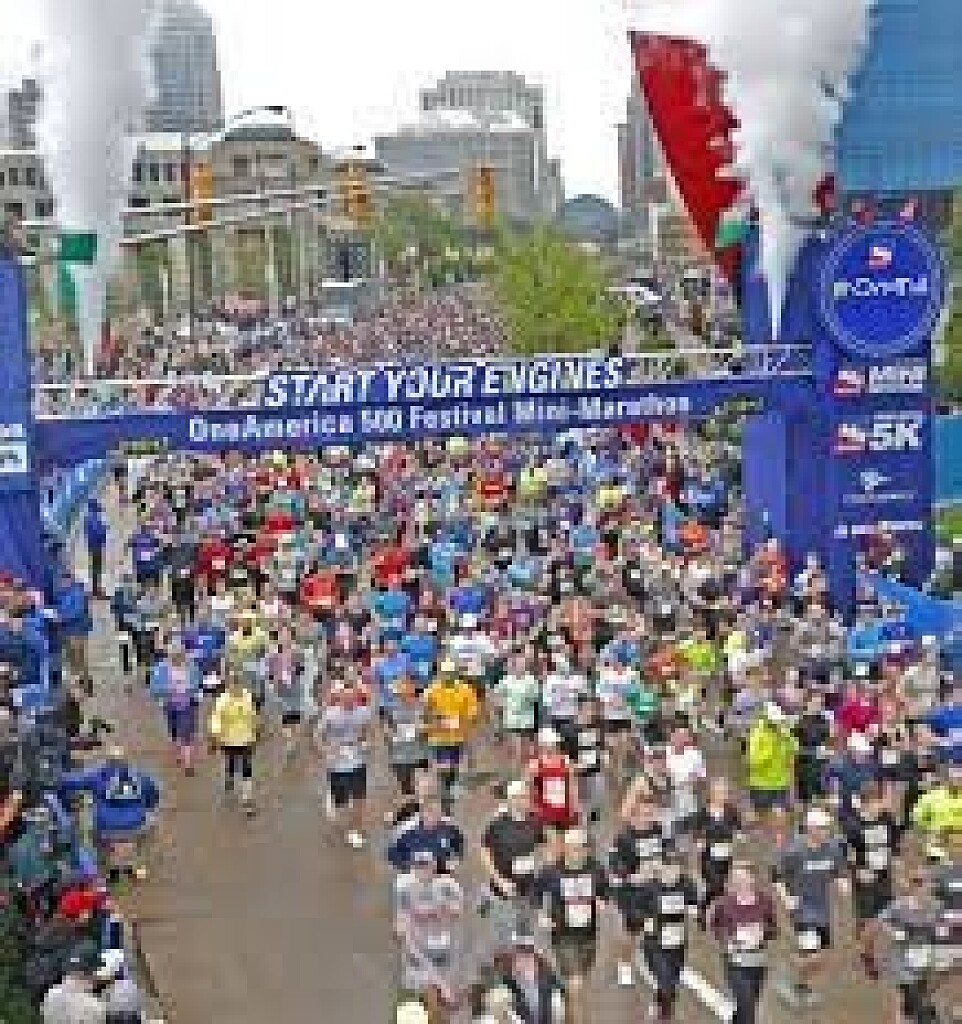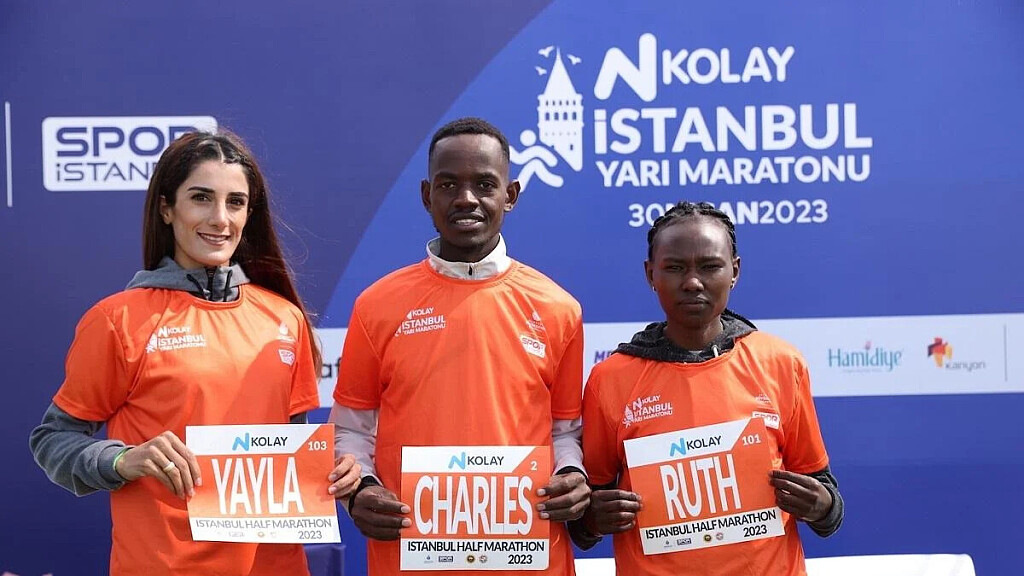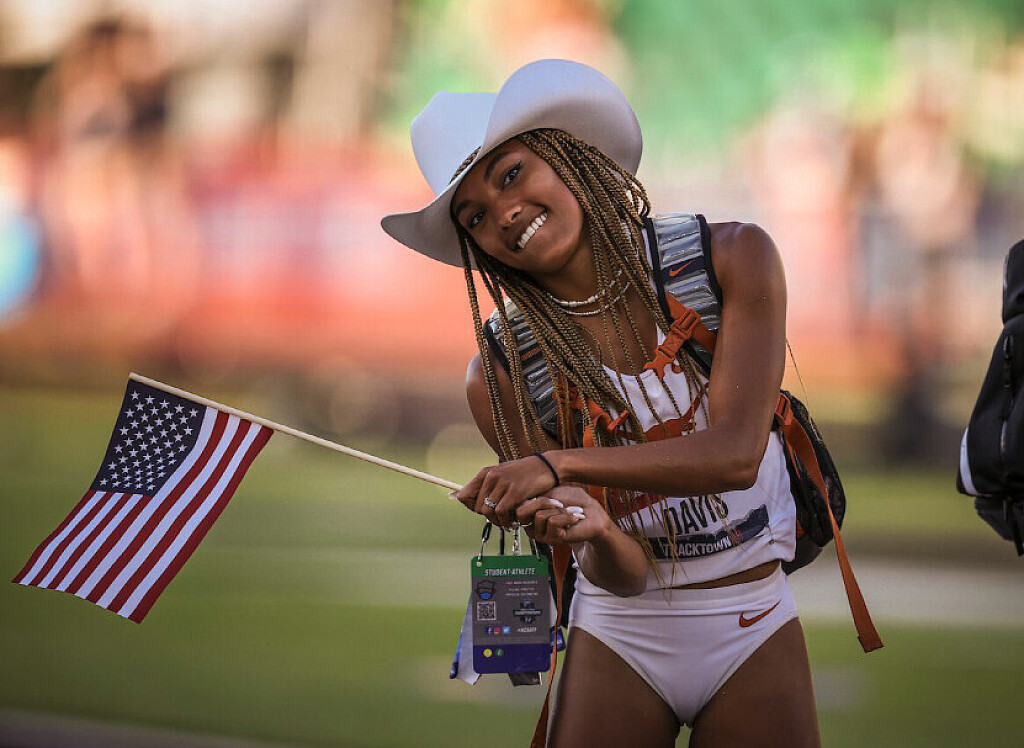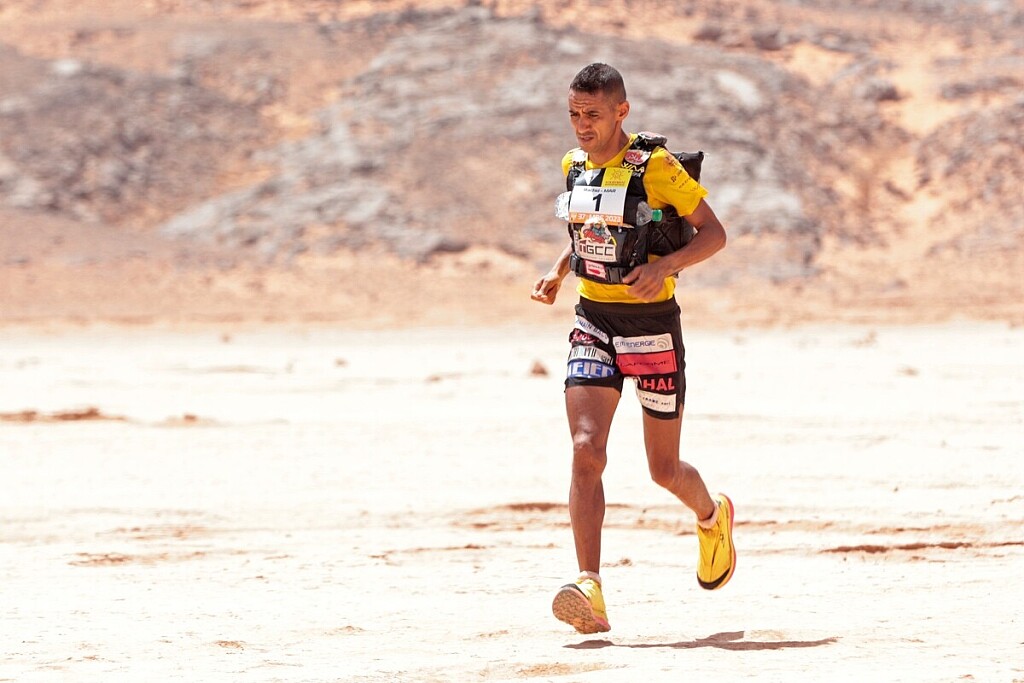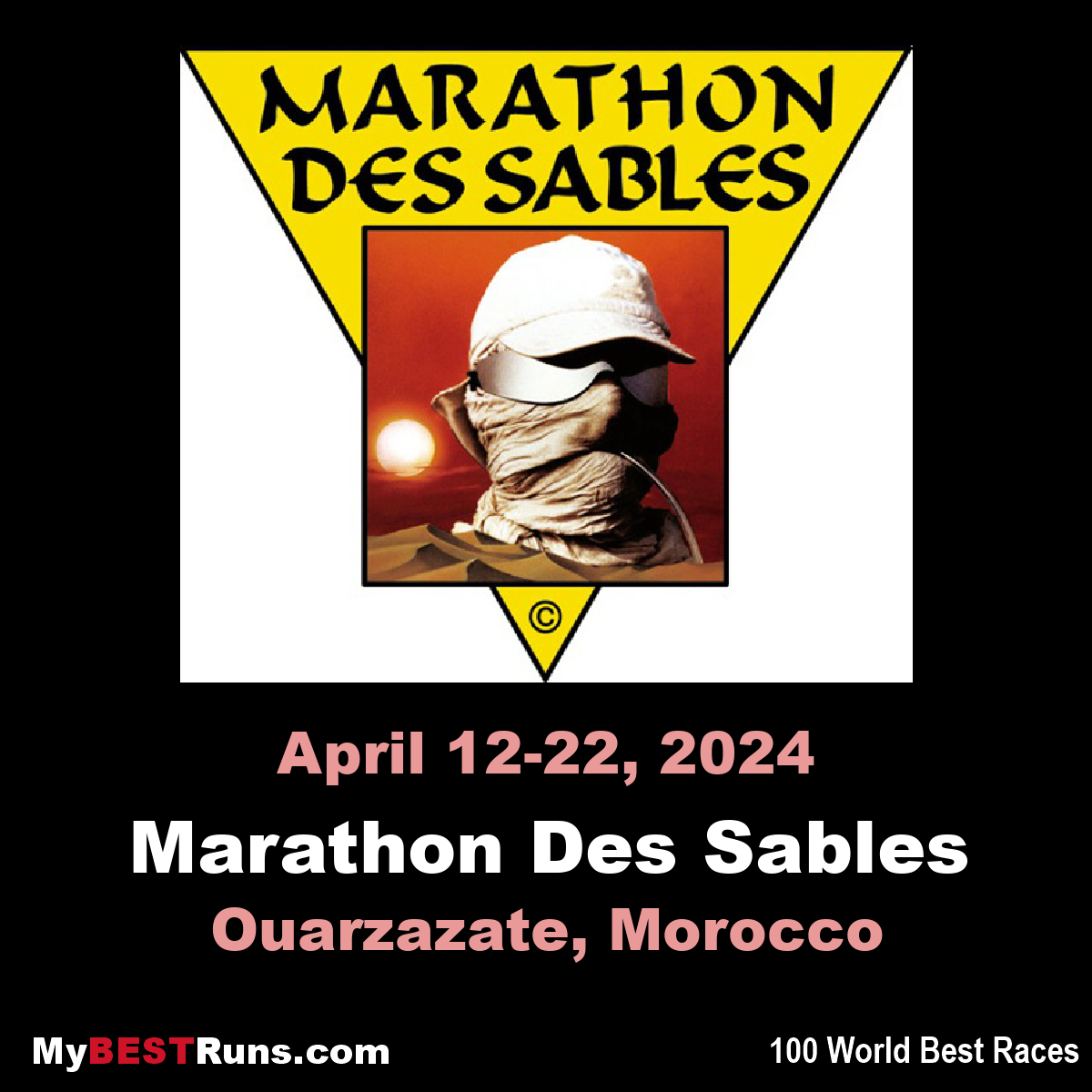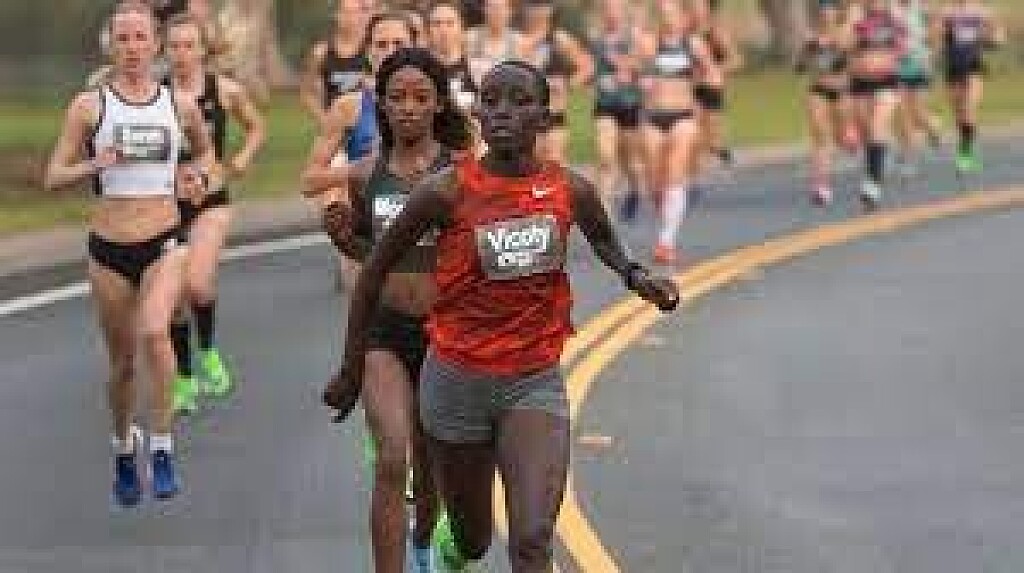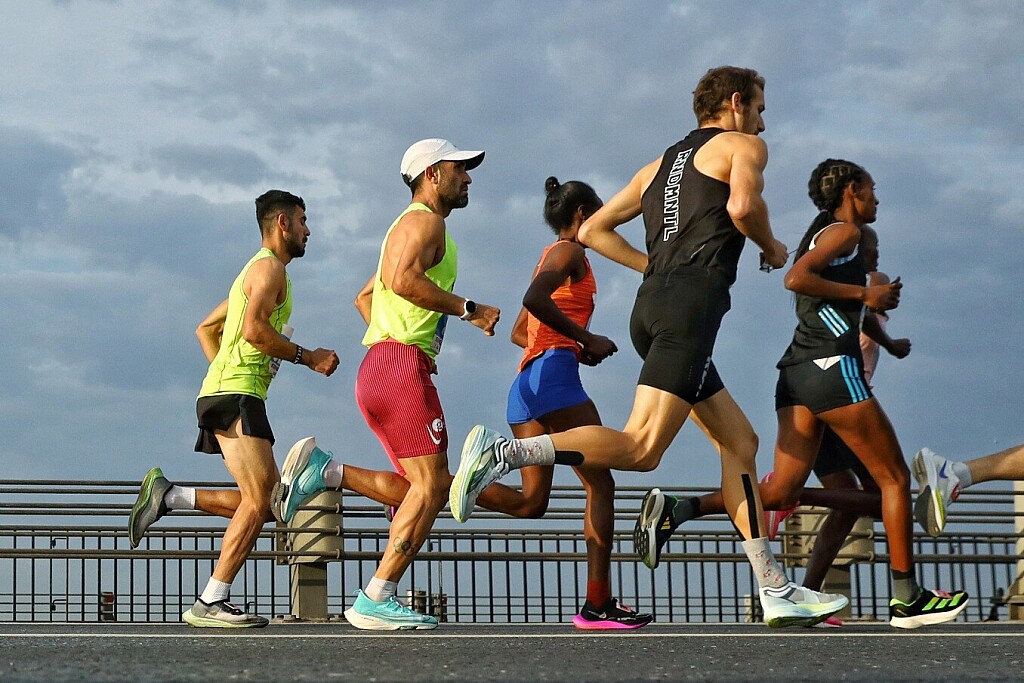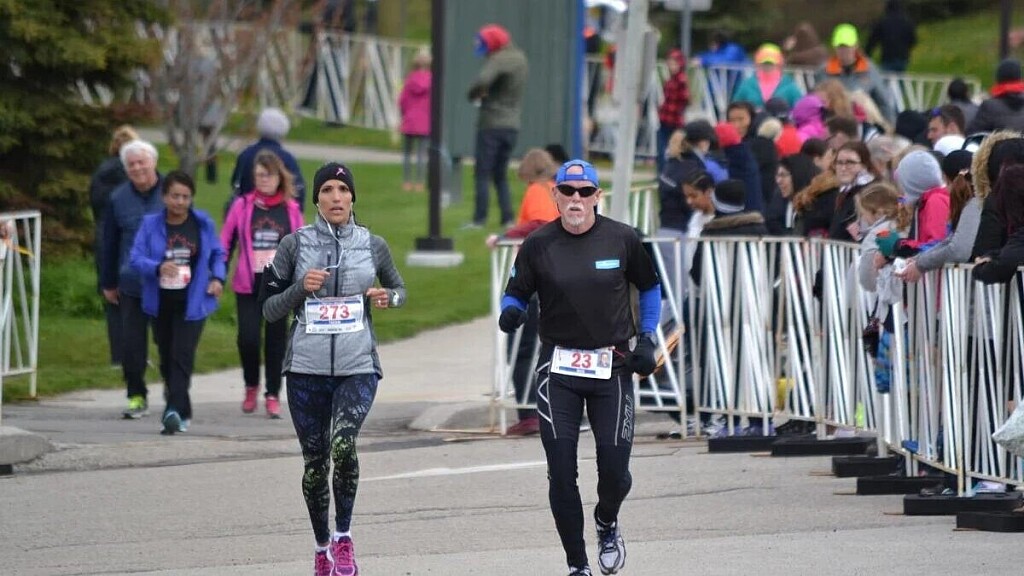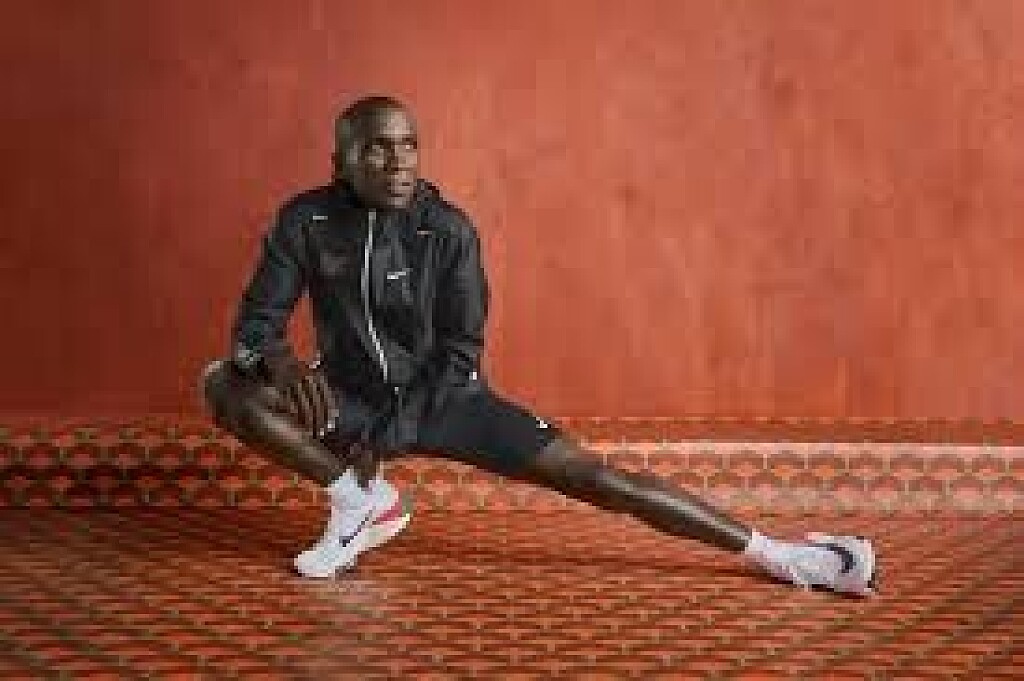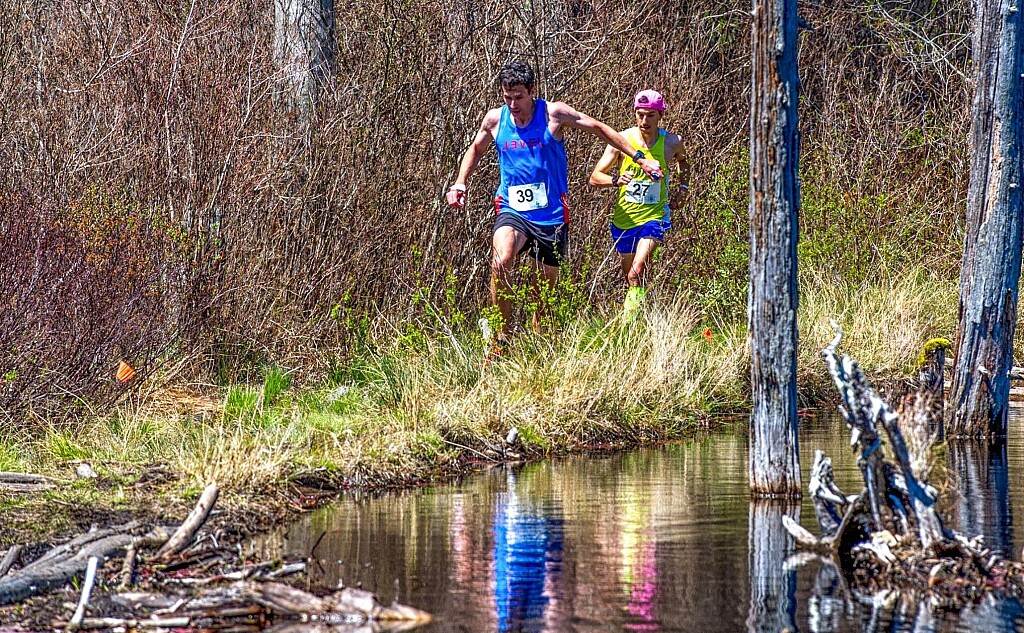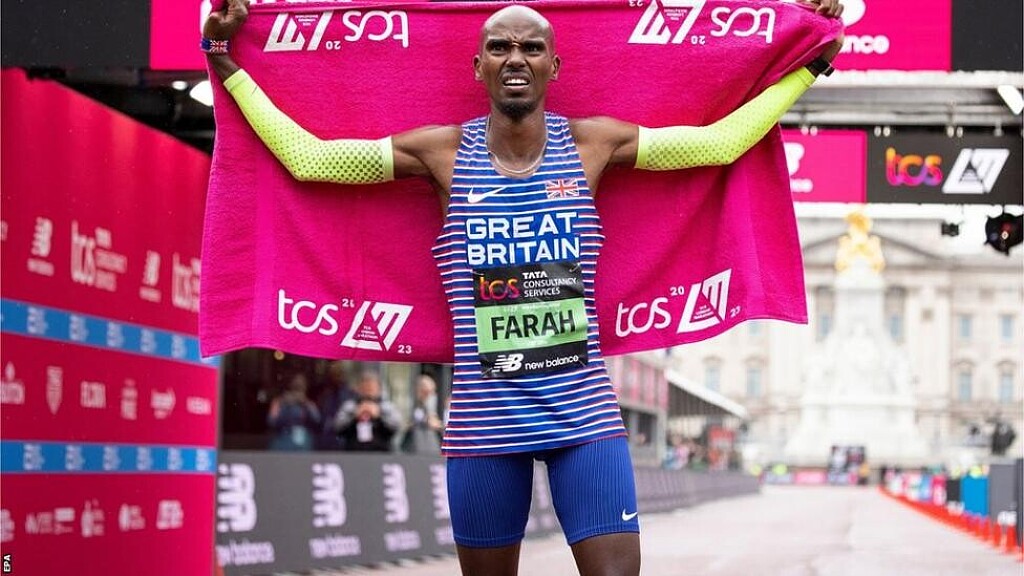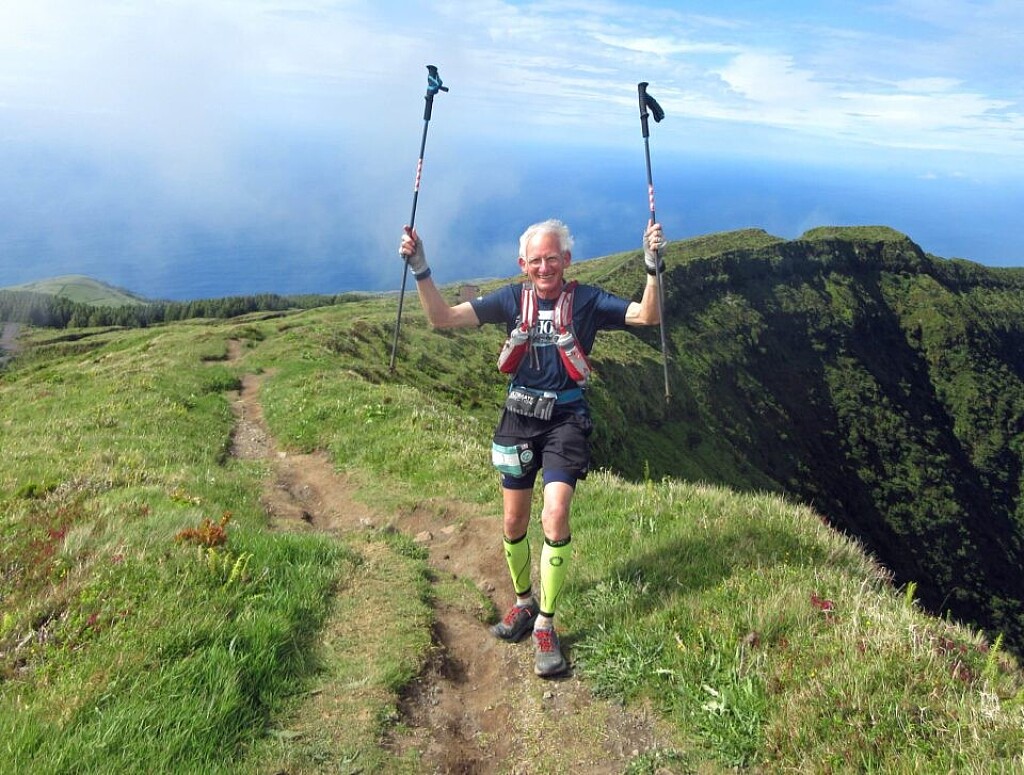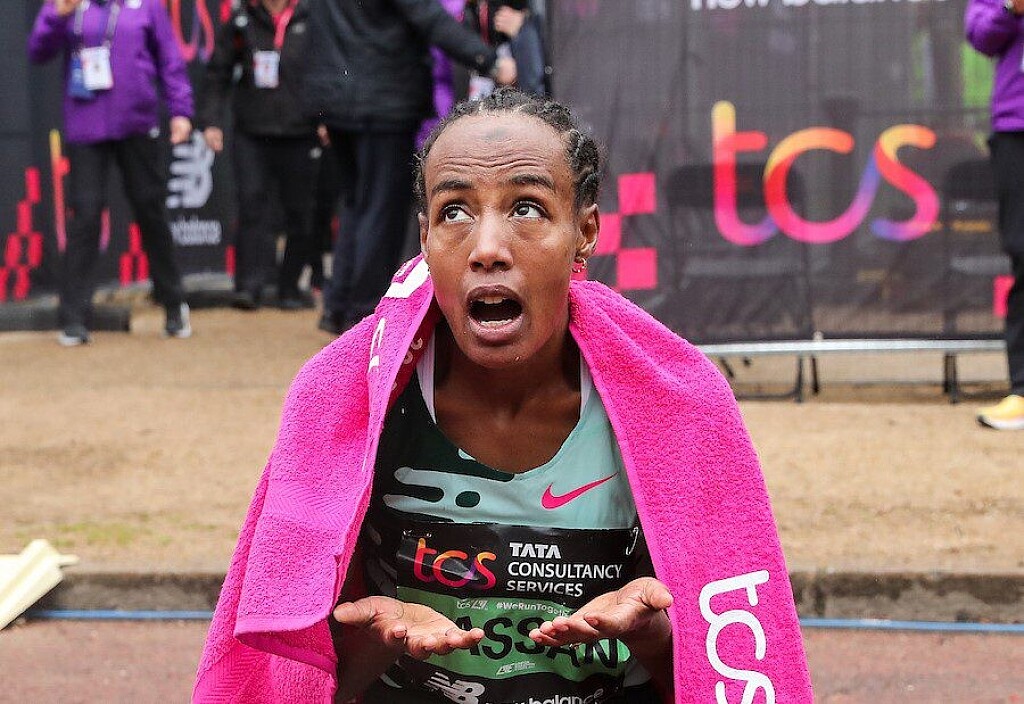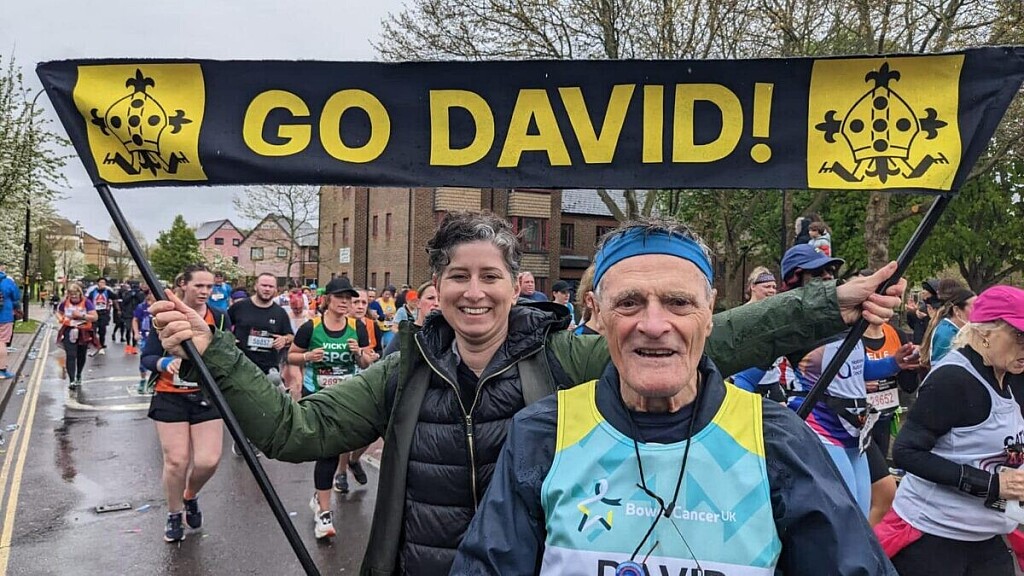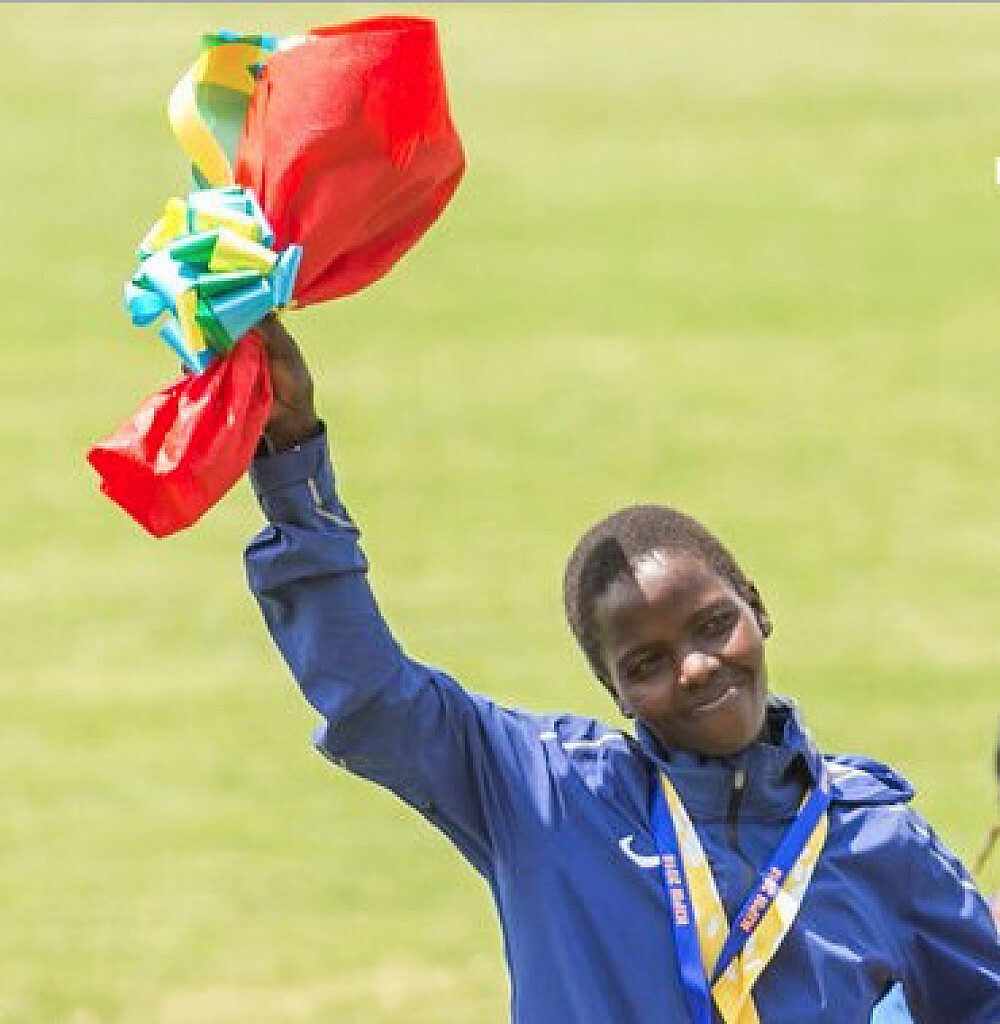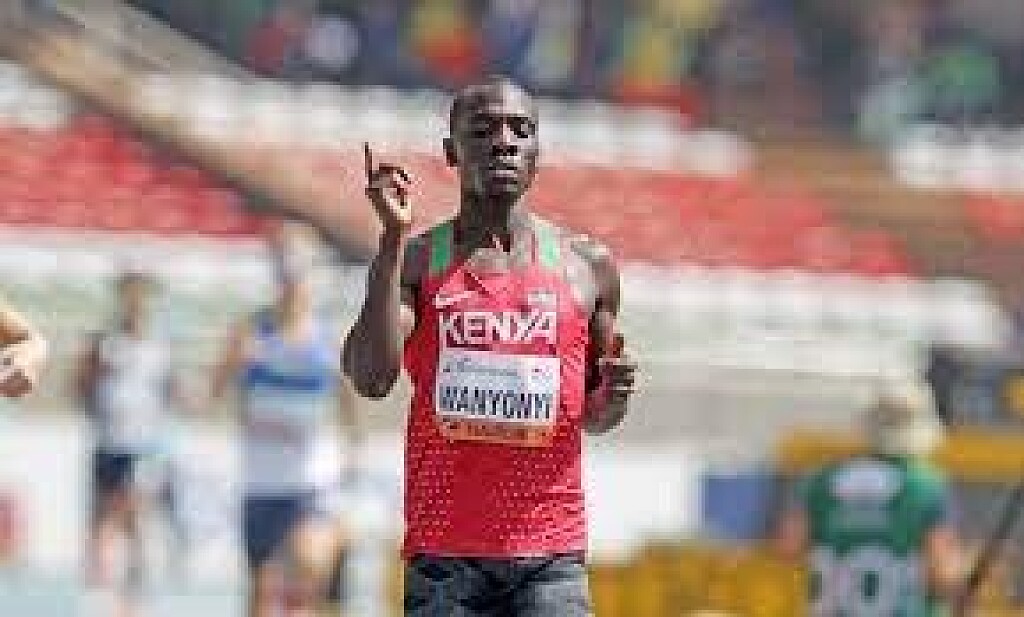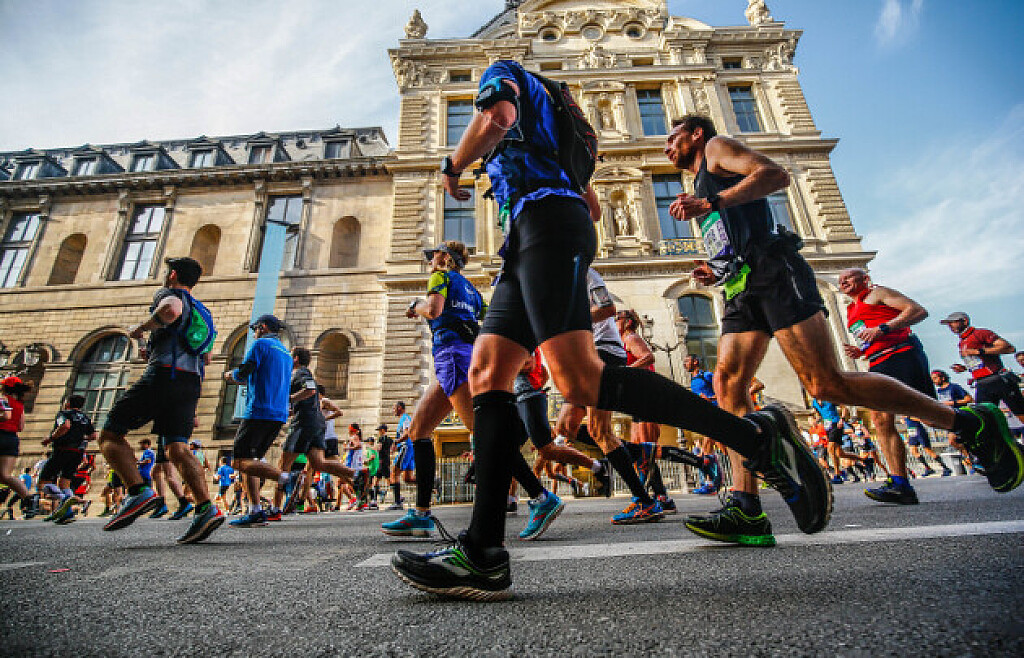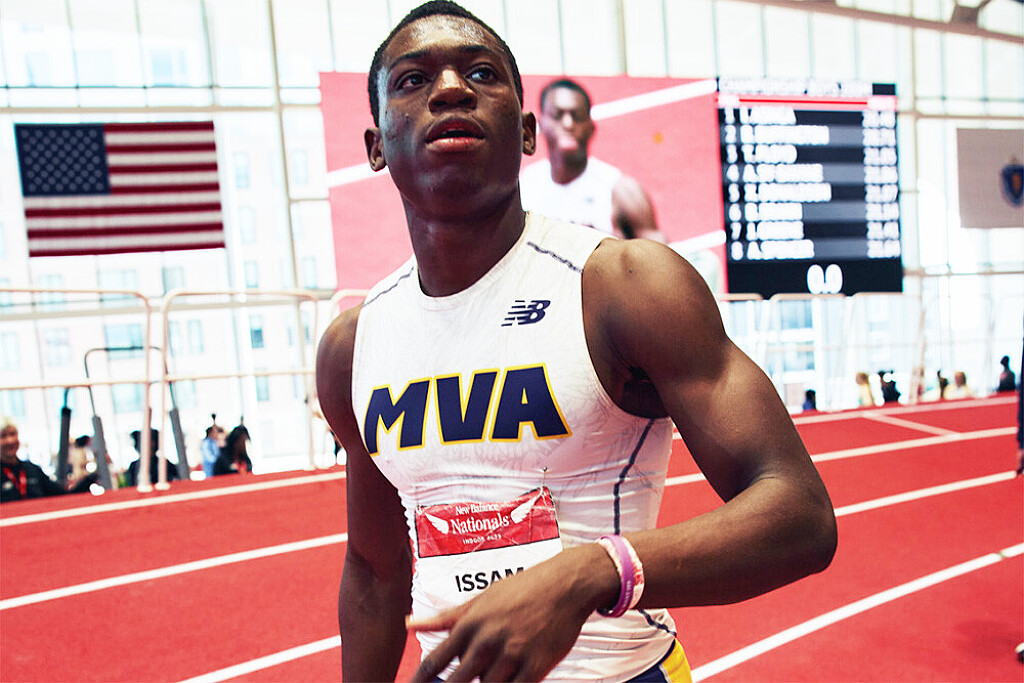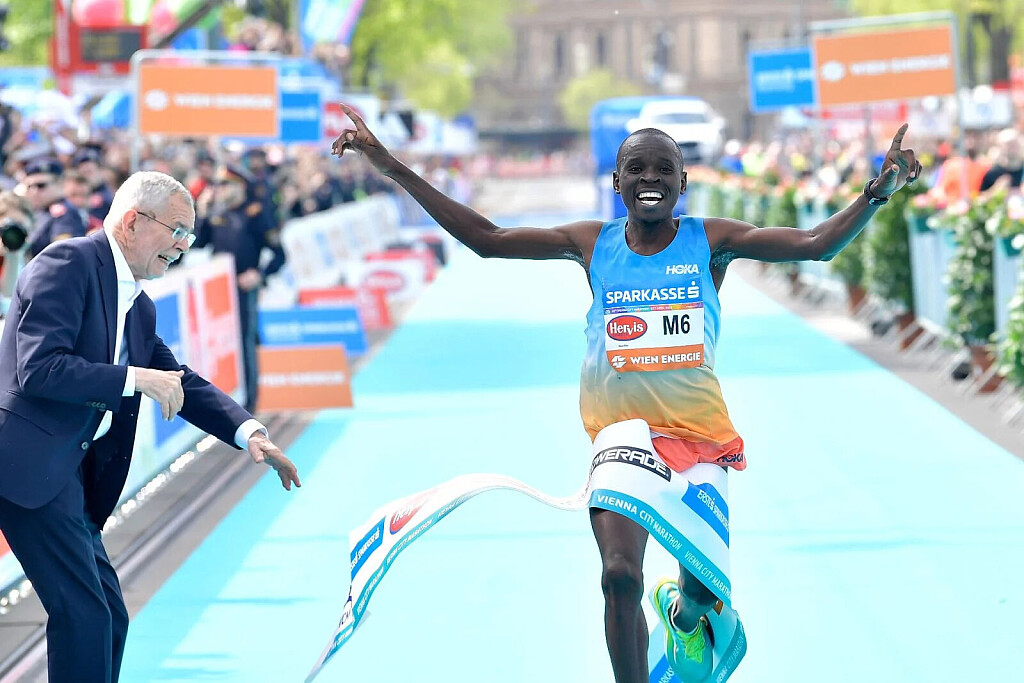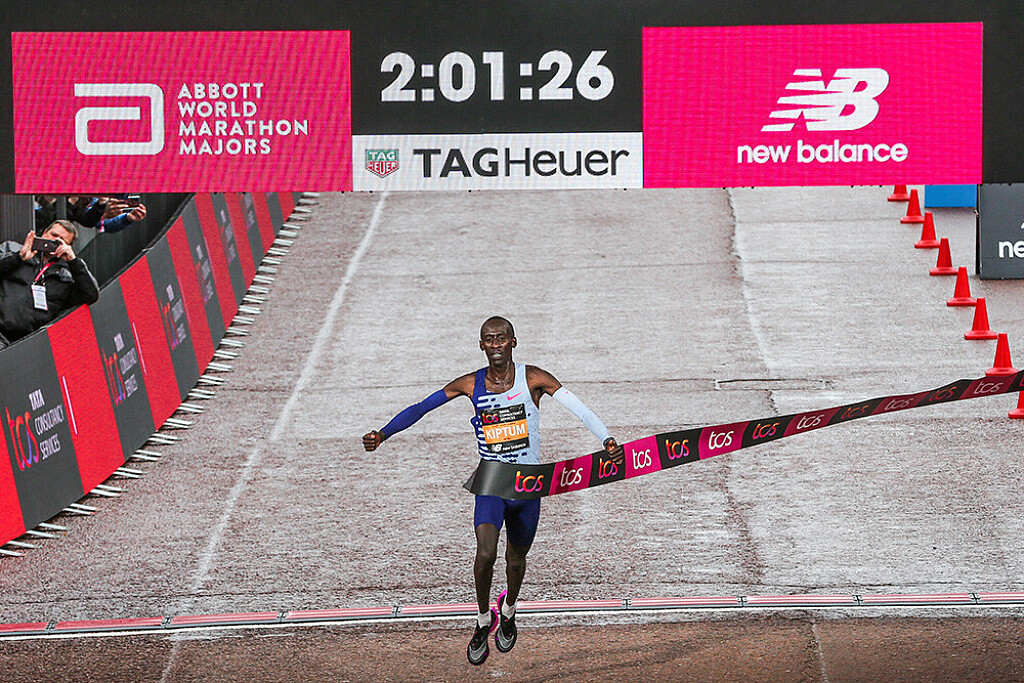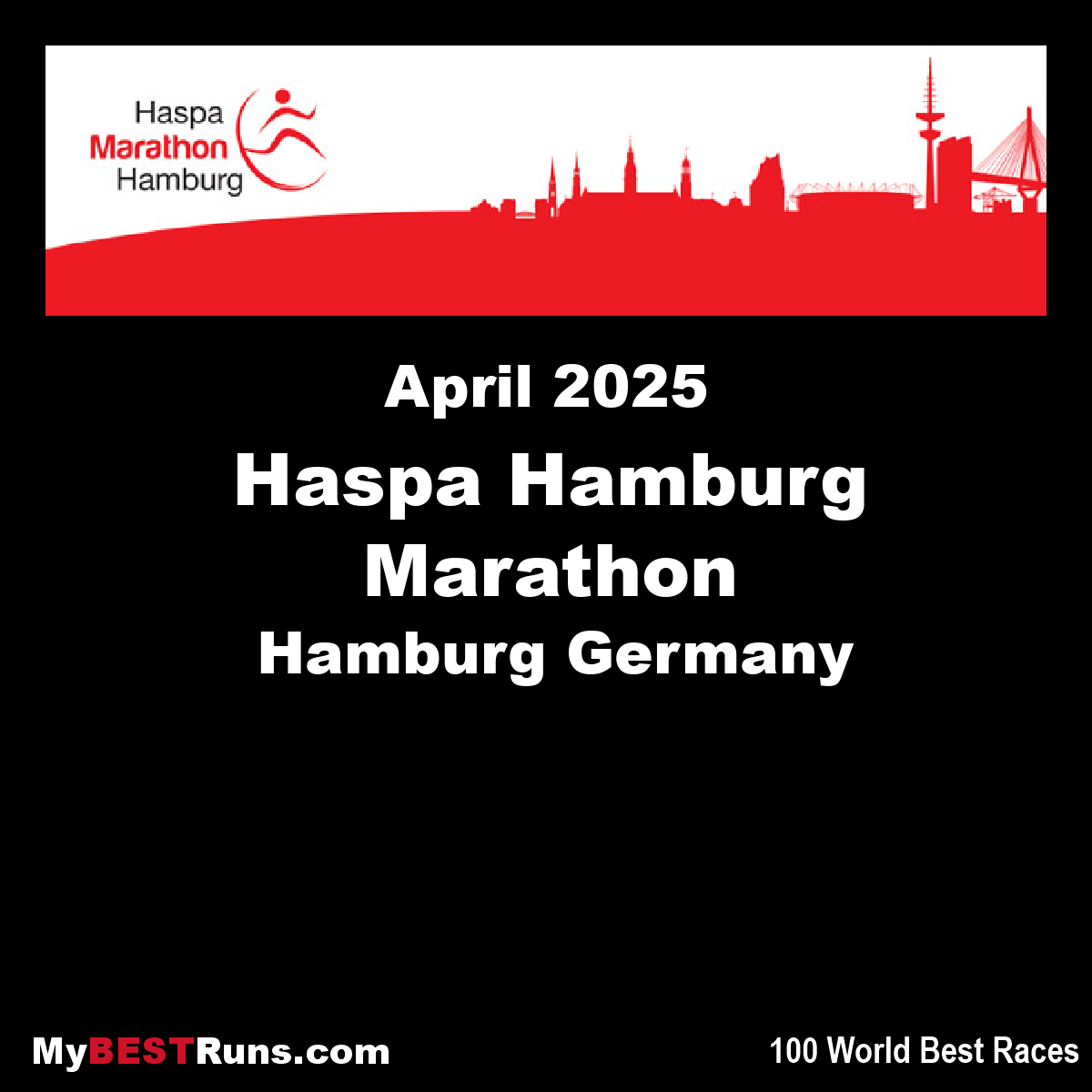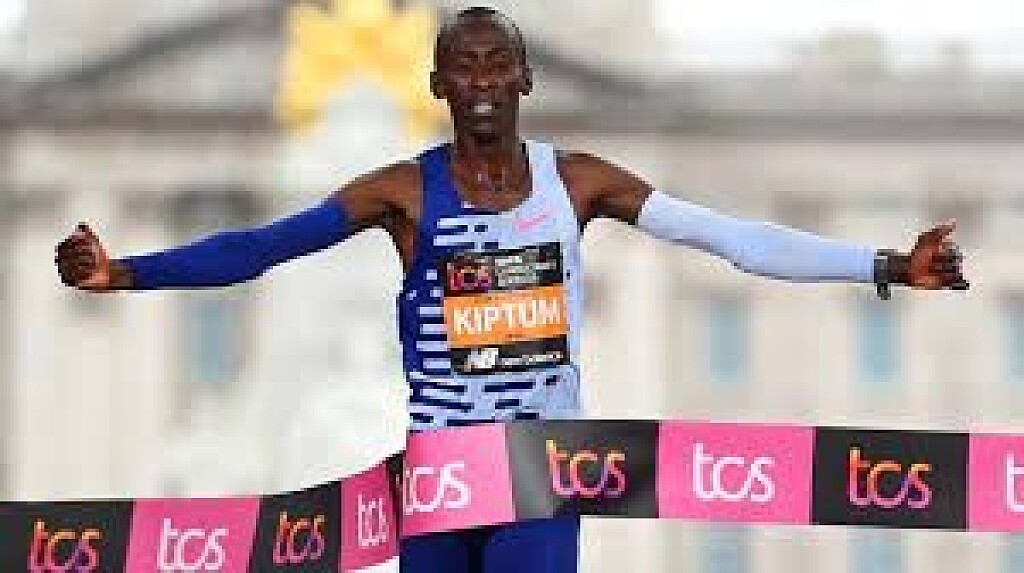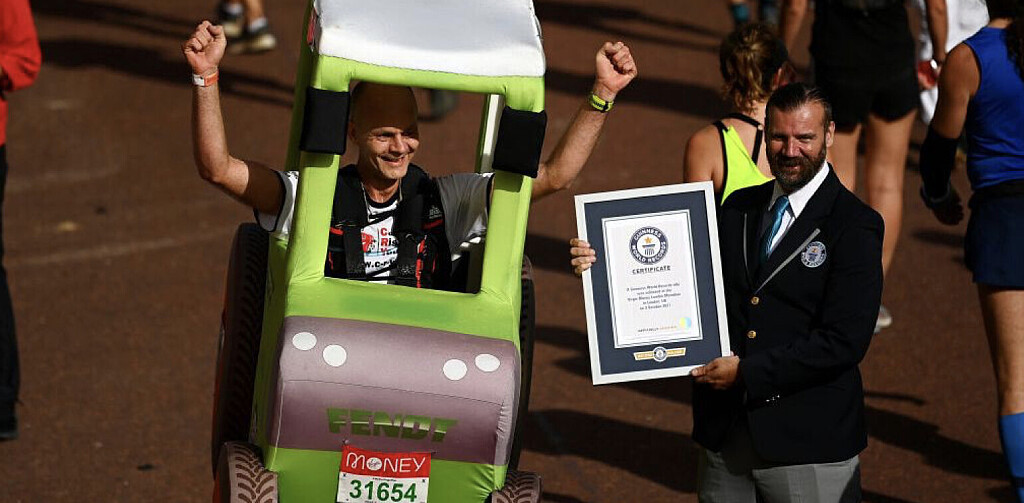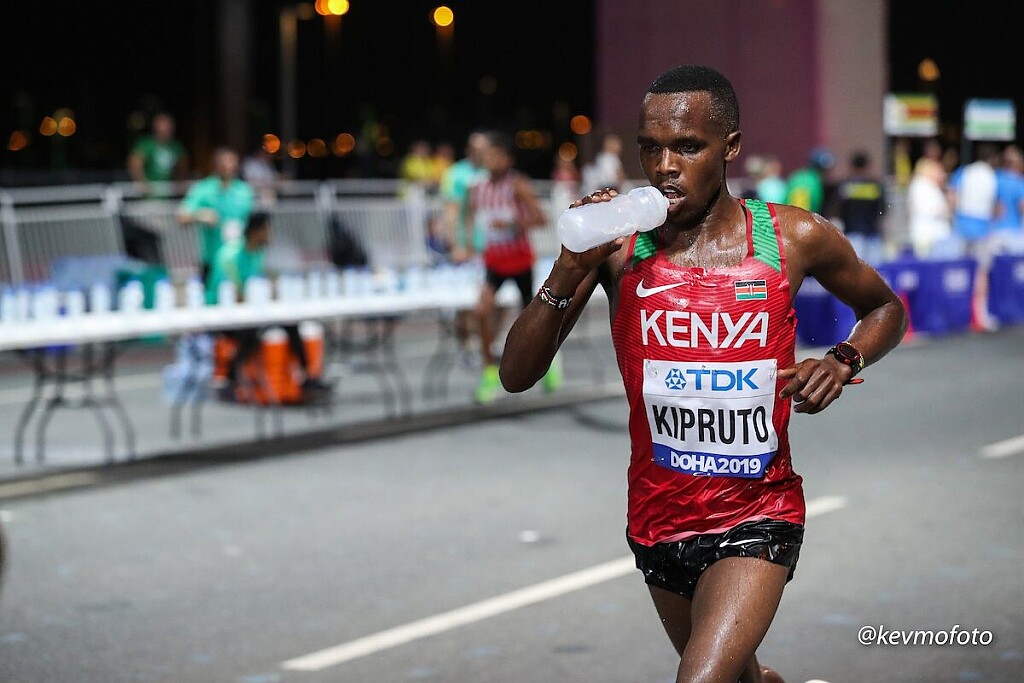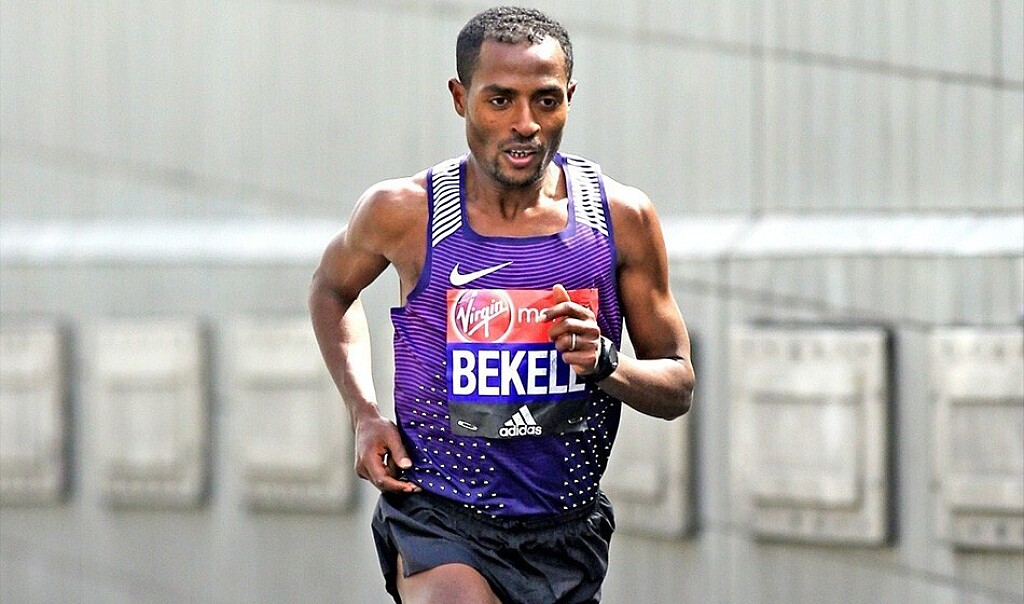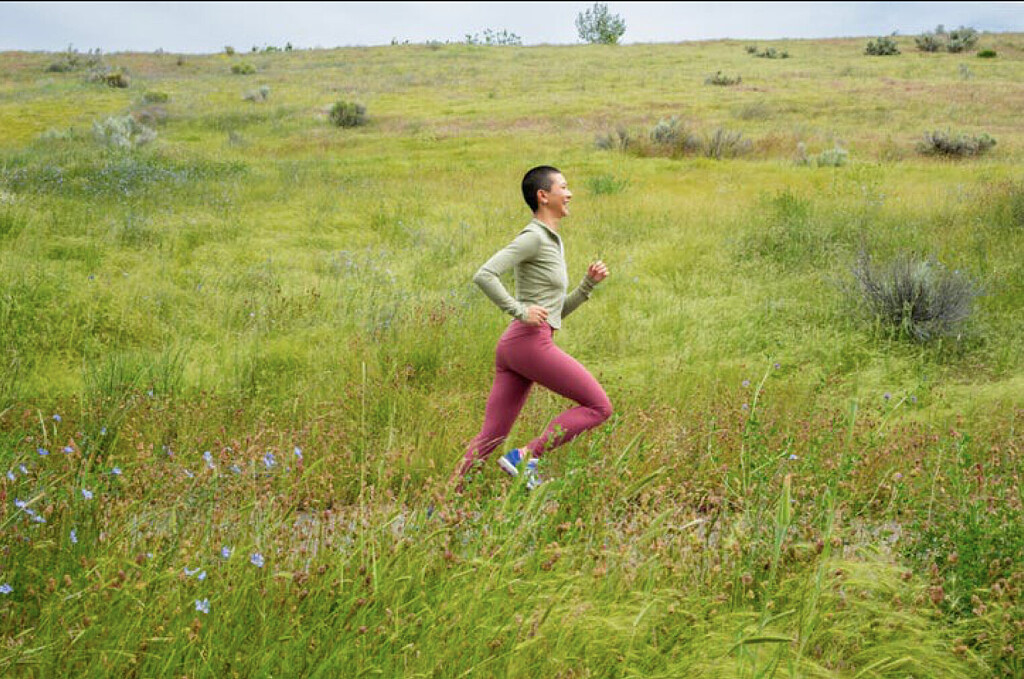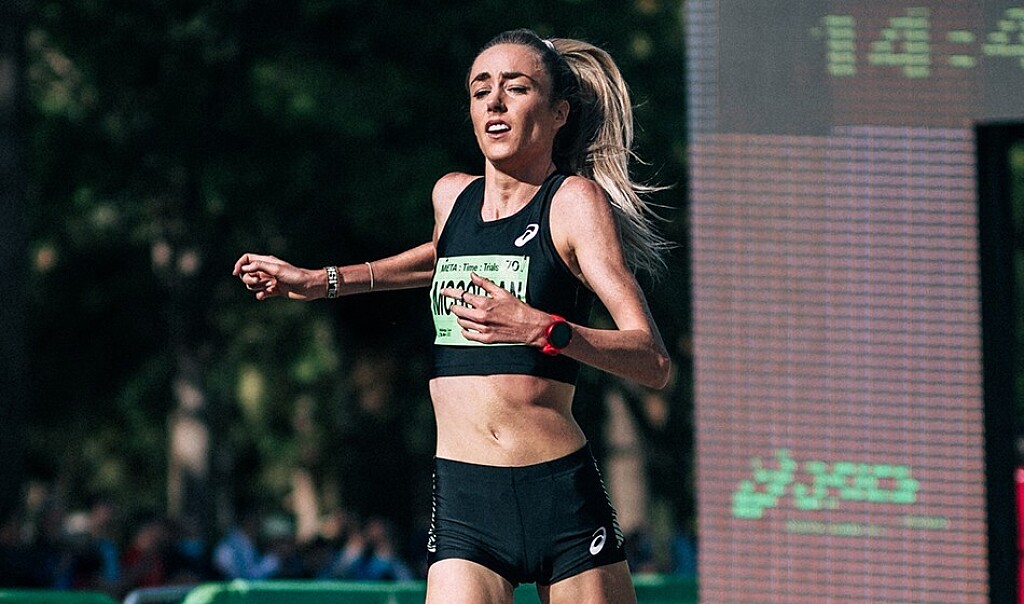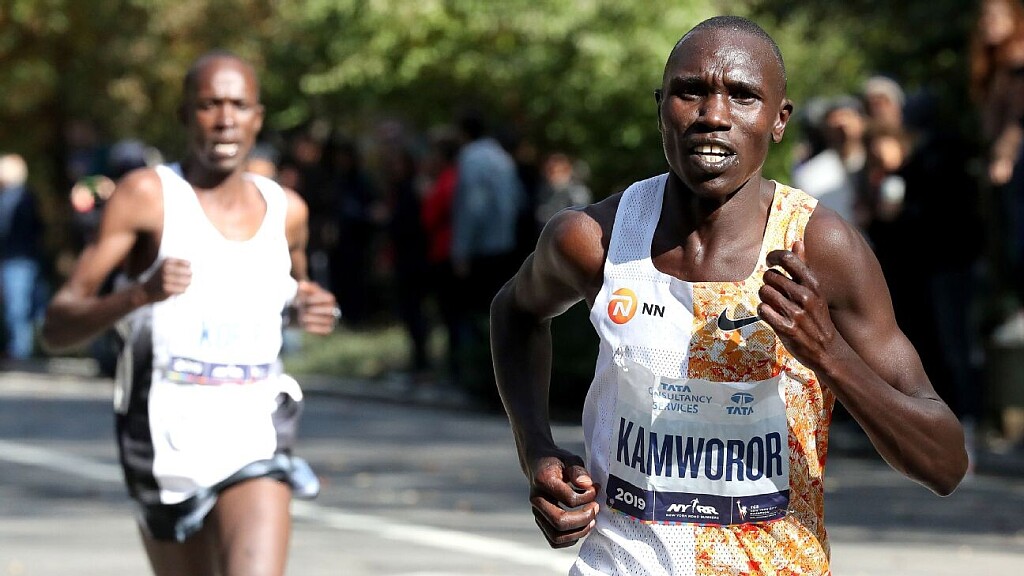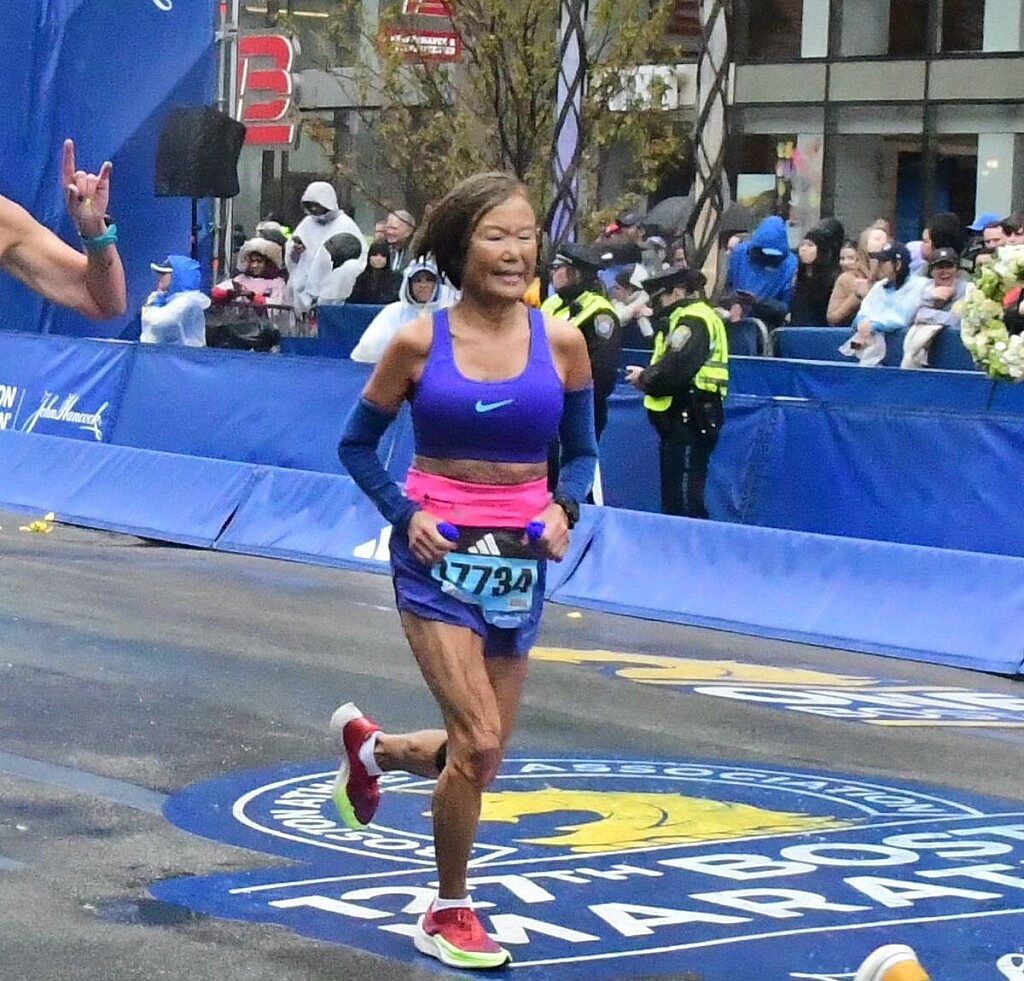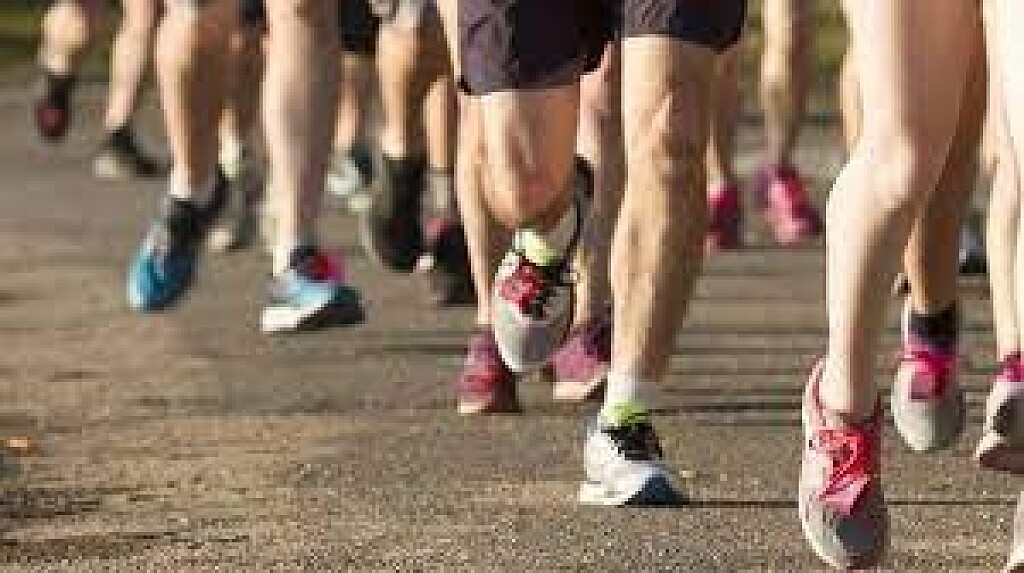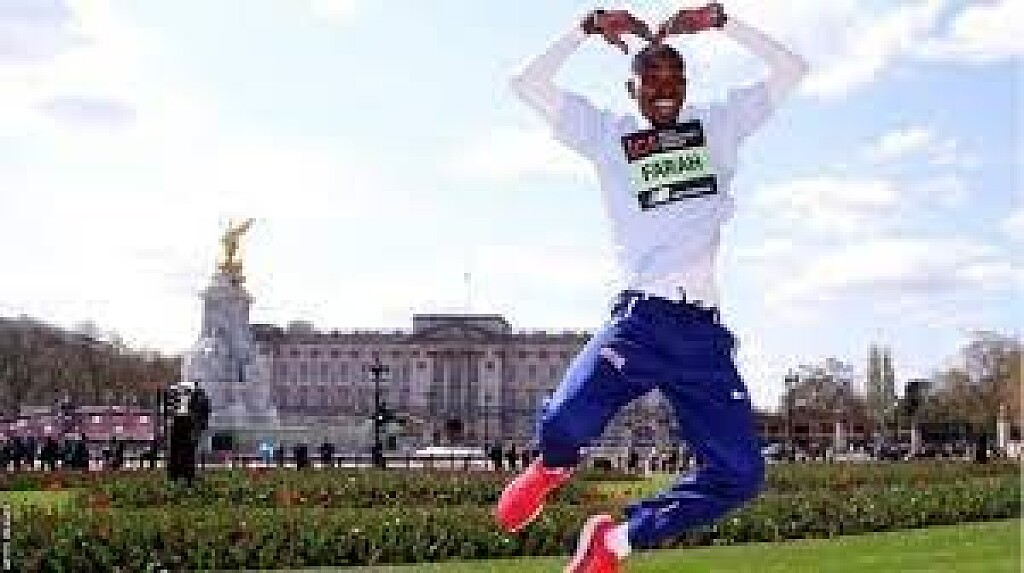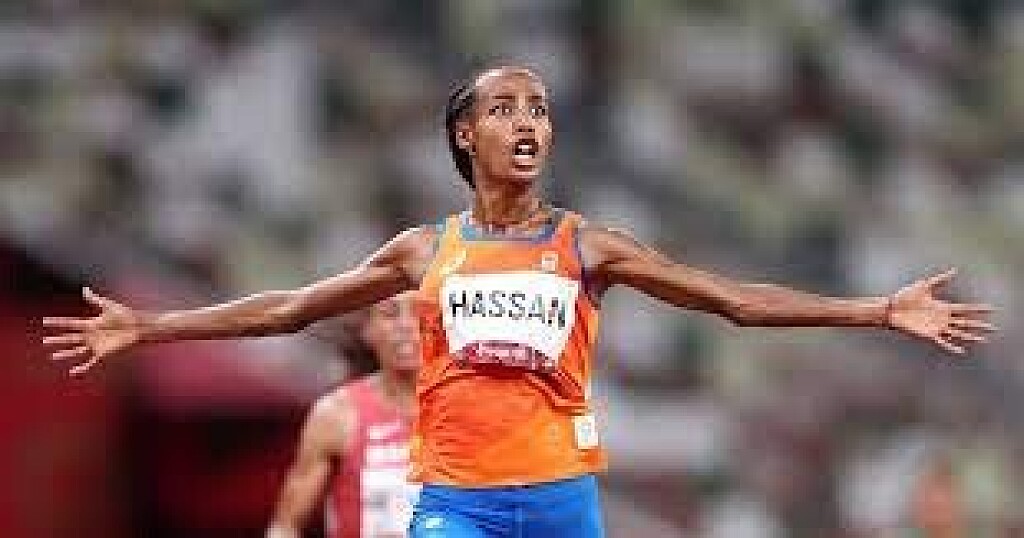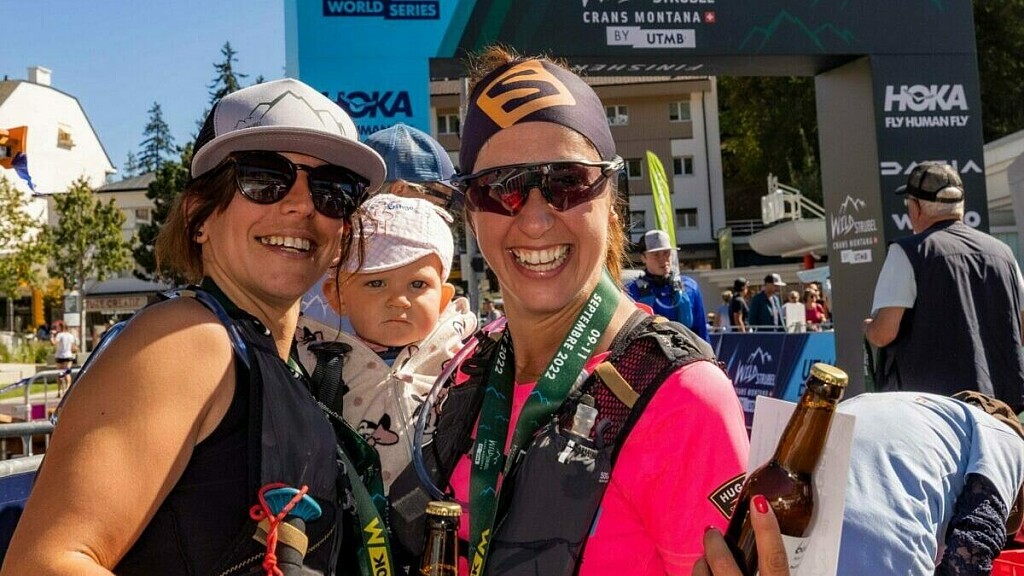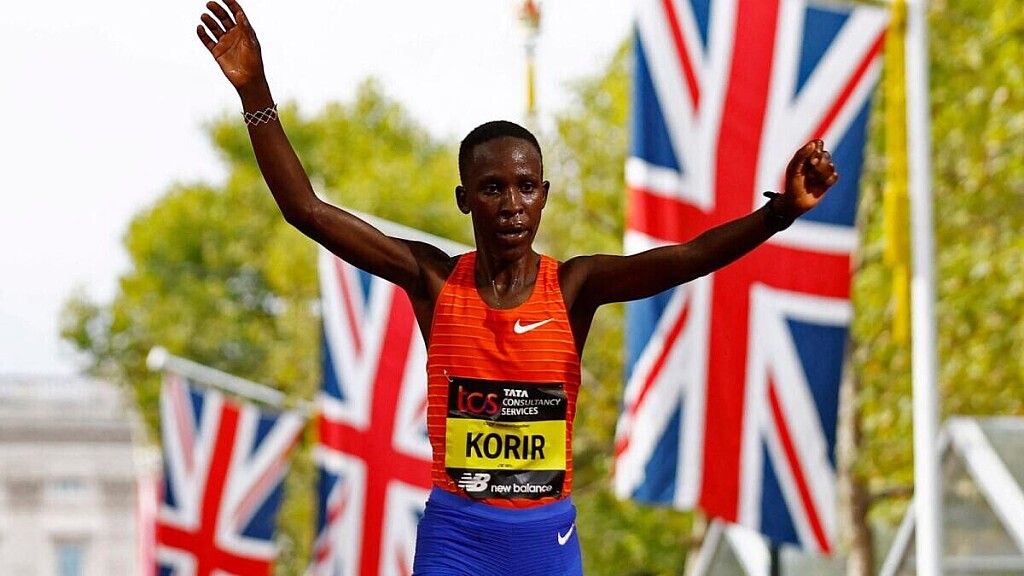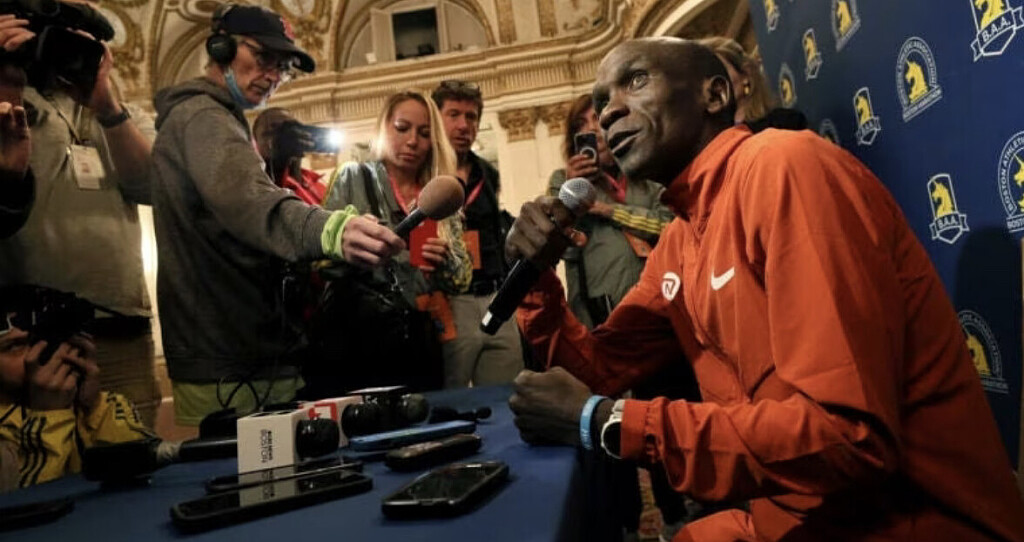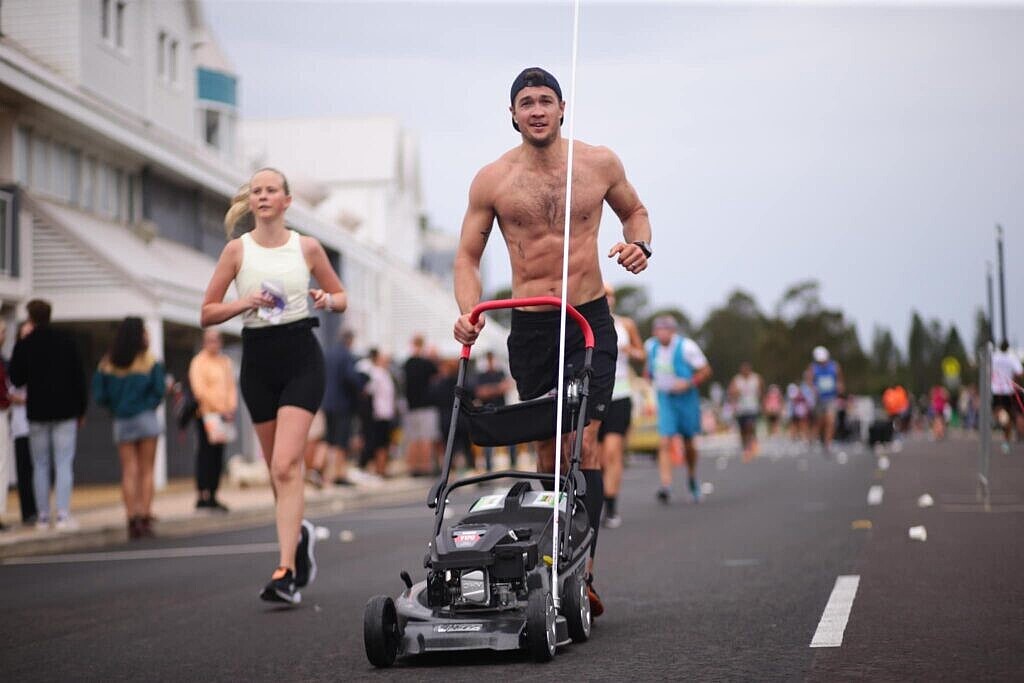Running News Daily
Running News Daily is edited by Bob Anderson in Mountain View, California USA and team in Thika Kenya, La Piedad Mexico, Bend Oregon, Chandler Arizona and Monforte da Beira Portugal. Send your news items to bob@mybestruns.com Advertising opportunities available. Over one million readers and growing. Train the Kenyan Way at KATA Running Retreat Kenya. (Kenyan Athletics Training Academy) in Thika Kenya. Opening in june 2024 KATA Running retreat Portugal. Learn more about Bob Anderson, MBR publisher and KATA director/owner, take a look at A Long Run the movie covering Bob's 50 race challenge.
Index to Daily Posts · Sign Up For Updates · Run The World Feed
Purity Komen upsets Ruth Chepngetich and Daniel Ebenyo wins in Istanbul
Purity Komen was the surprise winner of the N Kolay Istanbul Half Marathon. Overtaking fellow-Kenyan and race favourite Ruth Chepngetich the 24 year-old stormed to her biggest career win with a personal best of 66:30. Course record holder Chepngetich followed in second with 67:18 while Evaline Chirchir made it an all-Kenyan podium with 67:31. Stella Rutto of Romania was the fastest European, finishing 10th with 70:05.
In partly windy conditions hopes for a course record faded in the men’s race as well after a fast first section. 27 year-old Daniel Ebenyo of Kenya was the winner of Turkey’s best quality road race with 59:52. Marokko’s Hicham Amghar took second place in 59:58 and Haftu Teklu clocked 60:03 for third. Britain’s Marc Scott was the best European runner in 63:17 for 12th place.
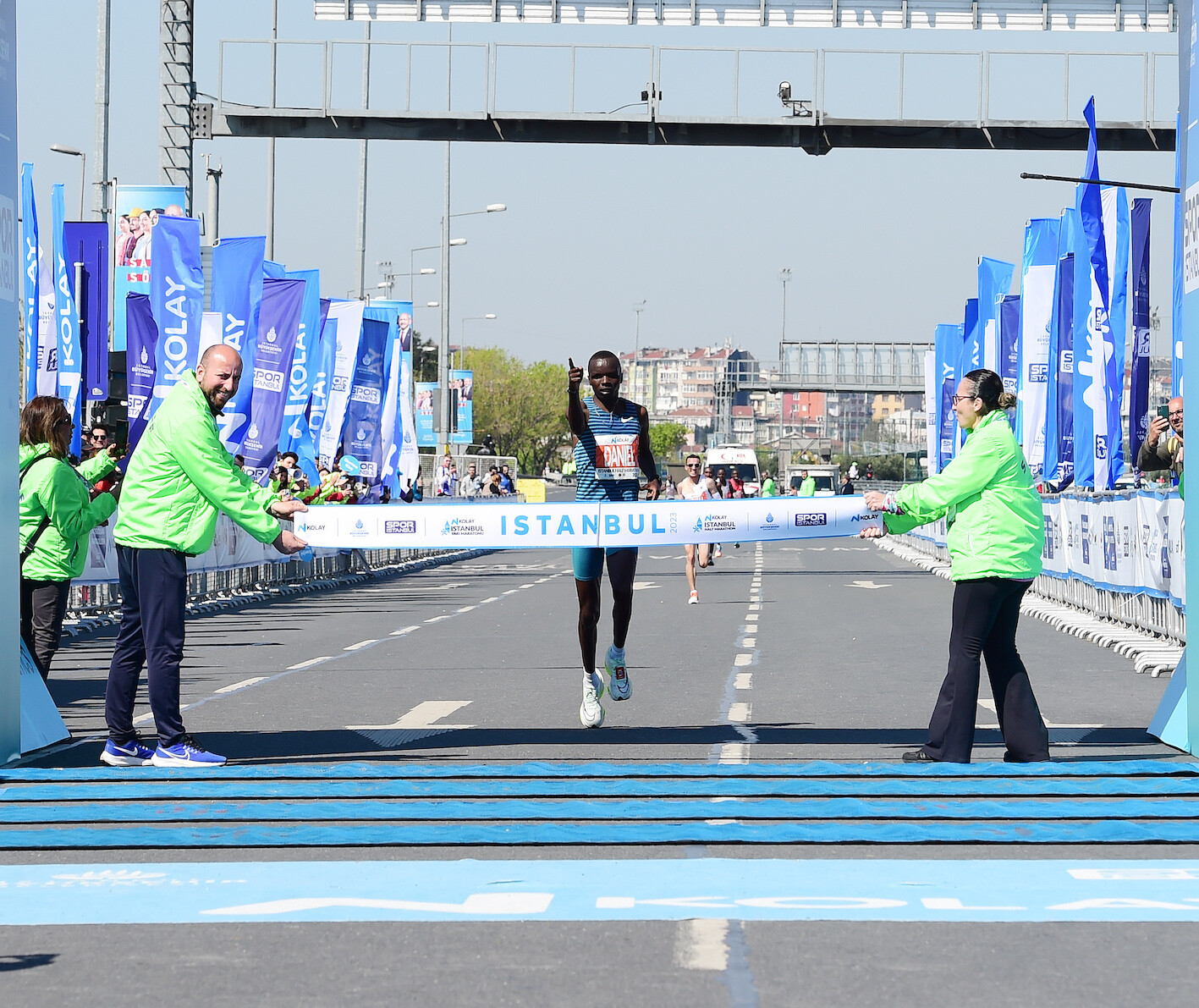
A record number of 12,300 runners competed in the 18th edition of the half marathon and the 10k race staged parallel. Many athletes ran for charity, collecting money for the victims of the devastating earthquake that shook southern Turkey earlier this year. The N Kolay Istanbul Half Marathon is a Gold Label Road Race of World Athletics.
"It was a nice race and especially the men’s elite was very competitive. We are happy that we continue to register record fields. It is always exciting to experience the historic atmosphere here in Istanbul and we are now inviting everyone to be back for our marathon on 5th November,“ said Race Director Reynar Onur.
The women’s race began as expected. Ruth Chepngetich sped away from the field right after the start and was so quick that even the TV cameras missed her on a few occasions early on. Passing the 5k mark in 15:16 the Kenyan was almost on course for breaking her Kenyan record and her Istanbul course record of 64:02, which in 2021 was a world record as well.
However once the 2019 Marathon World Champion came off Galata Bridge and had to run against the wind for almost four kilometers she slowed considerably. At the 10k point her 31:09 split time then indicated a 65:45 finish and her lead had shrunk to only four seconds. Purity Komen, Evaline Chirchir and Ethiopia’s Bosena Mulatie caught her a few minutes later. Then it was Komen, who had only been number nine with a PB of 67:08 on the final start list, who moved ahead before the 15k mark. Chepngetich tried to follow her in a bid to make it six wins from six races in Istanbul, but today she was unable to do so. Purity Komen won the race with 66:30 and became the first woman to beat Ruth Chepngetich on the historic roads of Istanbul.
“My body did not respond after the early part of the race. I don’t know why, but I assume that may be the race came a bit too soon after the Nagoya Marathon in March,“ said Ruth Chepngetich. “I have not yet decided if I will run the World Championships’ marathon or an autumn race. The big goal is the Olympic Games next year and I hope to be selected for the team.“
While Ruth Chepngetich is an experienced marathoner the victory in Istanbul may well have brought Purity Komen closer to her debut at the classic distance. “This victory was unexpected. I was surprised when I suddenly saw Ruth in front of me and was then able to pass her,“ said Purity Komen. “I had hoped to achieve a 65 minutes’ time, but it was too windy today. I now plan to run my marathon debut next year.“
The men’s race began very fast as well with the first couple of split times indicating a finishing time of around 58:00. But as in the women’s competition the pace then dropped considerable once the leading group hit the wind. A group of around ten athletes passed the 10k mark in 28:22, which is sub 60 minutes’ pace.
Two athletes were pushing the pace at the front: Kenya’s Daniel Ebenyo and Hicham Amghar of Morocco, who have PBs of 59:04 and 59:53 respectively. Soon after the 15k point (42:33) Ebenyo took the lead, covering the 16th kilometre in 2:46. Only Amghar was able to follow him, but when Ebenyo indicated to him to help pushing the pace the Moroccan stayed right behind him. Ebenyo then kept pressing ahead and opened up a decisive gap with around 4k to go.
“I hoped to catch Daniel but I am happy with my result. I was going for a PB, but it was not possible in the wind,“ said Hicham Amghar, while Daniel Ebenyo was happy about his first major half marathon victory. “I am excited to have won this race. My aim was to run 59:00 minutes but it was too windy for that,“ said the Kenyan. “I will probably run my marathon debut next year. May be I come back to Istanbul for that.“
Results, Men:
1. Daniel Ebenyo KEN 59:52
2. Hicham Amghar MOR 59:58
3. Haftu Teklu ETH 60:03
4. Charles Langat KEN 60:07
5. Vincent Kipkemoi KEN 60:09
6. Boniface Kibiwott KEN 60:23
7. Benard Biwott KEN 60:47
8. Ashenafi Kiros ETH 61:21
9. Alfred Ngeno KEN 62:24
10. Alene Mekonen ETH 62:32
Women:
1. Purity Komen KEN 66:30
2. Ruth Chepngetich KEN 67:18
3. Evaline Chirchir KEN 67:31
4. Bosena Mulatie ETH 67:43
5. Tigist Gezahagn ETH 68:49
6. Betelihem Afenigus ETH 69:04
7. Beatrice Cheserek KEN 69:14
8. Bekelech Gudeta ETH 69:35
9. Shamilah Kipsiror KEN 69:38
10. Stella Rutto ROM 70:05
(04/30/2023) Views: 604 ⚡AMPN Kolay Istanbul Half Marathon
The Istanbul Half Marathon is an annual road running event over the half marathon distance (21.1 km) that takes place usually in the spring on the streets of Istanbul, Turkey. It is a IAAF Gold Label event. The Istanbul Half Marathon was first organized in 1987. After several breaks it was finally brought back to life in 2015 when the...
more...How the Bolder Boulder 10K Became One of the World’s Most Cherished Road Races
5,000 runners are expected to run this year’s Memorial Day 10K on May 29
At bedtime last week, legendary American distance runner Melody Fairchild regaled her 7-year-old son Dakota with tales of the Bolder Boulder 10K he plans to run this year.
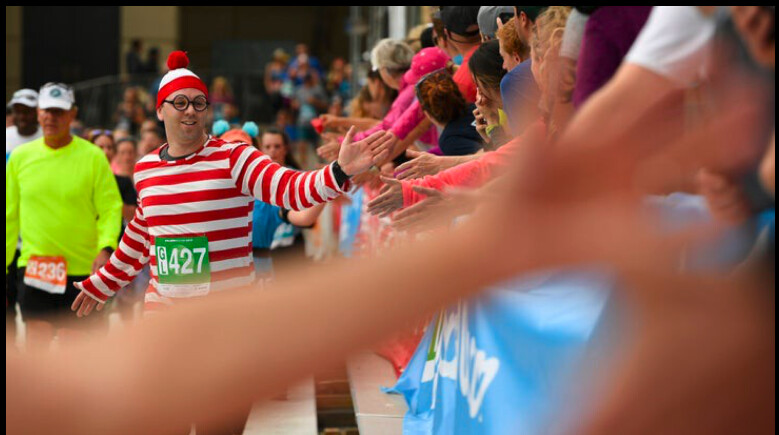
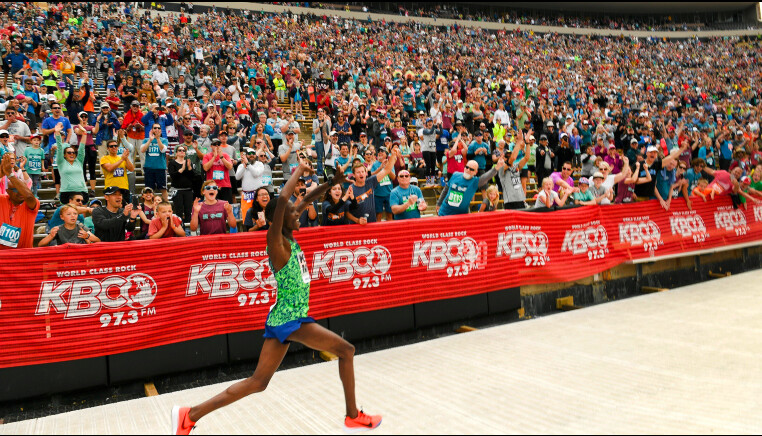
One of the biggest road races in the world for the past several decades, the race sends 40,000 runners through the streets of Boulder, Colorado, on a point-to-point race that ends at the University of Colorado (CU) football stadium, full of cheering spectators and fellow runners.
“I told him it’s an amazing feeling to run into that stadium,” Fairchild says. “When you hit the field, the whole crowd is cheering for everybody. You feel like they’re cheering for you. He had this huge smile on his face.”
And if 50,000 people cheering isn’t enough, there’s also the famous slip-n-slide, numerous bands playing on the course, runners and spectators wearing outrageous costumes, and the military jet flyover by the Colorado Air National Guard you can feel in your bones. Named America’s All-Time Best 10K, it’s likely to be one of the biggest parties you’ll ever attend.
Fairchild recounted for Dakota her experience as the U.S. captain for the Bolder Boulder’s first International Team Challenge professional race in 1998.
“I remember looking out the window and seeing the stadium full. I was so nervous, I thought I was gonna vomit all over the floor,” she says. “When I walked out and they introduced me as the local hometown girl, the whole crowd roared.”
Fairchild ran her first Bolder Boulder at age eight. She went on to win the citizens’ race three times (1989, 1990, 1991) when she was a record-setting high schooler, became an All-American and NCAA champion at the University of Oregon, and then qualified for the U.S. Olympic Trials in the 10,000-meter run and marathon as a professional runner. But the Bolder Boulder has always held a special place in her heart, which is why she has continued to run it through the years and why she’s so eager to introduce Dakota to it.
The idea for the Bolder Boulder germinated in the mind of a father watching his five children participate in all-day track meets. It was the summer of 1978 at the upswing of the original American running boom, and runner and local businessman Steve Bosley had grown frustrated with the disorganized events and parents berating their children for not running fast enough.
Bosley, then 37, reached out to his friend, Boulder resident and international running icon Frank Shorter, a two-time Olympic medalist in the marathon, for help designing a race that would serve their community and promote the sport of running. The race would not only become a Colorado icon, it set a gold standard for road races around the world and helped elevate women’s running in unprecedented ways.
During the spring of 1979, Cliff Bosley, the current race director, went door to door with his Boy Scout troop, passing out posters to encourage neighbors to run his dad’s inaugural race. The poster announced a 4,000-participant cap and enticed Boulderites to “Run with Frank Shorter and Ric Rojas!” for a mere $6.50 entry fee. (Rojas was another local elite athlete who would go on to win the inaugural race in 1979. His daughter, Nell Rojas, a current professional runner, won the women’s citizen’s race 40 years later in 2019.)
Bosley recalls giving a man in his front yard a poster who threw it back in his face in disbelief. “‘Yeah right, 4,000!’ the man scoffed. “I was just a 12-year-old kid. You believe everything your parents tell you. I thought, ‘Dad says it could happen—why won’t it?!’”
The inaugural race saw 2,700 registrations. The next year, it doubled in size and live entertainment was added to the celebration. Participation continued to soar in the ensuing years and decades, eventually reaching 50,421 in 2010. With an average of 45,000 finishers over the past 10 years, it’s now the seventh-largest road race in the nation and the largest Memorial Day celebration in the U.S.
From its inception, the Bolder Boulder 10K offered equal prize money for the female and male winners. In 1984, it created a separate elite race from the citizens’ race. There was also a deliberate split in the women’s and men’s elite race so that both races could be showcased equally and covered live on the local TV broadcast. Today, it offers one of the largest non-marathon prize purses in the U.S., but this did not come without a lot of work.
Initially road races were precluded from paying prize money to athletes because it changed their amateur athlete status, preventing them from competing in the Olympics. In the early 1980s, Steve Bosley, then the president of the Bank of Boulder, worked with two local attorneys, Frank Shorter, and TAC (The Athletics Congress which was then the name of the national governing body for the sport; now it’s known as USATF), to create a mechanism using trust accounts for athletes to earn prize money. It was then paid into athletes’ individual trust accounts so they could draw living and training expenses. At the time these accounts were called TACTRUST Accounts, and the Bank of Boulder was the steward of 95 percent of all of these accounts on behalf of both American and international athletes from around the world.
One of the most circulated photos of the Bolder Boulder 10K is that of Shorter, the 1972 Olympic marathon champion, winning the 1981 race— the first time the race finished in the University of Colorado’s Folsom Stadium. But that same year, Ellen Hart, then 23, won the women’s race—although she says there was no finish line tape for the female winner.
“It was the most exciting thing I had ever seen,” she recalls. “Since I was a little girl, I had wanted to go to the Olympics. I thought, Oh my god. This is like the Olympics! I traveled to races all over the world and the BB was my favorite race.”
Hart would move to Boulder in 1982, and then win the race again in 1983 before the four-year reign of Portugal Olympian Rosa Mota. In many ways, Hart says, her success in the Bolder Boulder launched her career as a professional athlete.
She went on to place 11th at the inaugural women’s U.S. Olympic Trials Marathon in 1984, set an American record in the 30K, and won 18 world championship titles in triathlon and duathlon racing. “In terms of women’s sports, the Bolder Boulder was certainly more forward-thinking than any other race I ever attended,” Hart says.
The race organization was also ahead of its time when it began the Women’s High Altitude Training Camp, something it did not offer for men, in 1989. The 100-day program was designed to bring five talented post-collegiate female runners to Boulder to train prior to racing Bolder Boulder. Runners were placed in volunteer host families, provided an elite coordinator and a trail guide, and given access to a local gym and the university’s track to train.
New Jersey runner Inge Schuurmans McClory was a member of the 1990 team.
“I really didn’t feel worthy of national attention, but I applied for the program not even thinking I was going to get in,” she says. She was not only accepted, but she fell in love with Boulder and stayed.
“I went to graduate school here. I met my husband here. I coached cross country and track at CU. It sort of was the launching pad for the rest of my life, and I owe it to the Bolder Boulder and that high-altitude training camp,” says McClory, now a physician’s assistant who has trained cardiac patients—the Brave Hearts—for the Bolder Boulder since 2000.
Since 1996, there have consistently been more women (average 53-54 percent) than men completing the race. Cliff Bosley attributes this to his mom creating a walking division in 1984 so that her father, diagnosed with prostate cancer, could participate.
“We kind of look at it as a placeholder,” says Bosley, “You come in as a walker and now you’re on the continuum. Let’s help you become a jogger. Let’s help you become a racer.” This exemplifies the Bolder Boulder’s rallying cry, “Oh Yes You Can!” that it established in 1979.
The Bolder Boulder has always been defined by its strong community involvement, which includes an eager network of volunteers, aid stations staffed by local running groups, and the thousands of spectators who line the streets and fill the stadium. Historically, the race donates more than $100,000 to local nonprofits and community groups that volunteer. Even during the pandemic, the race still found a way to contribute.
“Knowing we could not stage the Bolder Boulder in-person, we created a virtual event called the VirtuALL 10K and offered it at no cost,” Bosley says. Thousands of T-shirts, designed for the 2020 race that went unused, were donated to shelters.
Another Bolder Boulder program that supports the community is the BB Racers Club. Created in 1996, the program prepares children for the race, so their experience is a positive one. Initially started as a middle school program, this club now includes elementary schools. Children who are signed up are given a special training program, coach, and starting wave. Fairchild’s Boulder Mountain Warriors club, of which her son Dakota is a participant, is training a large number of BB Racers this year.
Bosley is prepared for up to 45,000 participants at this year’s race on May 29. And just as they did 44 years ago, race organizers will serve participants a sack lunch and send them a postcard in the mail with their finishing place, pace, time, and ranking in their age group.
“I can still remember checking the mailbox every single day until it came,” says Fairchild. “It makes me emotional just thinking about how much attention to detail they’ve always given hundreds of thousands of people. They care so much. It’s not an accident that they are the best 10K in the world.”
(04/30/2023) Views: 546 ⚡AMPby Outside
Five Lessons from the Marathon Goat and his team
THE MOST REMARKABLE aspect of the fastest marathoner in history is how unremarkable—and how accessible—his training is. Eliud Kipchoge has the best resources in the world at his disposal, but rather than relying on treadmills that cost more than a Lexus or recovery devices worthy of NASA missions, he follows simple training tenets that maximize how he recovers, what he eats, his mindset, and the conditioning he does after his runs.
1. SLEEP LIKE YOUR RUN DEPENDS ON IT
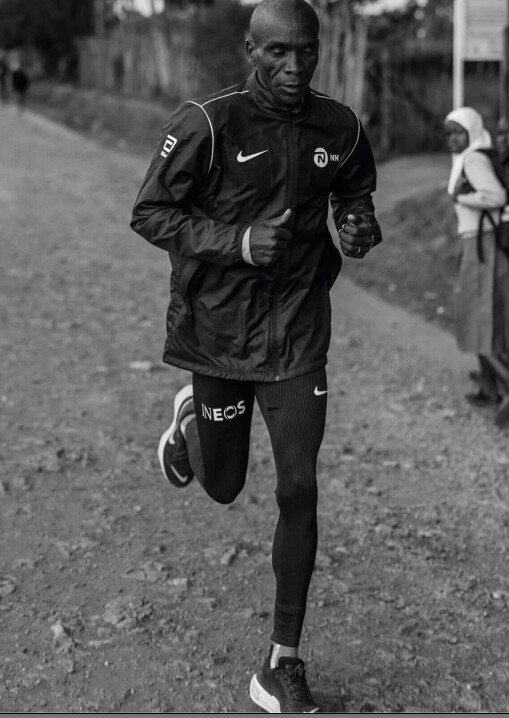
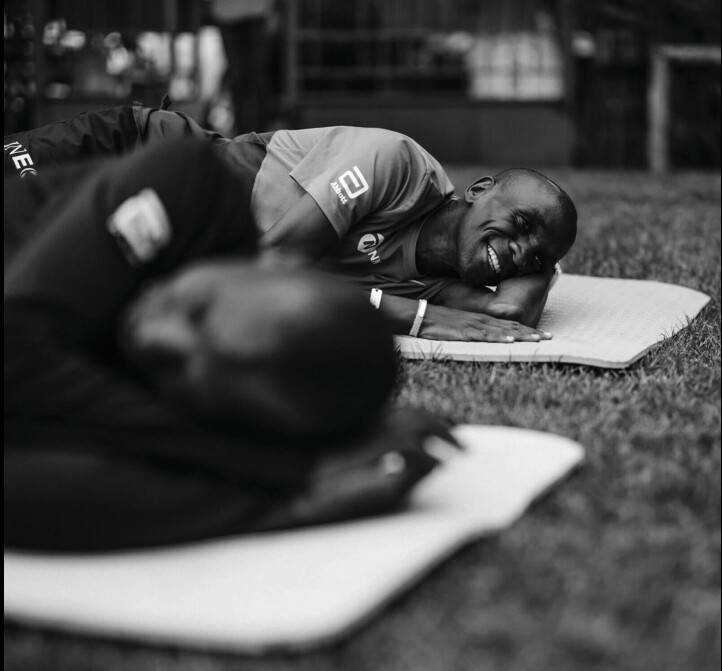
ELIUD KIPCHOGE SLEEPS up to 9 hours at night, often also taking an hour-long midday nap. Most of us don’t have the time or the 120-mile weekly workload to clock that much shut-eye, but we can still benefit from Kipchoge’s sleep hygiene cues.
At least 30 minutes before bed, he turns off or puts down all electronics. The habit reduces his exposure to blue light, known to delay the release of melatonin, leading to a decrease in sleepiness, says Kannan Ramar, MD, past president of the American Academy of Sleep Medicine. Then, instead of scrolling through social media (he prefers Facebook), Kipchoge winds down by reading at least two chapters of a book.
“If I have enough sleep, my body and my mind are free of stress and ready to go with the programs,” says Kipchoge.
While you’re asleep, your body is doing more than resting. Crucially, your pituitary gland releases growth hormone, which helps your muscles repair and grow, says Ramar.
Most runners don’t need a nap if they consistently get the recommended 7 to 9 hours, Ramar says. But when you don’t hit that target, naps can help counter short-term sleep loss and provide an energy boost for a late-day run, Ramar adds. He suggests a 20-minute doze between noon and 3 p.m. to relieve fatigue. Napping longer than 20 minutes can leave you feeling groggy due to entering a deep-sleep state, Ramar says.
2. REVIVE SORE MUSCLES WITH AN ICE BATH
TWICE A WEEK, Kipchoge takes a 10-minute plunge in his camp’s ice baths to aid his postrun recovery. It may not be pleasant, but studies find that cold water immersion (CWI) therapy like Kipchoge’s ice bath is effective. “Most research shows that over 48 hours, athletes have reported an improvement in DOMS [delayed onset muscle soreness] and sometimes corresponding improvements in strength and/or flexibility,” says Rebecca Stearns, PhD, a professor of kinesiology at the University of Connecticut.
Cold water reduces the body’s temperature, which narrows the blood vessels. This flushes metabolic waste from inflammation out of muscles to speed recovery, says Stearns. Water temperature between 50 and 59 degrees Fahrenheit for 10 to 15 minutes is cold enough to produce results, she adds.
You can set up an ice bath at home by filling a tub halfway with cold water. Then, depending on your tap temperature, add one to three 5-pound bags of ice. Stearns suggests trying CWI once or twice a week and checking with your physician to make sure you don’t have any contraindications for doing ice baths.
“It’s very intense. It’s not for everybody,” Kipchoge says. “You need to learn to relax and learn to absorb pain.”
3. UPGRADE YOUR DIET WITH PROTEIN
KIPCHOGE HAS ALWAYS maintained a highcarb diet, but after running 2:00:25 in Nike’s 2017 Breaking2 project, he began working with exercise biochemist Armand Bettonviel to improve his nutrition and further push his performance. Bettonviel, who develops nutrition plans for elite athletes, sought to up Kipchoge’s protein intake to aid his recovery as well as help to build and maintain his lean muscle.
“I’ve noticed a difference since I started to be serious about nutrition,” Kipchoge says. “Recovery is very fast, I have a lot of energy.”
While Kipchoge’s exact protein intake is confidential, Bettonviel suggests runners aim for 1.5 to 2 grams of protein per kilogram of bodyweight. For a 150-pound runner, that’s 102 to 136 grams.
Kipchoge’s meals feature Kenyan staples like ugali (a cornmeal porridge), potatoes, rice, chapati (a wheat flatbread), managu (an iron-rich leafy green), beans, whole-fat milk, eggs, chicken, and beef. Meat is only served about half the week, so to hit his protein goal Kipchoge drinks mala, a local sour milk, says Bettonviel. Every 6 ounces has about 7 grams of protein, making it comparable to kefir found in most stateside dairy aisles.
Bettonviel also introduced a high-protein porridge to the camp menu (Kipchoge eats it with fruit after training) made with whey protein and teff, an ancient grain that offers 10 grams of protein per cooked cup. You can DIY by mixing a half scoop of protein powder with whole-grain teff—stocked at many grocery stores and sold on Amazon—and cook it similarly to oatmeal. Alternatively, Kodiak Cakes makes oatmeal with whey protein and 12 grams of protein per serving.
4. MEDITATE TO BUILD MENTAL STRENGTH
KIPCHOGE IS AN especially mindful runner, says his coach Patrick Sang. While training and racing, he focuses on his breath and his movements, and aims to minimize outside distractions. It’s a skill that helps him embrace the pain and challenges of a marathon.
Mindfulness—a practice of focusing your awareness on the moment, with a kind and curious attention in a nonjudgmental attitude—can benefit any runner, says Corrie Falcon, director of mindfulness-based training for athletes at the University of San Diego Center for Mindfulness. Resting your attention on elements of a present moment, like your breath, heartbeat, or even a drip of sweat, can prevent you from getting caught in an inner dialogue mid-training or competition that may unravel your focus.
“In moments of high stress before or during a race, mindfulness has been shown to reduce the production of stress hormones, reduce blood pressure and heart rate, improve emotional regulation, and promote relaxation in the body,” says Tara Zinnamon, PhD, a neuroscientist and meditation teacher.
Kipchoge credits his focused, spartan lifestyle for developing mindfulness, but it can also be cultivated through a consistent mindfulness routine. Even just 12 minutes of guided meditation five days a week for one month can be effective, says Amishi Jha, PhD, a professor of psychology at the University of Miami.
If guided meditation seems outside your comfort zone, Falcon recommends a strategy you can try while running. She describes it as a “sense practice.” Run in silence. For two minutes, focus on what you see, then focus on sound, followed by what sensations you feel, and then smell. “And when you have a thought, label it ‘thought’ or ‘thinking’ and return to the present moment experience through the senses,” says Falcon.
5. BUILD BONUS ENDURANCE ON A BIKE
TO BOOST HIS training volume without increasing his risk of a running injury, Kipchoge rides a stationary bike for an hour twice a week after his runs.
Cycling is a concentric (shortening) muscle-contraction activity, which is easier for muscles to recover from, says Colorado-based coach Bobby McGee, who has worked with runners and triathletes (including Olympic gold medalist Gwen Jorgensen) for more than three decades. In running, the primary loading is eccentric (lengthening), which is more demanding and damaging.
“A one-hour endurance run is limited by leg fatigue, not heart and lung fatigue. A two-hour ride doubles the cardio conditioning but has minimal leg-muscle damage,” says McGee.
Kipchoge spins at an easy pace, which he says also helps reduce muscle soreness. “Cycling is a far more effective recovery modality than an easy run, especially for bigger runners with a slower cadence,” says McGee. He recommends cycling no more than twice weekly and for less than 20 percent of your overall training time.
(04/30/2023) Views: 721 ⚡AMPWho Will Run the World Championships Marathon for the U.S. This Summer?
The three men and three women are selected by a descending order time list. But not everyone accepts their spot. Over 9 days in August, the World Athletics Championships will take place in Budapest, Hungary. The women’s marathon is scheduled for August 26, and the men’s is August 27, the last day of competition.
USA Track and Field (USATF) uses different selection procedures for this event than it does for the Olympic Games. Instead of using a Trials race, as it does for the Olympics, USATF offers spots to athletes using a descending order time list for certain marathons run between December 1, 2021, and May 30, 2023, as long as those athletes have met the qualifying criteria set by World Athletics. (The rules are complicated. For instance, the Boston Marathon is not on the list of “World Athletics approved” courses, but USATF is allowing times run at Boston in 2022 and 2023 for the descending order list.)
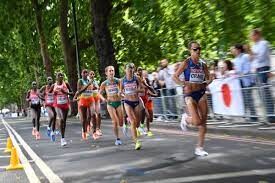
Not every American athlete will accept a spot, if offered. Some instead will choose to focus on a fall marathon, where they can earn substantial appearance fees and prize money that aren’t offered at worlds. Others won’t race at all this summer or fall, and instead they’ll train for the Olympic Marathon Trials in February 2024. How is it likely to shake out? Runner’s World reached out to the top seven men and women currently on the list or their coaches or agents to inquire about their plans. The window to run a qualifying time, however, remains open until the end of May. So a top performance in the next month could shake up the list.
Here’s what they said:
Women
Emily Sisson, 2:18:29, 2022 Chicago Marathon: Not likely, per her agent, Ray Flynn
Keira D’Amato, 2:19:12, 2022 Houston Marathon: Yes, if offered a spot
Betsy Saina, 2:21:40, 2023 Tokyo Marathon: No, she is focusing on a fall marathon
Sara Hall, 2:22:10, 2022 World Championships marathon: Has not yet decided
Emma Bates, 2:22:10, 2023 Boston Marathon: Not likely, per her agent, Ray Flynn
Susanna Sullivan, 2:24:27, 2023 London Marathon: Yes, if offered a spot
Aliphine Tuliamuk, 2:24:37, 2023 Boston Marathon: Will consider if offered a spot, per her agent, Hawi Keflezighi
Wild card: Will Molly Seidel run a May marathon?
Men
Conner Mantz, 2:08:16, 2022 Chicago Marathon: Not likely, per his agent, Ray Flynn
Scott Fauble, 2:08:52, 2022 Boston Marathon: No Elkanah Kibet, 2:09:07, 2022 Boston Marathon: Yes, currently deployed with the U.S. Army in Poland but will accept a spot if offered
Zachery Panning, 2:09:28, 2022 Chicago Marathon: Yes, per coach Kevin Hanson
Leonard Korir, 2:09:31, 2023 Paris Marathon: Did not immediately respond to a message from Runner’s World
Galen Rupp, 2:09:36, 2022 World Championships marathon: No, will run a fall marathon, per his agent, Ricky Simms
Futsum Zeinasellassie, 2:09:40, 2023 Rotterdam Marathon: Will consider if offered a spot, per his agent, Hawi Keflezighi
Wild card: Biya Simbassa runs the Prague Marathon, his debut, on May 7.
(04/30/2023) Views: 605 ⚡AMPby Runner’s World
Indy Mini-Marathon named nation's best half-marathon
The Greatest Spectacle in Running is getting national attention.
The OneAmerica 500 Festival Mini-Marathon has been named the nation's best half-marathon as part of USA TODAY's 2023 10Best Readers' Choice travel awards.

According to USA TODAY, the half-marathon is the fastest-growing race distance in the United States with some 2 million runners participating annually.
The public had the opportunity to vote on their favorite race and in the end it was the OneAmerica 500 Festival Mini-Marathon that came out on top.
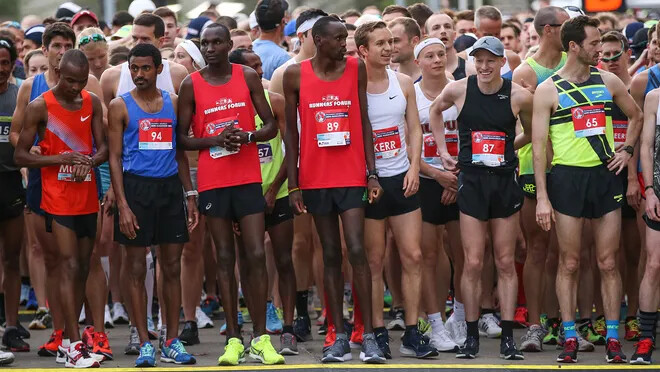
The marathon, often referred to as the Indy Mini, takes runners through downtown Indianapolis, past historic landmarks and famous sites like the Indianapolis Motor Speedway.
It's one of the nation's largest half-marathons, bringing some 35,000 runners to the Circle City each year. It's also part of the 500 Festival, which leads up to the iconic Indianapolis 500.
The Indy Mini beat the RunTheBluegrass Half Marathon in Lexington, which is known for being "America's prettiest half-marathon," and the Hippie Half, which brings people to Gregory, Michigan every summer to camp, run, listen to live music and enjoy a festive atmosphere.
(04/29/2023) Views: 425 ⚡AMPU.K. Athletics bans official for cyberbullying female athlete
British Athletics official Paul Baxter faces a three-and-a-half-year ban from the sport after he was found to be cyberbullying and harassing a female athlete on Facebook.
Baxter was suspended by U.K. Athletics for making several inappropriate posts toward a woman in a popular Facebook running group I Was, Or Am A Runner!

Baxter, a prominent figure in the northern U.K. Athletics community, was sanctioned for harassing Katey Ross, who waived her right to anonymity, according to The Times.
In December 2021, Baxter made a number of inappropriate posts on Facebook about Ross which made her feel intimidated, alarmed, and distressed for her personal safety.

Several weeks later, he created a specific post entitled ‘Who is Katey Ross?” and tagged some 52 members of the Facebook group. Baxter had already been previously removed from the group prior to the post and had re-joined under a different name.
Baxter argued to the U.K. Athletics panel that his posts in the group were in reference to the lyrics of a song, unrelated to Ross. The disciplinary panel did not accept his explanation.
According to the report, Baxter violated four U.K. Athletics Code of Conduct rules for officials and was sentenced to a three-and-a-half-year ban from athletics. If Baxter plans to return to the sport after serving his ban, he must attend a training course on equality, diversity, inclusion and anti-bullying.
These are the four Code of Conduct rules Baxter violated:
Code 2.6: Avoid swearing and critical, abusive language or irresponsible behaviour, including behaviour that is dangerous to others, acts of violence, bullying, harassment and physical and sexual abuse.Code 3.1: Respect the rights, dignity and worth of every athlete and others involved in athletics and treat everyone equally.Code 3.3: Act with dignity and display courtesy and good manners towards others.Code 3.4: In no way undermine, put down or belittle other officials, athletes, coaches or practitioners.
Ross told The Times: “The behaviour of Baxter and the other men who contributed to his abusive posts sadly illustrates the wider problem of misogyny in sport; a problem women in all areas of athletics face.”
“Reporting abuse of any kind isn’t easy,” said Ross. “Women who raise awareness of abuse in sport being attacked online by men for daring to do so happens far too often.”
(04/29/2023) Views: 530 ⚡AMPby Running Magazine
Kenyan Ruth Chepngetich wants to make it six out of six in Istanbul
Ruth Chepngetich, one of the world’s leading long distance runners, will be the star attraction of the N Kolay Istanbul Half Marathon on Sunday. The Kenyan, who broke the world record on this course with 64:02 two years ago, has a unique win streak in Istanbul.
The 28 year-old competed five times in Turkey’s two major international road races, the half marathon and the marathon. She always won and broke the course record on each occasion. There is no other city in the world where Ruth Chepngetich participated more often in a road race. On Sunday the Kenyan World Marathon Champion from 2019 wants to make it six wins from six races in Istanbul. With her PB of 64:02 she is currently the third fastest half marathon runner of all times and leads a very strong women’s start list, which features 14 runners with personal bests of sub 68:00. Fellow-Kenyan Charles Langat head the men’s list with a PB of 58:53. There are seven men in the field who have already run below the hour mark.
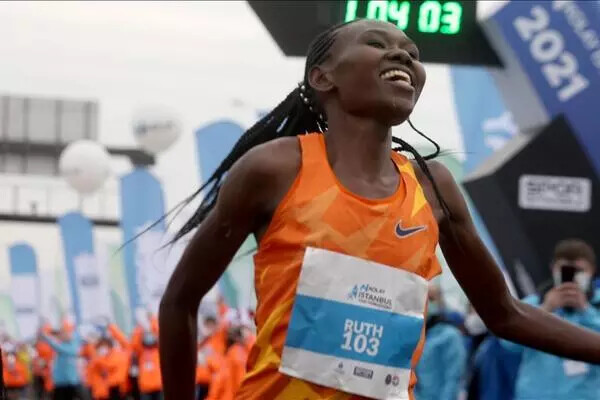
A record number of 12,300 runners will be competing in the half marathon and the 10k race staged parallel on Sunday. This is an increase of participants of close to 25 percent compared to the previous entry record from 2022. The 18th edition of the N Kolay Istanbul Half Marathon, which is an Elite Label Road Race of World Athletics, will start at 9.30 am and will be streamed worldwide at: https://youtube.com/@IBBSporIstanbul
“Turkey has gone through a difficult period due to disasters. During these times sport is the best way to stand up. We are looking forward to the N Kolay Istanbul Half Marathon, it will be a very competitive race. Ruth, who broke the world record on this course in 2021, is with us again. May be this year we will see another record,“ said Race Director Renay Onur.
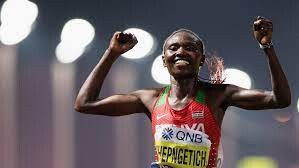
A large number of runners who have entered the N Kolay Istanbul Half Marathon will be running for charity on Sunday, collecting money for the devastating earth quake that hit the southern area of the country in winter. One group of charity runners, that is close to race organizer Spor Istanbul as it was founded by Renay Onur, will have over 1,250 runners alone on Sunday.
Turkey’s Yayla Gönen, who is on the women’s elite start list with a PB of 70:26, was in a training camp in Diyarbakir when the earth quake struck. The 26 year-old was lucky since the house in the camp did not collapse. But it was a struggle for her to get food for a week and she was then brought back to Istanbul by her club IBBSK. Despite this she still managed to run a marathon PB of 2:29:10 in Sevilla in February. Yayla Gönen is the favourite to win the Turkish Half Marathon Championships which are included in Sunday’s event.
“Istanbul is a beautiful city, the people and their support are amazing. It is my favourite city and I have to thank the race organisers for inviting me back once again“ said Ruth Chepngetich, who last raced on 12th March when she won the Nagoya Marathon in a world-class time of 2:18:08. “My recovery after the marathon was good and after a two-week-break I started preparing for the N Kolay Istanbul Half Marathon. Compared to my race here in 2021 I can say that my form is better now.“ However the Kenyan record holder does not have a certain time goal.
"My goal is to win and as always in this race I will do my best,“ said Ruth Chepngetich, who will have some additional motivation since her daughter Shalyne has accompanied her to Istanbul. “My daughter always motivates me a lot. Since she is here with us I will have to make sure not to disappoint her!“
Ruth Chepngetich knows that it will not be an easy task to make it six wins from six in Istanbul on Sunday. Ethiopia’s Bosena Mulatie has a strong PB of 65:46 while fellow-Kenyan Evaline Chirchir has run 66:01.
Charles Langat is the fastest runner on the men’s elite start list. He improved to an impressive 58:53 when he won the Barcelona half marathon in February. With this time the 27 year-old is currently the third fastest half marathoner in the world this year. “If the weather conditions are good and the course is fast then I will try to run sub 59:30,“ said Charles Langat, who also won the Lisbon Half Marathon last autumn.
Fellow-Kenyan Daniel Ebenyo is the number two on the start list with a PB of 59:04 while defending champions and course record holder Rodgers Kwemoi of Kenyan had to withdraw due to an injury. Great Britain’s Marc Scott is the fastest European runner on the list with a personal record of 60:39.
(04/29/2023) Views: 503 ⚡AMPby Runners Web
N Kolay Istanbul Half Marathon
The Istanbul Half Marathon is an annual road running event over the half marathon distance (21.1 km) that takes place usually in the spring on the streets of Istanbul, Turkey. It is a IAAF Gold Label event. The Istanbul Half Marathon was first organized in 1987. After several breaks it was finally brought back to life in 2015 when the...
more...U.S. Olympian stripped of national title after positive cannabis test
On Tuesday, The U.S. Anti-Doping Agency (USADA) reported the one-month suspension of U.S. Olympian Tara Davis-Woodhall after a positive cannabis test in February 2023. The test came after Davis-Woodhall won the long jump at the 2023 USA Indoor Track and Field Championships, held in Albuquerque, N.M. As a result, she will have to give up her national title and she will forfeit any medals, points and prizes accumulated between Feb. 17 and March 21.
Davis-Woodhall tested positive for a urinary metabolite of THC (the active ingredient in cannabis) in a sample collected on Feb. 17, according to the report. The use of cannabis is still banned in competition by the World Anti-Doping Agency (WADA) and usually holds a penalty of up to three months. Davis-Woodhall’s period of ineligibility was reduced to one month because her use of the substance occurred out of competition and was unrelated to sports performance, per USADA.
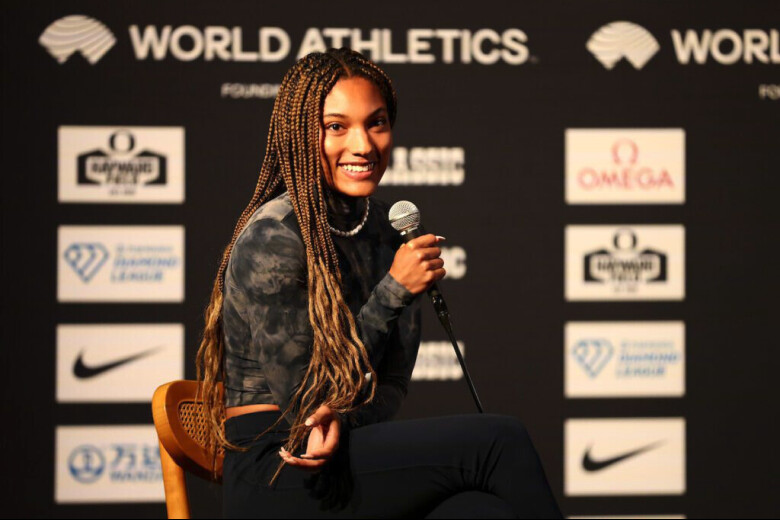
The 23-year-old also successfully completed a substance abuse treatment program.
Davis-Woodhall qualified for the 2020 Summer Olympics in the women’s long jump, where she placed sixth in the final. She is married to a prominent U.S. Paralympian Hunter Woodhall, who won medals at the previous two Paralympic Games.
In 2021, WADA altered its code involving THC, allowing for a reduced three-month sanction if the athlete establishes that their use of the substance occurred out-of-competition and unrelated to sports performance. This came after the July 2021 suspension of Sha’Carri Richardson, who lost her chance to compete at the 2020 Olympics after she tested positive for the substance. Richardson also served a one-month suspension and had her U.S. outdoor 100m title revoked.
Richardson’s suspension caused a stir on social media, with many siding with the U.S. sprinter. Even Toronto rapper Drake weighed in on the suspension, name-dropping Richardson in the song No Friends in the Industry of his Certified Lover Boy album.
(04/29/2023) Views: 573 ⚡AMPby Running Magazine
Who Would Be the #1 Pick If Running Had a Draft?
Here are the runners you’d want to build a franchise around.
It's NFL draft weekend. A weekend of hope for fans whose favorite teams underperformed last year or lost some key players in trading wars. The Carolina Panthers have the first pick this year, and they desperately need a quarterback to build their team around for the foreseeable future.
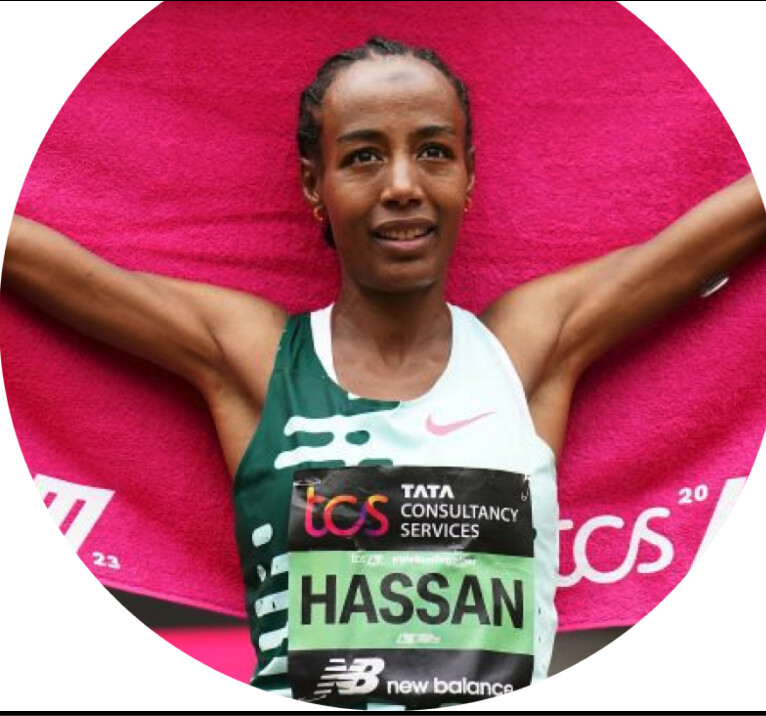
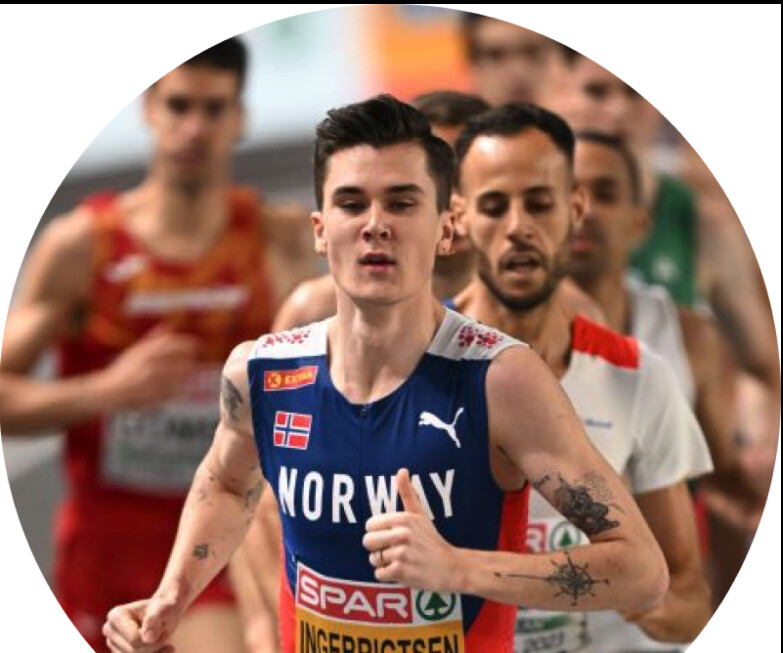
On Thursday, they selected former Heisman winner Bryce Young, of Alabama, to fill that role. That got the editors at Runner’s World thinking: who would go first overall in the sport of running? First, we need to set some parameters for our fantasy scenario. All running events contested at the Olympics—from the 100 meters to the marathon—are included. (Field events can have their own draft). And athletes must be currently competing, so no FloJo or Michael Johnson.
We conducted a quick office poll and consulted our track nerds to come up with a shortlist of three women and three men. Here’s who we’re picking.
Women
Sifan Hassan
Distance, The NetherlandsIf you watched her storm to a win at last week’s London Marathon, you probably already agree with me—Sifan Hassan has the best range in the world right now. Frankly, it’s not even close. At the 2020 Olympics, the Dutch runner pulled off an insane triple, winning the 5,000 meters, 10,000 meters, and capturing bronze in the 1,500 meters. She had a down year in 2022, missing the podium at the World Championships, but she reasserted herself as a force this year after her comeback win at London. Her only draft stock drawback? At 30 years old, she might not be the best investment for a team looking far down the line.
Sydney McLaughlin-Levrone
Hurdles, United StatesThe world record holder in the 400-meter hurdles is a sure-fire pick for a team looking for star power and incredible consistency. She’s a monster talent—making the Olympics at just 16 years old—and since then, now 23, she’s only gotten better. Last year, at the World Championships, she set the world record, beating a loaded field. But McLaughlin-Levrone’s upside is in her versatility: she’s world class in the 110-meter hurdles as well, and was a ringer on Team USA’s gold-medal winning 4x400-meter relay team at the 2020 Olympics. Syd the Kid is a no-brainer for a team that needs a recognizable, long-term talent in the sprints.
Letesenbet Gidey
Distance, Ethiopia The Ethiopian star’s range is not quite as expansive as Hassan’s, but at 25, she’s already an instant threat in whatever she’s entered in. She’s the current world record holder in the 5,000 meters, 10,000 meters, and half marathon—plus, she boasts a marathon PR of 2:16:49. Gidey is a perfect fit for a team looking to sacrifice a bit of experience for one of the top up-sides in distance running.
Men
Jakob Ingebrigtsen
Distance, NorwayThe mid-distance prodigy hasn’t raced much on the roads, but he’s almost a lock in anything from 1,500 meters to 5,000 meters. He’s starting to run out of accomplishments at only 22 years old: Olympic gold? Check. World record? Check. Ingebrigtsen will do well on a team that needs a vocal leader, and who can back up his talk with his speed. Plus, he’s got swagger, and the entire country of Norway behind him.
Grant Holloway
Hurdles, United StatesI have a soft spot for consistent hurdlers, I guess. Sure, Holloway finished a disappointing second at the 2020 Olympics, but he won world championships in the 60-meter hurdles and 110-meter hurdles last year. In fact, Holloway hasn’t lost a 60-meter hurdles race in nine years. And he’s only 25. In college, he also won national championships in the flat 60 meters, 4x100-meter relay, and split 43.7 on the 4x400-meter relay—talk about a utility player.
Jacob Kiplimo
Distance, Uganda Staying within the theme of impressive range and youth, Jacob Kiplimo is a solid pick for a team that wants to focus on the long distances. Sure, you can go with a proven legend like Kipchoge, or an accomplished marathoner like Evans Chebet, but Kiplimo owns the half marathon world record (57:31) and recently won gold at the World Cross Country Championships earlier this year. He’s less experienced than some of his counterparts (like fellow Ugandan Joshua Cheptegei), but the 22-year-old has an extremely high ceiling and has proven that he’s not afraid to take on the world’s best.
(04/29/2023) Views: 422 ⚡AMPby Runner’s World
Nine-time winner of Morocco's "Marathon des sables" race abandons
Shocking news struck the runners of the Marathon des Sables late Thursday (Apr. 27). 9-time winner of the race, Rachid El Morabity threw in the towel a few minutes after being caught red-handed with food in the bag.
The goal of the race is to cover 250 km in 7 days across the Sahara, in food self-sufficiency. Any food provided by a third party is therefore prohibited. But an unannounced control operated in the tent of the Moroccan proved to be positive.
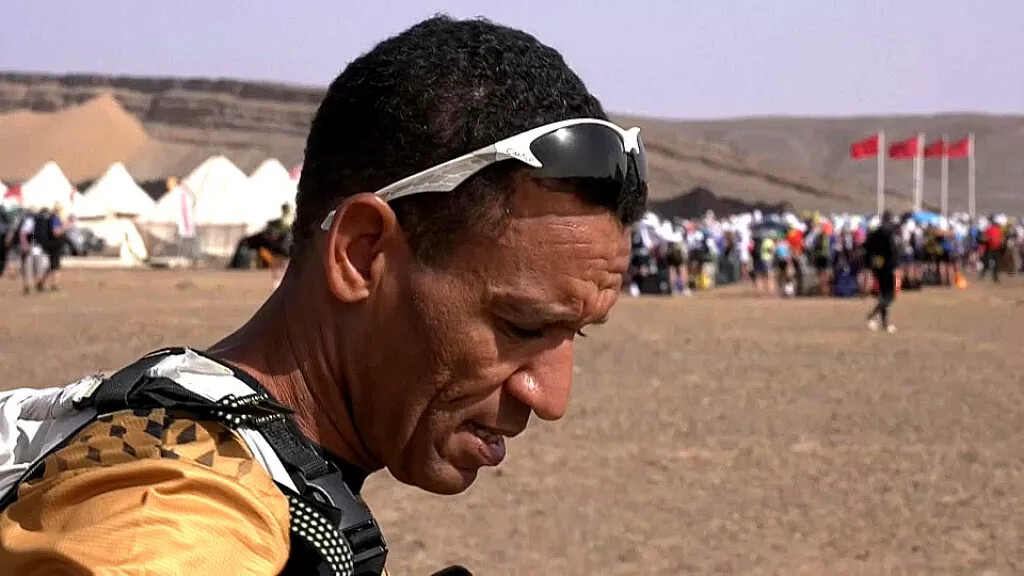
The sanction of the organization was immediate: a penalty of 3 hours sealing the end of the dreams of tenth title for Rachid El Morabity.
He who was aiming to join his compatriot Lahcen Ahansal in the legend of the event. El Morabity's teammate and compatriote, Aziz El Akkad, has decided to abandon.
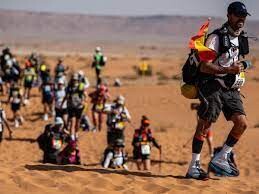
Rachid El Morabity's younger brother, Mohamed, remains alone at the top of the ranking, 3 minutes 17 seconds ahead of his direct contender Aziz Yachou.
In the women's ranking, French marathoner Maryline Nakache is first, get ahead of Moroccan Aziza El Amrany and Japanese Tomomi Bitoh by 30 minutes.
(04/28/2023) Views: 503 ⚡AMPby Africanews and Pierre Michaud
Marathon Des Sables
The Marathon des Sables is ranked by the Discovery Channel as the toughest footrace on earth. Seven days 250k Known simply as the MdS, the race is a gruelling multi-stage adventure through a formidable landscape in one of the world’s most inhospitable climates - the Sahara desert. The rules require you to be self-sufficient, to carry with you on your...
more...Vicoty Chepngeno eyes World Championships after 10,000m win
Vicoty Chepngeno has set her eyes on the World Championships in Budapest after claiming the women's 10,000m title at the sixth leg of the Athletics Kenya (AK) track and field weekend meet at Kasarani Stadium on Thursday.
This was her first AK meeting in two years having featured last in 2021.
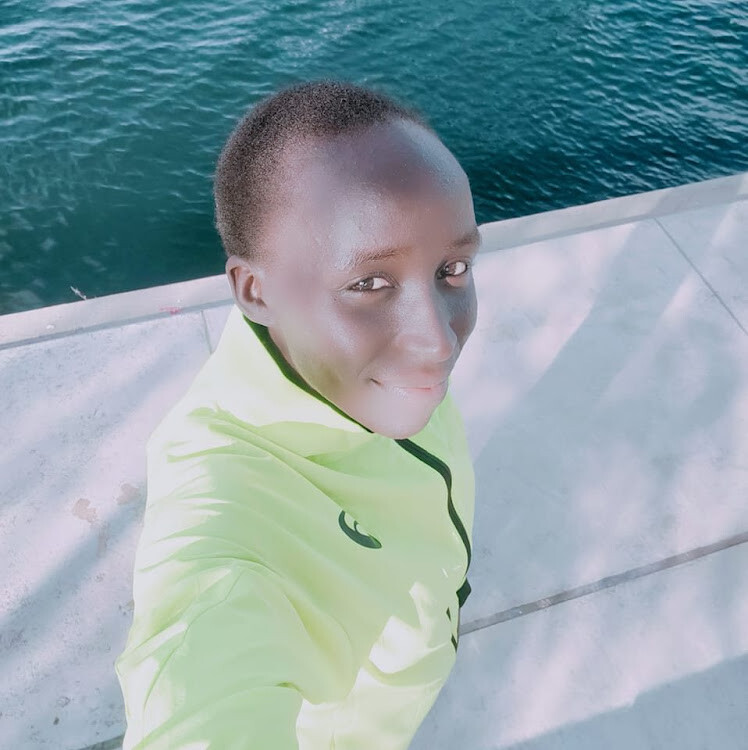
In an interview, Chepngeno said: "After this win, my next target is the World Championships in August in Budapest Hungary. I intend to double my effort because I know it won't be easy achieving my dream," she added.
The 29-year-old attributed her victory to discipline and focus.
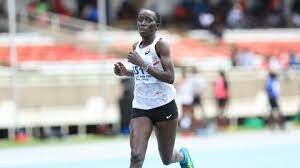
" I will take this step by step until I achieve my goal because I feel this is the time to represent my country and I am ready to travel to Budapest and bring the medal back home," she added.
"Discipline makes me different from the rest of the athletes and that is why I am able to win today. In everything I do, It's all about discipline and that is why I believe I will make the cut for Team Kenya to Budapest," he noted.
She said she followed the program given to her by the coach strictly and she is happy it bore fruits.
Chepngeno added: "I was not expecting this win but I thank God. I worked very hard during the training and patience was one of my key guiding factors," she noted.
(04/28/2023) Views: 522 ⚡AMP
by Maryan Siyad Abdirahman
World Athletics Championships Budapest 23
From August 19-27, 2023, Budapest will host the world's third largest sporting event, the World Athletics Championships. It is the largest sporting event in the history of Hungary, attended by athletes from more than 200 countries, whose news will reach more than one billion people. Athletics is the foundation of all sports. It represents strength, speed, dexterity and endurance, the...
more...What is the best diet for runners?
As a runner, your diet plays an important role in your performance and overall health.
Eating the right foods can help you reach peak performance while avoiding injury or fatigue.

But with so many different diets out there, it can be difficult to figure out which one is best for runners.
In this comprehensive guide, we’ll discuss what makes up a healthy diet for runners and how you can tailor it to fit your individual needs.

We’ll also explore some of the most popular diets among runners—including plant-based diets, low-carbohydrate diets, and intermittent fasting—and explain why they may or may not be beneficial for athletes.
Finally, we’ll provide tips on how to get started with any new eating plan so that you can maximize its benefits and start seeing results quickly!
What Makes Up A Healthy Diet For Runners?
A healthy diet for runners should consist of a variety of nutrient-dense whole foods, including vegetables, fruits, lean proteins, and complex carbohydrates.
Eating these foods in the right amounts can provide the energy needed for running and help keep you feeling full longer.
Hydrating frequently with water or sports drinks is important to ensure that your body is properly fueled and hydrated during exercise.
Aim to consume 20-50 grams of protein per day and at least 5 servings of fruits and vegetables.
Runners should eat complex carbohydrates such as whole grains, legumes, nuts, and seeds for sustained energy levels throughout the day.
Lastly, incorporating healthy sources of fat like avocado, olive oil, nuts and seeds can help promote joint health and provide essential nutrients.
Eating a balanced diet that provides adequate amounts of these food groups will ensure optimal performance and good overall health for runners.
Popular Diets Among Runners
Runners can benefit from various types of diets depending on their individual goals and needs. Some popular diets among runners include plant-based, low-carbohydrate, and intermittent fasting.
Plant-Based Diets focus on eating primarily fruits, vegetables, legumes and whole grains while avoiding animal products.
Low Carbohydrate Diets restrict carbohydrates in favor of eating more protein and fat.
Intermittent Fasting involves periods of fasting and eating within specific windows of time each day, allowing for improved energy levels during runs.
All three types of diets can provide runners with improved performance, endurance, and recovery if done properly.
However, it is important to consult with a nutritionist or dietician before starting any type of diet in order to ensure that you are getting the necessary macronutrients and micronutrients for optimal health.
Plant-Based Diets
Plant-based diets are becoming increasingly popular among runners due to their potential health and performance benefits.
If you’re considering going vegetarian you can take a look at this quiz, and check the results. Maybe a plant-based diet is just for you.
These diets focus on eating primarily plant-based foods such as fruits, vegetables, legumes, nuts, seeds and whole grains while avoiding animal products.
Plant-based diets can provide runners with increased energy levels during runs and promote faster recovery post-run due to their high nutrient content.
These diets can help reduce the risk of developing chronic diseases like diabetes and heart disease by reducing inflammation, improving blood sugar levels, and lowering cholesterol.
When following a plant-based diet, it is important to focus on consuming varied sources of whole grains, legumes, fruits and vegetables in order to ensure that you are getting all the necessary vitamins and minerals.
Plant-based protein sources such as tofu, beans, quinoa, nuts, and seeds should be consumed regularly for adequate amounts of protein.
Lastly, incorporating healthy fats from avocados, olives, nuts and seeds can help promote joint health and provide essential fatty acids.
Eating a balanced plant-based diet can provide runners with improved performance and good overall health.
Low Carbohydrate Diets
Low Carbohydrate Diets are becoming increasingly popular among runners looking to lose weight or improve performance.
These diets focus on reducing carbohydrates while emphasizing the consumption of proteins and healthy fats.
They can help improve running performance by providing sustained energy levels without spikes in blood glucose and insulin.
Low-carb diets also promote fat burning, which can be beneficial for runners looking to lose weight.
When following a low-carbohydrate diet, it is important to focus on eating proteins from sources such as lean meats, fish, eggs, and legumes and healthy fats from sources like nuts, seeds, olive oil and avocado.
It is important to incorporate adequate amounts of non-starchy vegetables like broccoli, kale, spinach and cauliflower to provide essential vitamins and minerals.
While following a low-carb diet can help improve performance and aid in weight loss, it is important to ensure that you are getting enough carbohydrates for optimal performance and recovery after runs.
Intermittent Fasting
Intermittent Fasting is becoming an increasingly popular diet among runners looking to improve performance and health.
This type of diet involves fasting for certain periods throughout the day, while consuming all meals within specific windows of time.
During the fasting period, it is advised to avoid food and only consume water or other calorie-free beverages such as tea or coffee. This type of diet can help improve running performance by providing sustained energy levels and promoting fat burning for weight loss.
Intermittent fasting has been shown to reduce inflammation, improve insulin sensitivity and reduce cholesterol levels.
When following an intermittent fasting diet, it is important to ensure that you are consuming adequate amounts of macronutrients and micronutrients during the non-fasting window.
Consuming high-fiber foods can help keep you feeling nourished and energized throughout the day.
Intermittent fasting is a beneficial diet for runners who are looking to improve performance and health, but it should be done in moderation to ensure that you are getting adequate nutrients for optimal performance and recovery.
Final Word
Overall, there are many different diets that can be beneficial for runners.
Whether you choose to follow a plant-based diet, low carbohydrate diet or intermittent fasting plan, it is important to ensure that you are getting adequate amounts of nutrients and calories in order to promote optimal performance and good overall health.
By understanding how the human body reacts to specific foods, runners can optimize their nutrition plans for improved running performance and better recovery post-run.
Making small changes such as incorporating more plant proteins into your meals or reducing carbohydrates may make all the difference when it comes to improving your running results.
With these tips in mind, you should have no problem finding an effective dietary strategy that works best for you!
(04/28/2023) Views: 649 ⚡AMPby Colorado Runner
Prep for your upcoming 10K with tempo 400’s
To race a 10K, you need a combination of speed and endurance. The 10K is one of the most popular distances to race and is considered a gateway into longer distances (i.e., the half-marathon and marathon). Running a fast 10K isn’t easy, but if you can put in a few solid weeks of aerobic training, you’ll be destined for a strong finish.
For 10K training, most online coaches will generally recommend one-kilometre or two-kilometre repeats to get you more familiar with your goal race pace, and to raise your aerobic threshold. These repeats can feel tedious, especially if they are in your training plan every week. But you can spice up your speed training and head to your closest track to try this tempo 400’s workout.
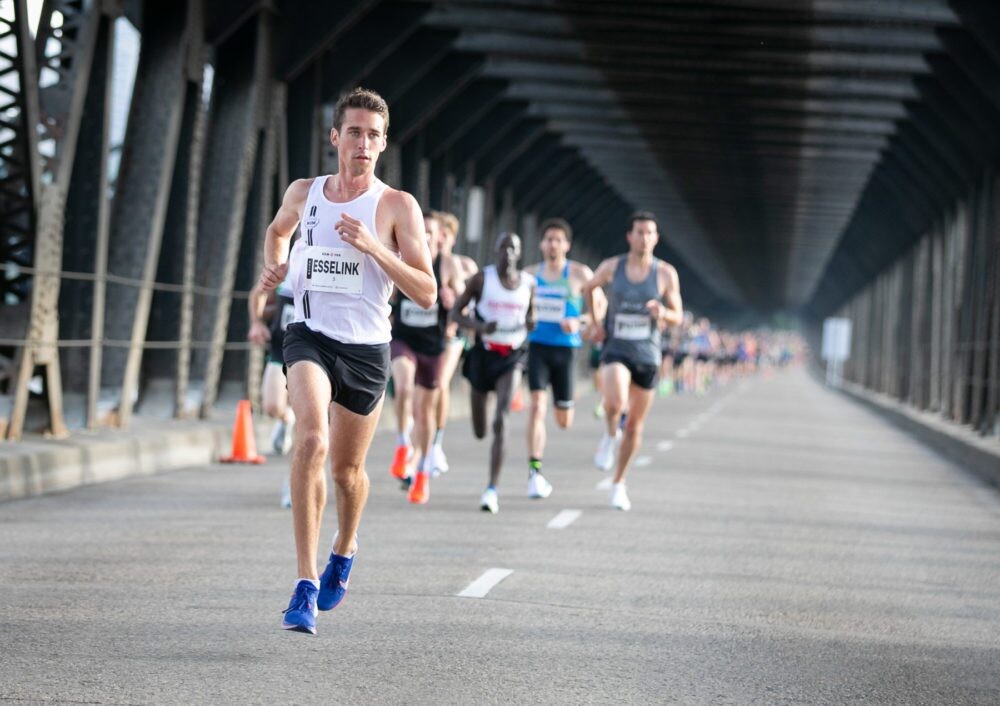
Workout
10 to 15 reps of 400m @ goal race pace with 100m jog between reps.
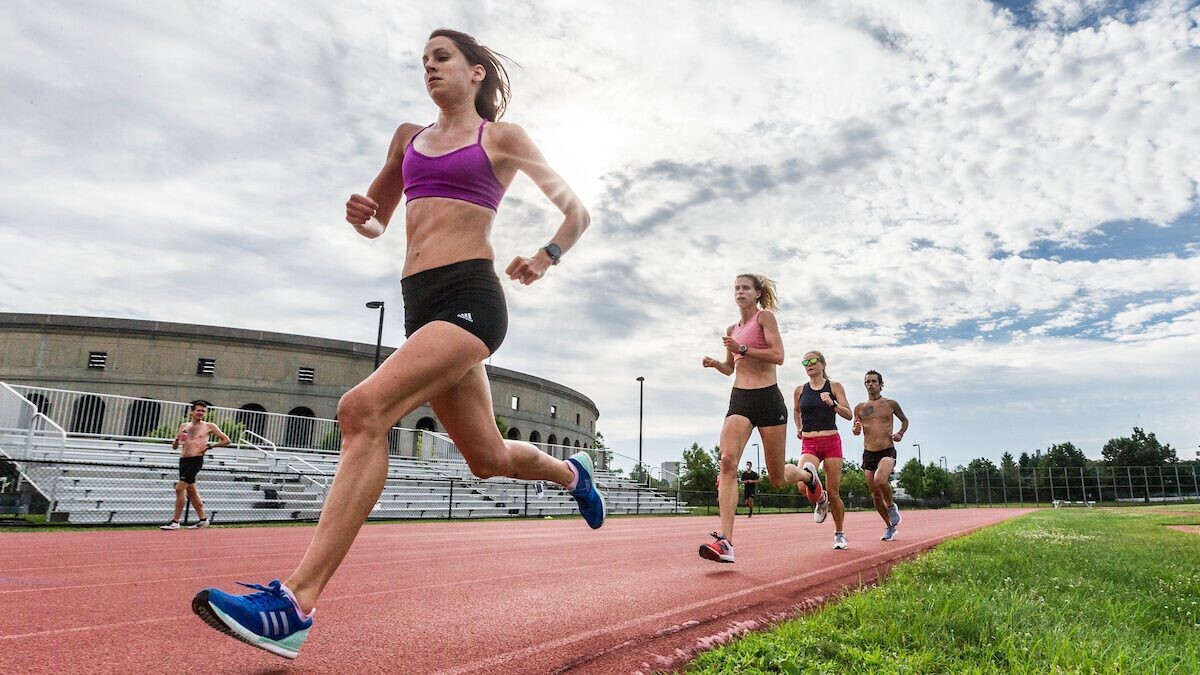
Start the workout with a 10- to 15-minute warm-up jog, followed by 10 to 15 minutes of dynamic stretching.
If your local track is not 200 or 400 metres in length or if the track is non-existent, you can modify the workout to 10 to 15 reps of 100 seconds at 10K race pace with 40 seconds of jog rest.
Start the first rep at your goal pace or a tad slower, to ensure you aren’t overdoing it. If you go out too fast, it’ll likely come back to haunt you later in the workout. The 100m jog between reps should be done at an easy run pace.
The purpose is to improve your aerobic endurance by keeping your heart rate steady and managing your effort accordingly, helping you finish strong. If you finish all 15 reps at goal pace, you will have a strong indication of where your fitness is, heading into your 10K.
(04/28/2023) Views: 485 ⚡AMPby Marley Dickinson
How to donate blood while training for a race
Among the ways running changes lives is through philanthropic pursuits, and there is perhaps no more valuable—or needed—way to help others than donating blood. Fifty-two per cent of Canadians say they or a family member has needed blood or blood products, according to Canadian Blood Services, the non-profit charity responsible for managing the national supply of blood products in all provinces and territories except Quebec.
Runners who meet the Canadian Blood Services’ criteria for being a donor, can make the life-saving gift of blood donation a regular part of their lives. For those in the process of getting ready for a big race, however, a little planning will ensure that making a blood donation and meeting your training goals can both be accomplished in the safest possible way.

Preparing to donate
The standard blood donation collected through Canadian Blood Services is around 450 milliliters. That’s a small portion of the total volume of blood in the average human body—around five litres—but it does demand that you take good care of yourself before and after each donation, which will will aid your return to full strength following a donation. Canadian Blood Services recommends staying hydrated, eating a healthy meal and getting plenty of rest the night before the donation. Donors are also advised to drink 500 ml of water and to eat a salty snack right before making the donation.
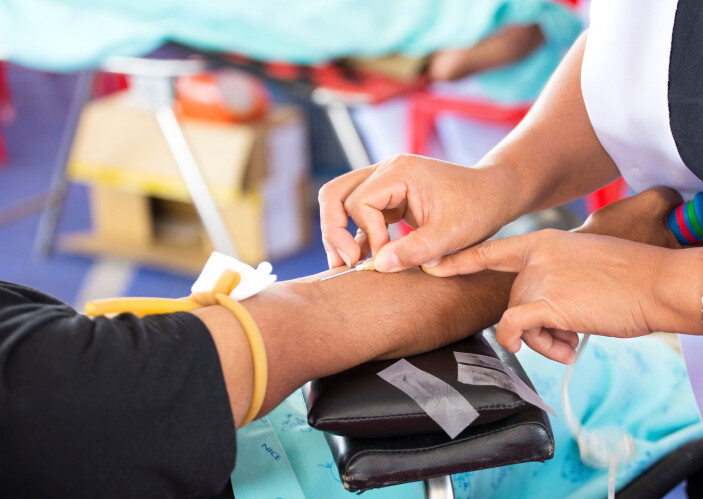
Followup care
The actual donation generally takes only 15 minutes, and the whole process—including another 15 minutes of immediate post-donation resting and snacking—takes about an hour. According to Canadian Blood Services, it takes only hours to replenish the plasma portion of a donation, and days to replenish the platelet portion, while red blood cells can take months to replenish.
Canadian Blood Services recommends avoidimg strenuous exercise (i.e., running) for six to eight hours following a donation, and to continue drinking extra fluids 24 hours after the donation. The World Health Organization’s guidelines are more conservative, recommending avoiding strenuous physical activities or sports for 48 hours following a donation.
Performance impacts
Although concerns over physical performance come secondary to those of safety, how a blood donation might affect the quality of training is understandably of interest to runners. According to this 2016 study, a standard blood donation of 400-500 ml leads to “potentially physiologically important” reductions in VO2max (7 per cent) and maximal exercise capacity (10 per cent) in the first two days after a donation.
A scheduling solution that would satisfy all of the above would be to plan the week’s long run for early on the day before making the donation, allowing plenty of time to rehydrate and rest later in the day. Staying off your feet during the hours before the donation can ensure your body is primed for the recovery to follow. Setting aside the following 24-48 hours as rest days will give you a chance to recover from the physiological impact of the donation, making your return to running that much stronger.
Whether you adjust your training schedule to fit donation times, or schedule a donation to fit around your training schedule, there’s room for both, with a little planning. To schedule a donation or to find out more about the donation process, visit blood.ca.
(04/27/2023) Views: 524 ⚡AMPby Paul Baswick
Mississauga runner to complete 19 consecutive marathons to honor late son
Eighteen years ago, David Harris of Mississauga made a promise to himself after losing his son Cameron to suicide.
Cameron died while Harris was training for his first Mississauga Marathon in 2005. He found that running gave him a measure of peace to help him cope with his grief, and he made it his goal to fight youth mental illness and raise awareness of others’ suffering. On April 30, he will complete his 19th consecutive Mississauga Marathon–one for each year of Cameron’s life.
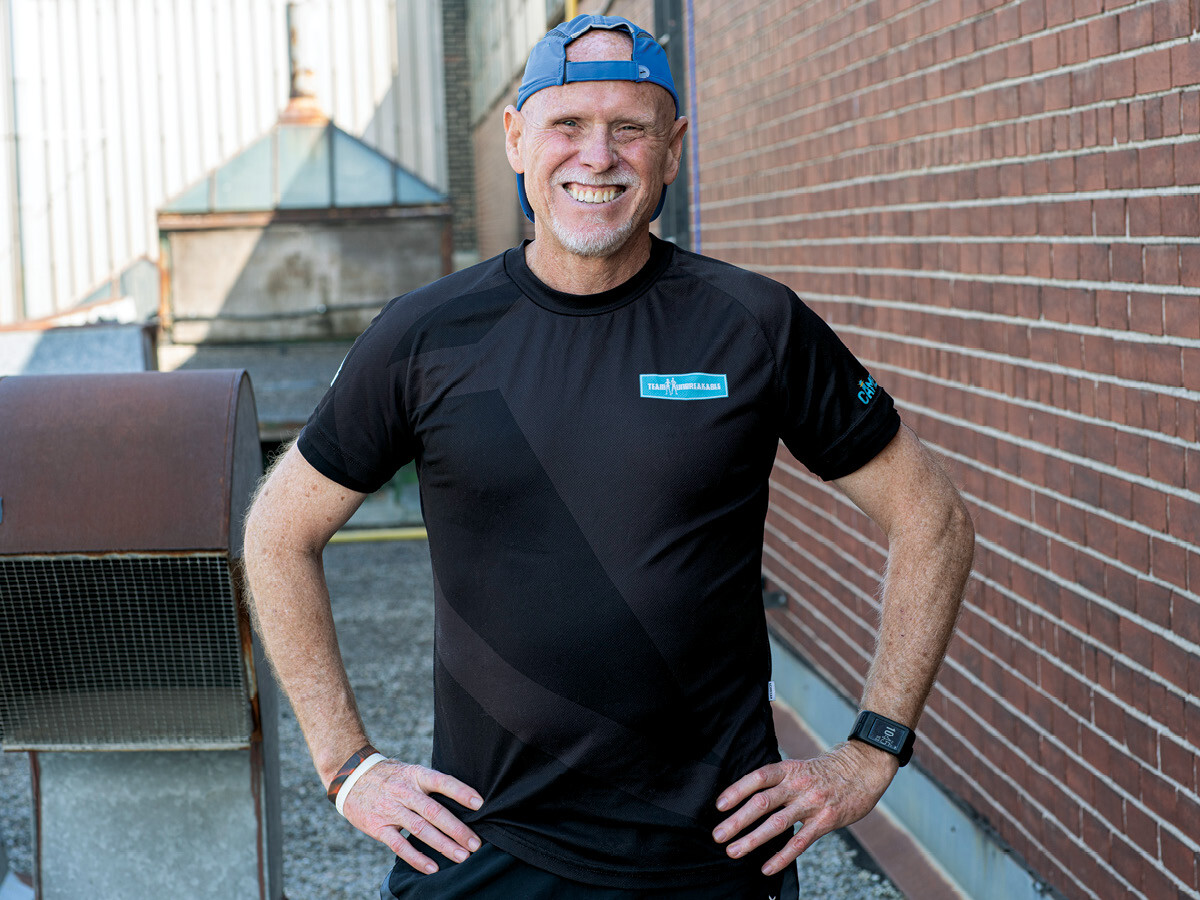
On Feb. 14, 2005, Harris’s life was changed forever when Cameron took his own life at 19. “There was a lot of fallout from his death,” says Harris. “People grieve in different ways, but running saved my life.”
“People weren’t talking about mental health in 2005,” says Harris. “The sad reality was, people did not want to hear what I had to say.”
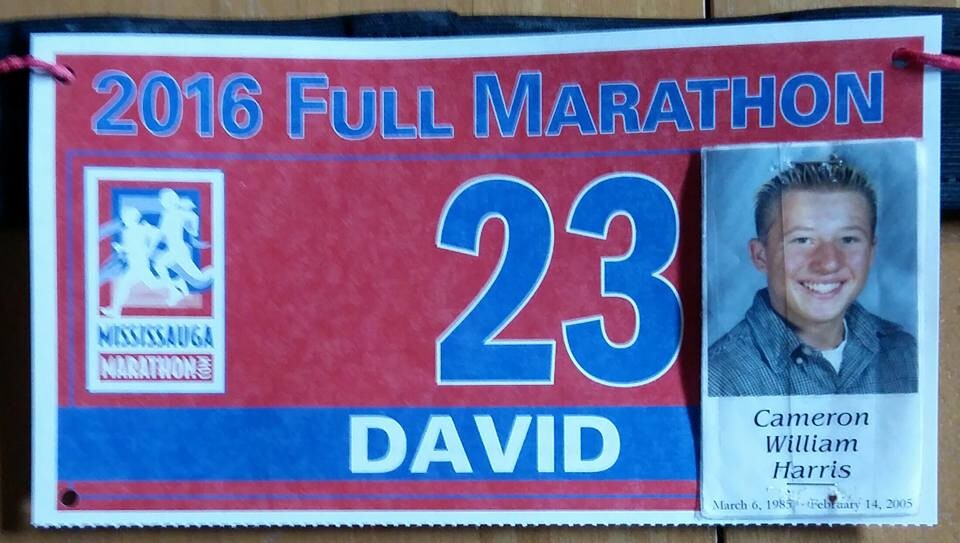
In 2006, Harris founded CameronHelps to help raise awareness about teen suicide and youth mental health. This organization evolved and changed its name to (Team Unbreakable), which demonstrates through a running program that physical activity, such as running, can help improve mental health. For many years CameronHelps/Team Unbreakable organized running events geared toward youth and their families.
Harris also began volunteer coaching with Dan McGann of Credit Valley Hospital and its Run Group Therapy Program, which provides teens with a unique approach to coping with depression. He coached with the program for 14 years, working with kids, teaching them how to run, and getting them to up to 5K. “The transformation of these kids was magical,” says Harris. “It meant the world to me.”
The 63-year-old fell into running before Cameron’s death. “In 2003, I looked in the mirror and didn’t like what I saw,” he says. “I went to Chapters and found a book called Body for Life, which had a 90-day program that could change your life.”
Harris says he followed the book religiously: “I felt brand new in three months. I was physically and mentally stronger, and I fell in love with running.”
Nineteen consecutive Mississauga Marathons have not been easy for Harris, though. In 2012, he was mugged the week before the race and ran the marathon with a torn meniscus, resulting from the attack. And in 2020 and 2021, he had to complete both Mississauga races virtually. “Every year, my motivation is Cameron and to finish that damn race,” says Harris. ” I know this year’s race will be filled with mixed emotions, but it’s incredible the journey is coming to an end.”
Harris, now a father of three boys, says not a day goes by that he doesn’t think about Cameron. “The feelings of grief–I still have them,” he says. “I tell myself it’s OK to cry. I always had to fight that, but now I embrace my emotions.”
This year’s race is now branded as the Mississauga Half and changed to a half-marathon format, dropping the marathon. Harris said the Mississauga Half team has been supportive, allowing him to start earlier than the other runners and run the course twice.
Harris aims to raise $1 million for Jack.org, an organization his friend, Eric Windeler, started, whose son also died by suicide. His campaign is backed by a sponsor, TC Energy, which will match all donations to Harris’s campaign.
(04/27/2023) Views: 497 ⚡AMPby Running Magazine
Nikki Hiltz, Sam Prakel both become two-time winners at Usaft 1 mile road
The USATF Indoor 1,500-meter winners demonstrated they could also rule the roads Tuesday night at the USATF 1 Mile Championships.
Nearly 10 weeks after both winning USATF Indoor titles Feb. 18 in Albuquerque, N.M., adidas professional Sam Prakel and Lululemon athlete Nikki Hiltz each secured their second career national road championships as part of the annual Grand Blue Mile event.
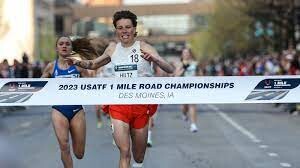
Hiltz produced the fastest performance in the history of the women’s race, which began in 2009, clocking 4 minutes, 27.97 seconds to edge reigning USATF Outdoor 1,500 champion Sinclaire Johnson of Nike’s Union Athletics Club in 4:28.70.
Hiltz, who prevailed in 2019 in Des Moines in 4:29.7, became the only athlete in event history to produce a pair of sub-4:30 efforts, benefitting from a 65-second opening quarter-mile and the pack reaching the midway point in 2:14.
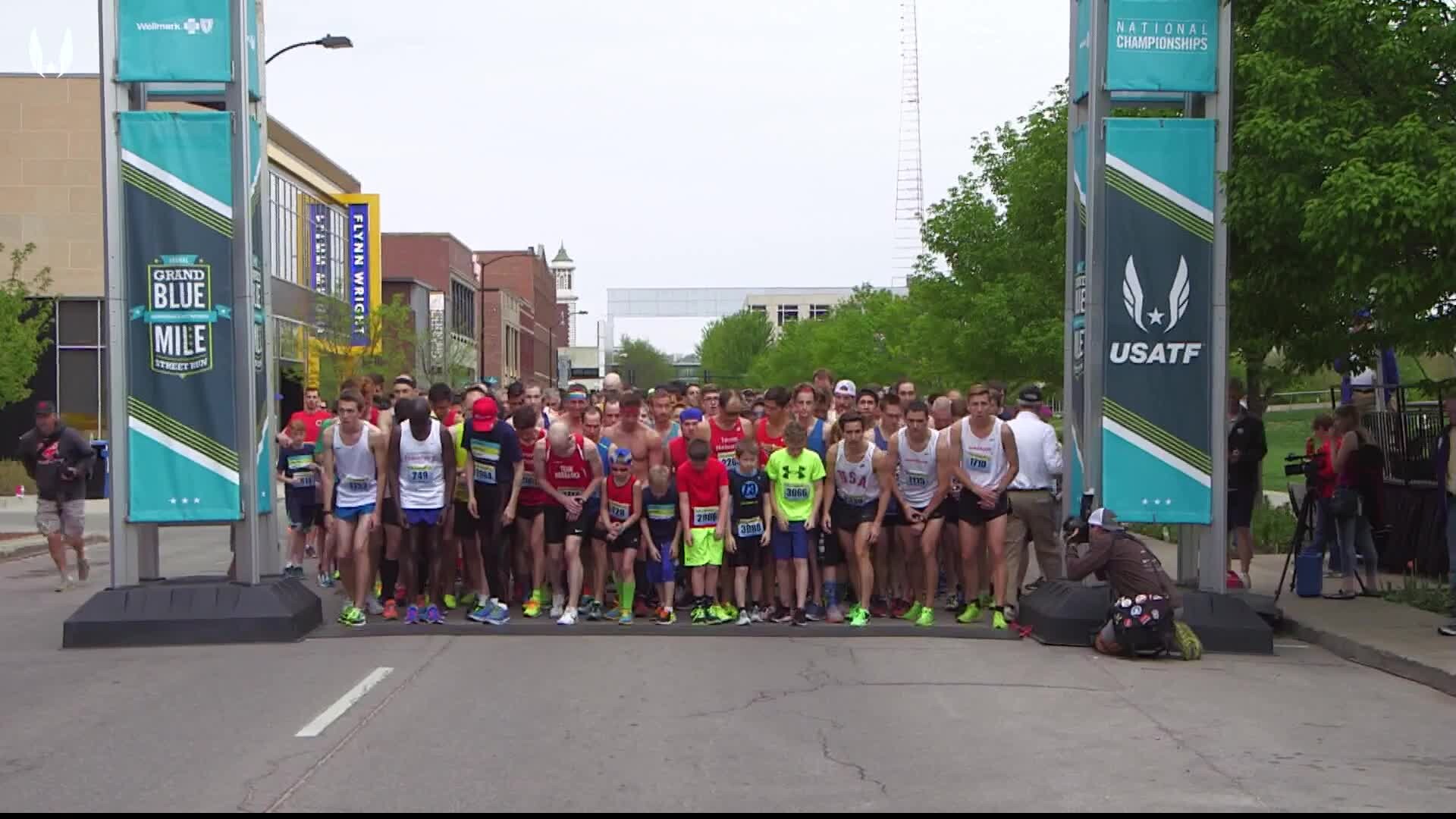
Emily Lipari, who had the previous all-time mark of 4:29.3 in 2020, and Johnson are the only other competitors to achieve a sub-4:30 performance in the race.
Hiltz, who ran a lifetime-best 1:59.03 in the 800 meters April 14 at the Bryan Clay Invitational at Azusa Pacific University, earned $5,000 for the victory and an additional $2,500 for the record bonus. Hiltz also joined Heather Kampf and Emily Lipari as the only three competitors to capture multiple women’s championships in event history.
Addy Wiley, a freshman at Huntington University in Indiana who secured five NAIA Indoor national titles March 2-4 in South Dakota, raced for the first time since that memorable showcase and took third in 4:30.94.
Wiley, 19, became the youngest top-three finisher in event history and achieved the No. 6 all-time performance in the nine years the competition has been held in Des Moines.
Wiley, who placed fourth in the 1,500 at the USATF Indoor Championships in February in Albuquerque, elevated to No. 7 in the history of the national road mile competition, including Sara Hall clocking 4:30.8 in Minnesota to secure the 2011 crown.
Colleen Quigley, representing Lululemon, finished fourth in 4:31.1 in her debut at the event, with Nike’s Shannon Osika and Alex Teubel also being credited with 4:31 performances to secure fifth and sixth.
Alli Cash (4:32), Jenn Randall (4:33), Micaela DeGenero (4:34) and Helen Schlachtenhaufen (4:37) completed the top 10 women’s competitors in the 23-athlete race.
Prakel prevailed in 4:01.21, remaining patient following an opening quarter mile of 61 seconds and a 2:05 split at the midway point, to take control in the final 500 meters and never relinquish his advantage.
Under Armour Mission Run Baltimore Distance athlete Casey Comber edged last year’s champion Vincent Ciattei by a 4:02.88 to 4:02.91 margin to grab second.
Prakel, who ran 13;22.78 in the 5,000 meters April 14 at Bryan Clay, also secured a $5,000 prize for the road mile title, becoming only the third male athlete in event history to capture multiple championships, joining David Torrence (2009-11) and Garrett Heath (2013 and 2015).
Prakel produced the fastest all-time mark in Des Moines with his 3:58.3 effort in 2020. Ben Blankenship holds the meet record with his title in 3:55.8 in 2016 in Minnesota.
Nick Randazzo, Kasey Knevelbaard and Jake Gillum were all credited with 4:04 performances to finish fourth, fifth and sixth, followed by Shane Streich and David Ribich both clocking 4:05 for seventh and eighth, Craig Nowak earning ninth in 4:06 and Colin Abert taking 10th in 4:08 in the 17-athlete race.
(04/27/2023) Views: 583 ⚡AMPGrand Blue Mile
The Grand Blue Mile was created by Wellmark Blue Cross and Blue Shield and the Drake Relays to encourage healthy habits and empower positive change. Held annually since 2010, the Grand Blue Mile has hosted more than 30,000 participants from 26 states, six countries, and four continents. The annual event brings friends and families together to celebrate wellness through a...
more...Eliud Kipchoge to rest before planning on next marathon
World Marathon record holder Eliud Kipchoge has prioritised recovery before making a decision on his next marathon.
Kipchoge, who flagged off the the London marathon men's elite race last Sunday that was won by Kenya's Kelvin Kiptum, said he is firmly focused on the challenges ahead.
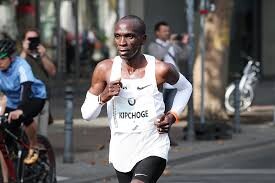
"Thank you London for having me. I felt inspired to meet so many runners from around the world. Their energy motivates me for the challenges ahead. I'm heading back to Kenya to recover and make plans for my next marathon," Kipchoge posted on his twitter account.
Kipchoge has won the London and Berlin Marathons four times apiece.
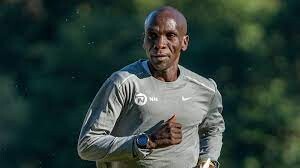
Speaking on BBC One before flagging off the race, he said: "I love being in London. The crowd is always wonderful and it's great to see how the running community is coming together. London is like home to me and it is the place to be for a marathon.
On Sunday April 16, Kipchoge finished sixth in the Boston marathon where he was making his debut. The 38-year-old who is a two-time Olympic champion, failed to sparkle in the much-hyped marathon.
Defending champion Evans Chebet won the Boston Marathon, surging to the front at Heartbreak Hill to cut the tape in a time of 2:05:54.
(04/27/2023) Views: 577 ⚡AMPby Evans Ousuru
Pro triathlete takes shots at Olympians after doping ban
Ironman champion Collin Chartier said he won't blame a "tainted burrito or tainted COVID vaccine" for his positive EPO test.
American professional triathlete Collin Chartier was handed a three-year ban from competition on Monday after a positive result for erythropoietin (EPO) in a random drug test from February. The Ironman champion took to Instagram to address the positive test, stating that he was not going to make excuses, instead admitting his guilt. At the end of his apology note, Chartier took blatant shots at Olympic runners Shelby Houlihan and Zane Robertson, both of whom have faced doping bans in recent years.
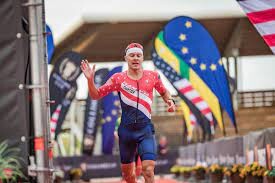
Shots fired
“I am not going to give myself or anyone else the bullshit excuse like a tainted burrito or tainted COVID vaccine,” Chartier wrote. The “tainted burrito” was a reference to Houlihan’s post-doping-ban excuse in June 2021, while the COVID vaccine line was a nod to Robertson’s more recent doping bust in March.
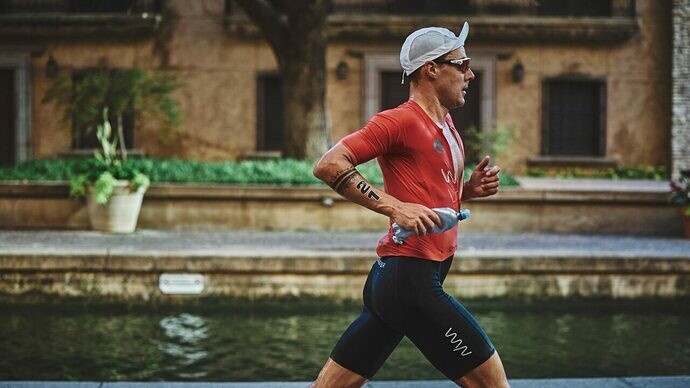
After testing positive for the steroid nandrolone in Dec. 2020, Houlihan claimed it was due to contaminated meat that she ate at a food truck the night before her test. Robertson took a similar route following his ban, blaming his positive test (which occurred in May 2022) on a COVID-19 vaccine he received in Kenya.
Chartier’s apology has not been well received by the triathlon community, with many of his peers going after him online. While there is no excuse for his actions or decision to use EPO, at least he admitted to cheating.
“Tell the whole truth”
Chartier’s apology has sparked an important conversation in the triathlon world surrounding dopers and the help they receive to cheat. Many other pro triathletes have demanded that Chartier take his admission of guilt a step further by exposing anyone who helped him cheat and any other athletes whom he knows have doped.
“Tell the whole truth,” eight-time Ironman champion Ben Hoffman wrote on Instagram. “How did you do it, who helped, who else is involved, and give the full story of why.” Former Ironman world champion Sebastian Kienle commented directly on Chartier’s apology post, writing, “Let me guess, you bought [the EPO on] the internet and also learned how to use it—all from the internet. Nobody helped you, nobody knew.”
These athletes—and many fans—have said Chartier’s apology feels hollow and insincere, since he has yet to identify others who helped him or who are also cheating. They object to any praise he may be receiving for being honest about having cheated, insisting that he has a further role to play in cleaning up the sport. (Robertson admitted to doping after originally making the bogus COVID vaccine excuse.)
Although Chartier said he is retiring, he is now serving a three-year ban from competition. Houlihan was given a four-year ban and is not eligible to race again until 2025. Robertson announced his retirement before his ban was made public, but was still given an eight-year ban.
(04/26/2023) Views: 525 ⚡AMPby Running Magazine
Six tips for hitting the trails, follow these tips to help you succeed as a trail runner
There’s no reason you shouldn’t add trail running to your training schedule every now and then, but before you hit the trails, there are some things you should consider. We’ve compiled a short list of tips and suggestions that will help you succeed in the realm of off-road running, whether you plan to pursue the sport seriously or simply want to train on the trails once or twice a week.
1.- Eyes on the trail

On the road or track, you can look wherever you want and you’ll probably be OK; for the most part, your runs are smooth and without obstacles. But when trail running, rocks, roots and anything else in nature could trip you up if you’re not looking for them. Keep your eyes on the trail. Otherwise, you might take a tumble.
2.- Bring a map

If you don’t know the area, bring a map. No, you don’t have to carry a fold-up paper map into the forest with you, but it’s a good idea to have a map or GPS on your phone. It’s so easy to get lost in unfamiliar territory, and sometimes you can even get disoriented in forests you thought you knew well. Having your phone or GPS watch to help get you back to civilization is a nice safety net.
3.- Get trail gear
If you’re going to really give trail running a go, you need to invest in the proper gear. This could just be trail-specific running shoes (which have lugs on the outsole for better traction on dirt, sand or mud), but if you plan to run longer distances, you may want to get a hydration vest and poles. Really, it’s up to you to decide how invested in the sport you want to become.
4.- Lower your expectations
You’ve got your shiny PBs from the road and the track, but none of that matters when you hit the trails. Oh, you’re running a 5K trail race? Odds are you’re not coming close to your road PB. You plan to run 40 minutes hard in the woods for your next workout? That’ll be a good effort, but don’t be upset when you check your distance and it’s nowhere near last week’s 40-minute workout on the road. Trail running is hard, so lower your expectations when it comes to pace.
5.- Jump into a race
Racing is fun. Trail running is fun. So, it only makes sense that racing on the trails would be fun, too. Enter a race. Don’t set a certain time expectation, just go out and have fun.
6.- Take food and water
When you’re running on the roads, you’re rarely too far from either home or somewhere that you can get water or some nutrition. If you bonk on the trails, you could have a long slog back to your car. Carry a gel and bring a water bottle. You’ll thank yourself later when the effort and the heat starts to get to you.
(04/26/2023) Views: 505 ⚡AMPby Ben Snider-McGrath
Mo Farah says Great North Run will be his final race
Britain's four-times Olympic champion Mo Farah said he will end his athletics career at the Great North Run in September.
Farah finished ninth in his final marathon in London on Sunday, clocking 2:10:28 - nine minutes behind winner Kelvin Kiptum.
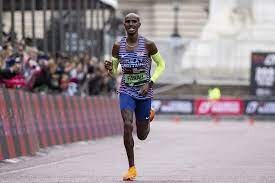
The 40-year-old will compete at the 10km Great Manchester Run on May 21 before the Great North Run half-marathon on Sept. 10.
"Part of me was wanting to cry," Farah told BBC on Sunday after the London Marathon. "I will miss that feeling, I am emotional today.
"I want to pass that on. The Great North Run is going to be my last ever run and that will be my goodbye.
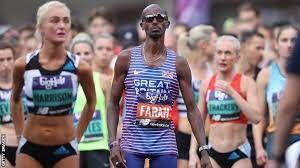
"My career has been amazing, my wife and kids have been with me throughout this journey and I want to give time to them now, as well as getting involved in grassroots sport and give back to this sport."
Farah has won the Great North Run six times.
(04/26/2023) Views: 540 ⚡AMPGreat North Run
Great North Run founder Brendan Foster believes Britain is ready to welcome the world with open arms after the launch of the event's most ambitious plan to date. The Great World Run campaign seeks to recruit one runner from every country in the United Nations – 193 in total – to take part in the iconic half marathon in...
more...Gene Dykes hopes to become oldest Western States finisher
Gene Dykes, the record-setting 75-year-old ultrarunner from Philadelphia, will hit the trail this summer in a bid to become the oldest finisher in the history of the 100-mile Western States Endurance Run.
This year’s event, which takes place June 24-25 in Auburn, Calif., will mark the race’s 49th year.
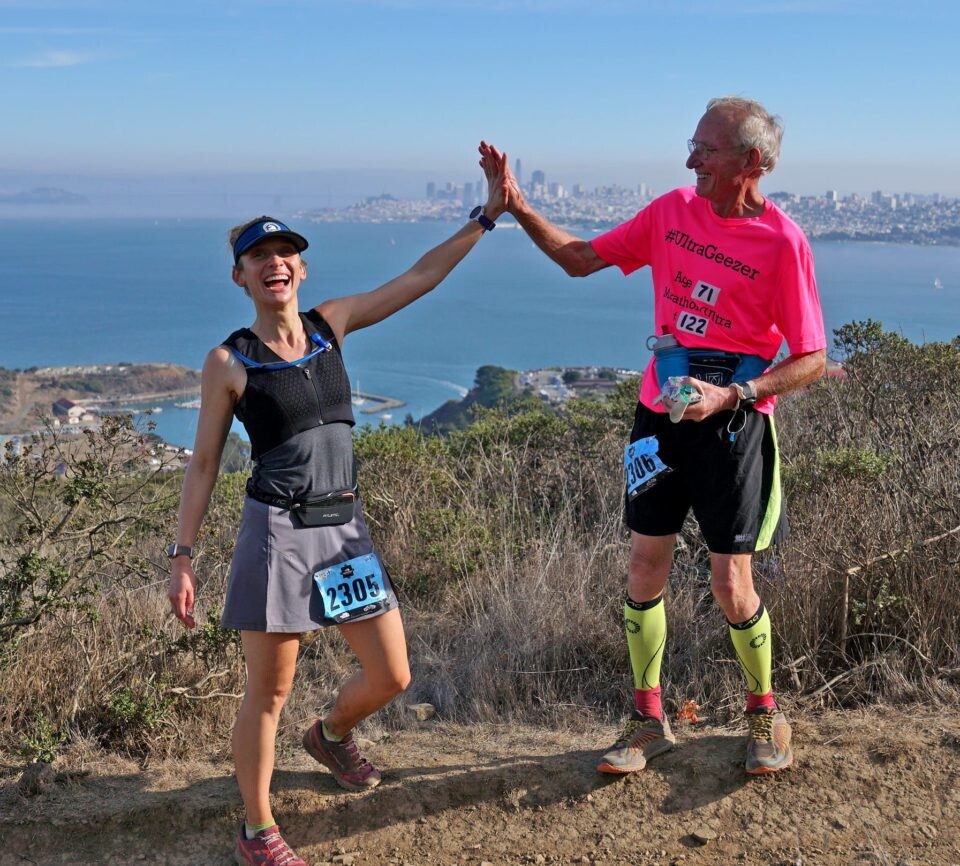
The current oldest finisher is Nick Bassett of Cheyenne, Wy., who finished the 2018 race in 29:09. (The cutoff for all finishers is 30 hours.) Bassett was 73.
A self-proclaimed “ultra geezer,” Dykes started competing in races when he was in his 60s and has since broken multiple records for his age group. In 2021, he broke the M70 50K world record at the USATF national 50K road championships in East Islip, N.Y., crossing the finish line in 3:56:43 and beating the previous record of 4:15:55, set by Germany’s Wilhelm Hofmann in 1997, by nearly 19 minutes. Dykes broke the M70 100-mile and 24-hour track records at the Dawn 2 Dusk 2 Dawn 24-hour ultramarathon in Sharon Hill, Penn., in 2019.
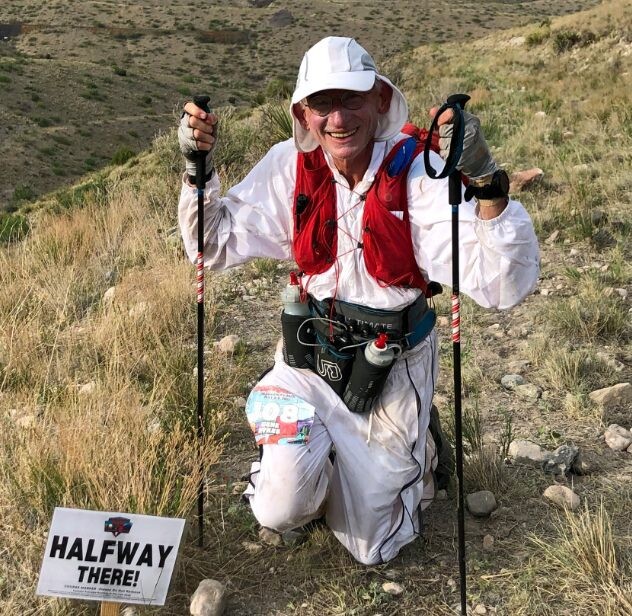
In 2018, Dykes ran his fastest marathon time—2:54:23—at age 70 at the Jacksonville Marathon in Florida. The result would have seen him take the world M70 marathon title from former record holder Ed Whitlock, but Dykes’s final time was not ratified due to the race not being a USATF-sanctioned event.
In total, Dykes has run 157 marathons and ultras since 2006. His daughter Hilary will pace him at this year’s WSER.
Dykes is being sponsored in his latest effort by Calgary-based Stoked Oats. As part of their support, the company has kicked off its Breakfast with Gene series on Instragram and YouTube. The series will feature guests including Vancouver-based WSER female record holder Ellie Greenwood, three-time WSER racer Michael Wardian and race director Craig Thornley.
In 2016, 72-year-old Wally Hesseltine made a valiant and heartbreaking attempt to break the “oldest finisher” record, but missed the 30-hour cutoff by two minutes.
“We are thrilled to be supporting Gene on his journey to WSER,” says series host and Stoked Oats founder Simon Donato. “Running 100 miles is a tall order for professional runners, let alone someone in their 70s. What Gene is trying to accomplish is truly remarkable and we’re looking forward to supporting him every record-setting step of the way.”
Western States, first run in 1974, is the world’s oldest 100-mile trail race and one of the most prestigious. Each June, 369 runners from across the United States and around the world embark from the start line in Olympic Valley, Calif., to tackle a challenging course to the coveted finish line at Placer High School in Auburn.
(04/26/2023) Views: 470 ⚡AMPby Paul Baswick
Western States 100
The Western States ® 100-Mile Endurance Run is the world’s oldest and most prestigious 100-mile trail race. Starting in Squaw Valley, California near the site of the 1960 Winter Olympics and ending 100.2 miles later in Auburn, California, Western States, in the decades since its inception in 1974, has come to represent one of the ultimate endurance tests in the...
more...Five things all runners can learn from London Marathon champion Sifan Hassan
Two-time Olympic champion Sifan Hassan made her marathon debut at the 2023 London Marathon, and she won in heroic fashion–making a comeback after stopping twice to stretch an impinged hip. Heading into the race, Hassan said she went through the typical pre-race antics that every runner has: why did I decide to do this? Did I train enough? I don’t know what to expect.
Hassan executed her resiliency, showing that anything can be possible and how normal it is to question everything before your race. Here are five takeaways from the 2023 London Marathon champion.
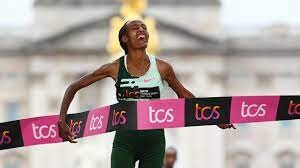
1.- It is OK to be nervous!
Even after setting world records and winning multiple Olympic medals in her career, Hassan said she was excited, yet very nervous about her marathon debut in London.
Runners are only human, and most put in countless hours of training into a goal race–so being nervous is not a bad thing. Nerves are just runners’ sympathetic nervous system (SNS) kicking in, which is one of two components of the body’s central nervous system. The SNS releases two hormones in response to high-stress situations–epinephrine and norepinephrine (also known as adrenaline and noradrenaline), which result in that feeling of having butterflies in your stomach.
According to research, nerves are a good thing, and they can help your body perform better. Nerves help your reflexes become faster and improve blood circulation before exercise.
2.- Put expectations to rest
Before the London Marathon, the 2019 world 1,500m champion said during a pre-race press conference she did not change much in her training and had no goal time in her mind. “The marathon is a different distance for me; I do not know what to expect, but I want to try it,” said Hassan.
If you are trying a new distance or race, you will not know what to expect until you finish. Try to leave your expectations behind and embrace the experience. There’s a good chance you’ll surprise yourself.
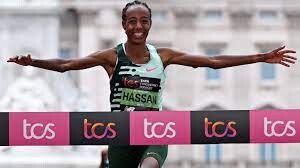
3.- Trust yourself
There are a million training tips online on what to do before your first marathon or how much mileage you should run per week, but not all tips will work for you. Hassan said she did not change up much of her training and kept a similar schedule similar to her 2020 Tokyo Olympics build.
It is okay to take advice, but there’s no 100 per cent blueprint on how to train for the marathon since all runners are different. Find out what works for you, and stick with it.
4.- Don’t be afraid to stop
Hassan might be the first woman to win a marathon major while stopping twice to walk. She clarified after the race that she had hip tightness and found that the pain only increased as she continued to run. Once she stopped, walked, and stretched out the discomfort, she started running again, eventually catching the lead group around 35 km.
Running is a high-impact sport on your joints and muscles. If there is any tightness or tenderness, it can usually be better to stop and quickly address the issue rather than running and doing more damage.
There is a negative connotation around stopping during a race, but a short walking interval can also break up the monotony and help you deal with the mental challenges or discomfort you may be feeling. This tip is helpful for runners doing longer distances (like a half or full marathon) for the first time.
5.- Have fun out there
Although trying something new can bring challenges, have fun and enjoy the experience. Hassan had no thoughts of winning the London Marathon beforehand, she just wanted to try something she wasn’t used to doing, which ended up working in her favor, leading to her first Abbott World Marathon Major win.
(04/25/2023) Views: 518 ⚡AMPby Marley Dickinson
TCS London Marathon
The London Marathon was first run on March 29, 1981 and has been held in the spring of every year since 2010. It is sponsored by Virgin Money and was founded by the former Olympic champion and journalist Chris Brasher and Welsh athlete John Disley. It is organized by Hugh Brasher (son of Chris) as Race Director and Nick Bitel...
more...90-year-old TCS London Marathoner sets British masters record
The desire to help those battling the same disease that claimed his sister fuelled David Picksley of Croydon, Surrey, to claim the British 90+ men’s marathon record at this year’s TCS London Marathon. Picksley, the oldest of the more than 48,000 runners at this year’s event, finished the race with a time of 7:16:46.
He becomes the first to record a master’s marathon record in the British male 90+ category. Previously, the oldest British male marathoner on record was Alf Gibson, who at age 85 ran the 1993 London Marathon in 5:48:09. In 2002, Jenny Wood-Allen set the standing record in the British 90+ women’s category, running the London Marathon in 11:34:00.
In Canada, the record in the oldest men’s masters group is held by the late Ed Whitlock, who topped the men’s 85+ category with a 3:56:38 marathon finish in Toronto in 2016.
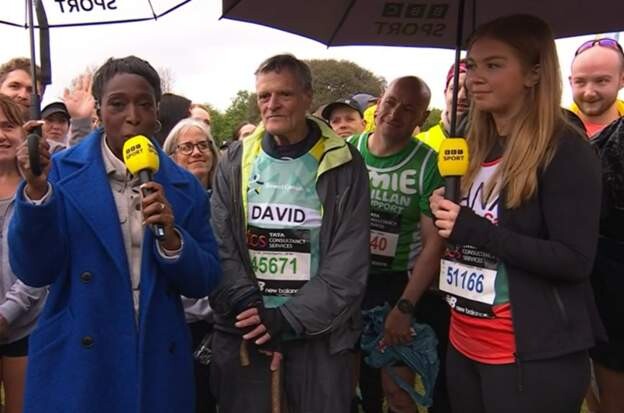
Picksley entered this year’s marathon as a fundraiser for JustGiving, a U.K. charity aimed at eradicating bowel cancer, and has raised more than $12,000 for the organization through this year’s marathon.
“When my sister April was diagnosed in 1973 with bowel cancer, this was generally seen as a death sentence,” Picksley shares in a statement on his fundraising page. “She died just a few months later at 42, with three young children. Now, almost 50 years on, of those in the UK diagnosed at the earliest stage, 97% will survive five years after their diagnosis. Currently, only just under 40% of cases are diagnosed at an early stage. The focus of the policy and the influencing work of Bowel Cancer UK over the next three years is to improve early diagnosis. I am walking the London Marathon in 2023 to recognise the improvements made in the last 50 years, and to support their campaign, to save more lives by spreading knowledge of the symptoms.”
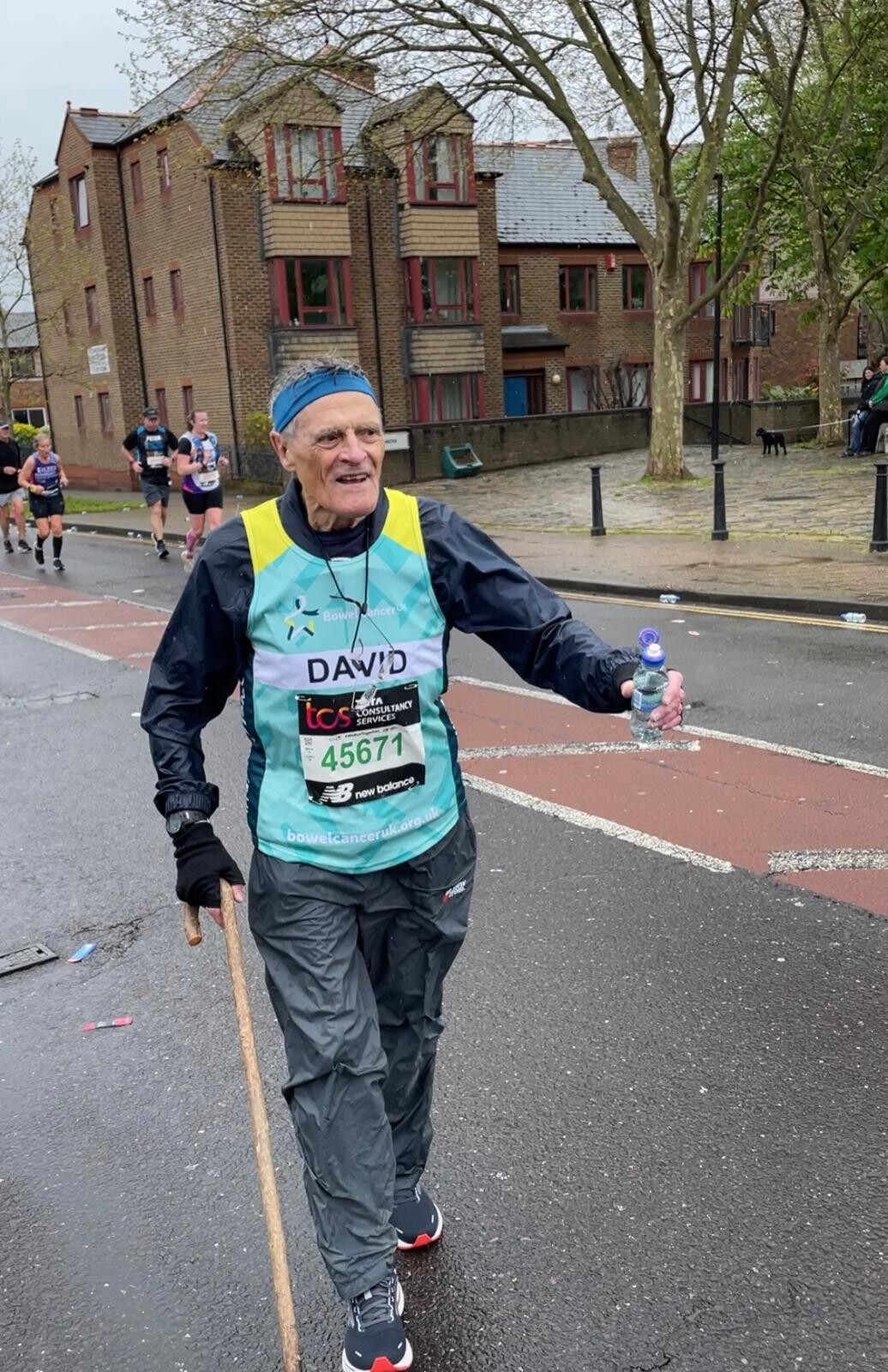
The TCS London Marathon course is familiar territory for Picksley, who has a long history going the 42.2-km distance.
“In my 50s and 60s I ran 13 marathons, including 4 in London, and since those days I have been enjoying a walk with my stick, early every morning,” says Picksley. “Latterly that had become a lockdown habit, and when a Virtual London Marathon was introduced, I took it on. After a finish in under 7.5 hours in 2021, I did it again in 2022, in 7:13:15, just 3.5 minutes over the ‘good-for-age’ over-85 age category.”
In a video tweeted by TCS London Marathon organizers, Picksley says “it feels wonderful, it really does,” to have finished the event at age 90.
Asked if he “might have a small glass of something to celebrate,” Picksley replies: “Yeah, I should think I will. I might even make it a big one.”
(04/25/2023) Views: 537 ⚡AMPby Paul Baswick
TCS London Marathon
The London Marathon was first run on March 29, 1981 and has been held in the spring of every year since 2010. It is sponsored by Virgin Money and was founded by the former Olympic champion and journalist Chris Brasher and Welsh athlete John Disley. It is organized by Hugh Brasher (son of Chris) as Race Director and Nick Bitel...
more...Esther Chesang banned for four years
29-year-old marathoner Esther Chesang has been banned for four years by the Anti-Doping Agency of Kenya for use of a prohibited substance.
"The period of ineligibility (non-participation in both local and international events) for the respondent shall be for four years from the date of mandatory provisional suspension that is 11/5/ 2022 pursuant to article 10.2.1.2 of the WADC," read a Sports Disputes Tribunal ruling of April 23.
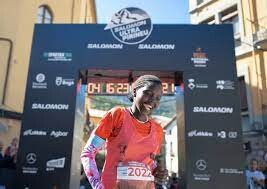
Chesang, the Sierre-Zinal 2022 women's winner, was suspended for the presence of triamcinolone acetonide.
The panel was chaired by Gichuru Kiplagat while Peter Ochieng and Gabriel Ouko were members.
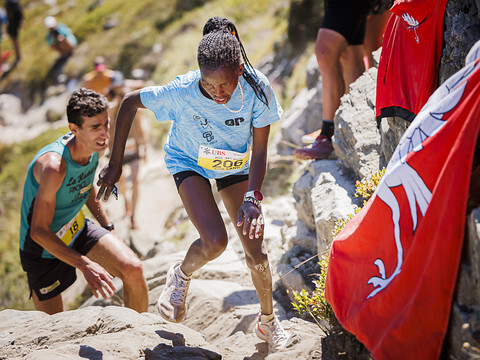
The Tribunal added: "The disqualification of results in the event during which the ADRV occurred and in competitions after sample collections or commission of the ADRV with all resulting consequences including forfeiture of any medal, points and prizes pursuant to Article 9 and 10 of WADC."
(04/25/2023) Views: 642 ⚡AMP
by Evans Ousuru
Emmanuel Wanyonyi to use Kip Keino Classic to gauge readiness for Budapest
The 2021 World Under-20 800m champion Emmanuel Wanyonyi says he wants to use next month’s Kip Keino Classic to gauge his preparedness ahead of the World Championships in Budapest, Hungary in August.
Speaking in an exclusive interview on Monday, the speedster said he is tirelessly toiling at an elite camp in Kapsabet to perfect his act for a podium finish at Moi Stadium, Kasarani on May 7.
The prestigious one-day meet is part of the World Athletics Continental Tour Gold series and enters the third edition with at least 1,000 athletes set to battle for a share of the prize purse and world ranking points.
“I’m currently practicing for the Kip Keino Classic in Kapsabet at the 2-Running Club training camp,” Wanyonyi stated.
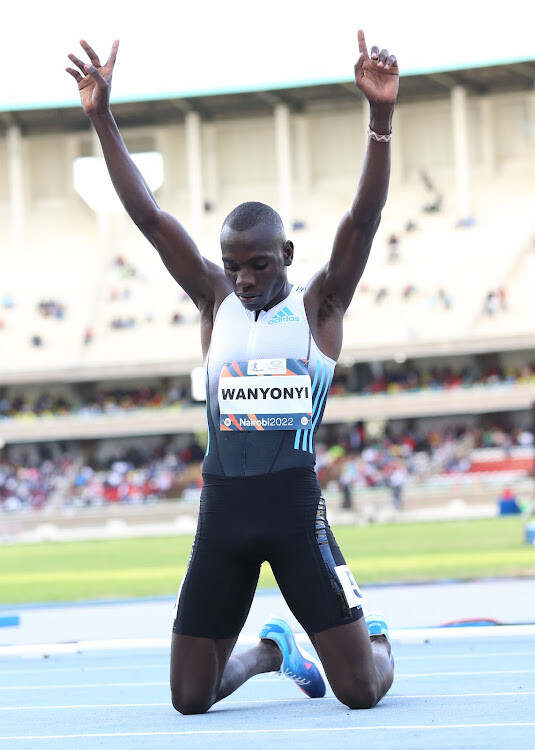
“I’m currently concentrating all my energies on training for the Kip Keino Classic. I’ll be using the competition to get ready for the Budapest World Athletics Championships next year,” Wanyonyi said.
He added: “I’ve been training with my eyes set squarely on the World Championships. I’m eager to demonstrate my dominance on this grand platform.”
A podium finish in Hungary is the middle-distance track sensation’s bare minimum.
“I plan to finish on the podium. I also want to better my personal best, but I wouldn’t mind trying for the record as well. I want to be considered one of the world’s best 800m runners. This is doable if I put in enough time in training,” Wanyonyi explained.
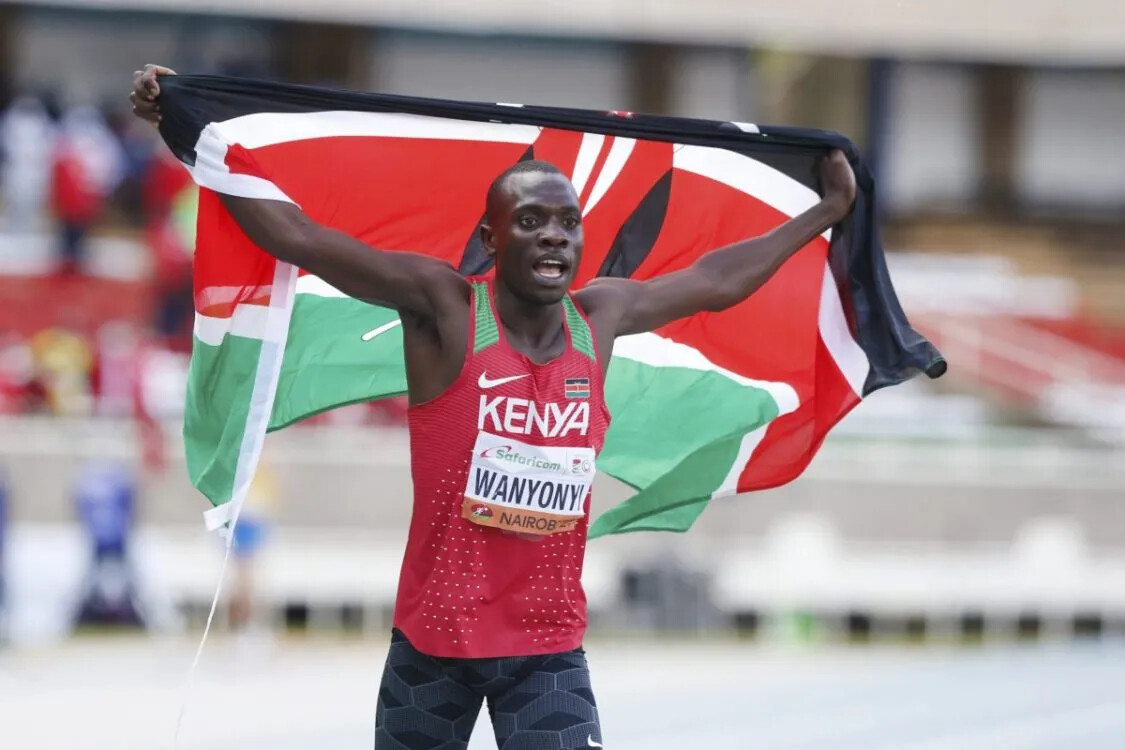
He believes lack of senior-level experience cost him a podium finish in Oregon. Nonetheless, he reckons he gleaned some invaluable lessons that could propel him to victory in Budapest.
“It was lack of experience that cost me the victory. It was my first World Championships and I’m glad I came away with a lot of valuable lessons,” Wanyonyi, who finished fourth in 1:44.54, stated.
However, he redeemed himself at the World Athletics Cross Country Championships in Bathurst, Australia when he, alongside Mirriam Cherop, Daniel Munguti and Brenda Chebet, scooped the mixed relay title.
He believes their amazing performance at the competition has increased his ambition to achieve global greatness and add another medal to his cabinet.
“Our performance in Bathurst was quite encouraging heading to the World Championships. It was a huge morale booster and my confidence in repeating this performance in Budapest has skyrocketed,” he said.
Wanyonyi rose to global stardom after storming to the gold medal at the 2021 World Under-20 Championships at the Moi Stadium in Kasarani, where he set a championship record of 1:45.01.
(04/25/2023) Views: 489 ⚡AMPby Tony Mballa
World Athletics Championships Budapest 23
From August 19-27, 2023, Budapest will host the world's third largest sporting event, the World Athletics Championships. It is the largest sporting event in the history of Hungary, attended by athletes from more than 200 countries, whose news will reach more than one billion people. Athletics is the foundation of all sports. It represents strength, speed, dexterity and endurance, the...
more...Paris 2024 announces Marathon for All on evening after men's Olympic race
The Paris 2024 Marathon for All will take place on the evening of August 10 on the same course as the men's Olympic marathon earlier in the day.
The race will start at 9PM from the Hotel de Ville and end in Les Invalides, organisers have confirmed.
This event is a first, as no such general public event has ever been organised in the history of the Olympic and Paralympic Games.

There will be two different distances for two different routes - a full marathon for those aged 20 and over, and a 10 kilometres race, starting at 11.30PM, for those aged over 16.
The idea is to include and bring together the maximum number of participants in events that will finish at the Esplanade des Invalides.

Paris 2024 organisers describe it as "a majestic setting to heighten the emotions and the pride of taking part in an exceptional sporting epic."
Organisers say the field will be 40,048 runners, with equal places for men and women, and that they will be "surrounded by athletes and ambassadors of the Games, who will take their place in each starting area to encourage them, fully experience the moment with them and maintain the fervour until the finish line at the Invalides."
There are still 35,000 participant bibs to be won via the Paris 2024 Club, the Marathon pour tous mobile application and the @teamorangerunning Instagram account.
A thousand of them will also be awarded during the next relay race organised by Orange on the evening of June 17, designed as a taste of the marathon.
The marathon route and the 10km route start from the square in front of Paris City Hall and finish in Les Invalides.
Runners pass through Boulogne-Billancourt, Sèvres, Ville d’Avray, Versailles, Viroflay, Chaville and Meudon and then along the Seine at Issy-Les-Moulineaux to Invalides.
An historic route awaits runners past the finest monuments in the Paris region.
The women's Olympic marathon will take place on the following day.
(04/24/2023) Views: 423 ⚡AMPby Mike Rowbottom
Paris 2024 Olympic Games
For this historic event, the City of Light is thinking big! Visitors will be able to watch events at top sporting venues in Paris and the Paris region, as well as at emblematic monuments in the capital visited by several millions of tourists each year. The promise of exceptional moments to experience in an exceptional setting! A great way to...
more...High school sprinter beats world champion Noah Lyles in 100m race
American high schooler Issam Asinga ran an incredible 9.83-second 100m race on Sunday, winning the race and beating 200m world champion and Olympic bronze medalist Noah Lyles in the process. The 18-year-old Asinga’s time is the fastest ever recorded by an American high school athlete under any conditions, although it was wind-aided at 2.6 meters per second (the limit for wind is 2.0 meters per second). Wind-legal or not, Asinga’s run was phenomenal, and he is certainly someone to follow in the coming years.
Sunday’s run was not Asinga’s first time storming into the record books. In March at the New Balance Nationals Indoor meet, he tied the American high school 60m record with a 6.59-second run, and broke the national high school 200m record in 20.48 seconds. His 100m result in Florida is undoubtedly his most impressive feat yet, as he took down Lyles to do it.
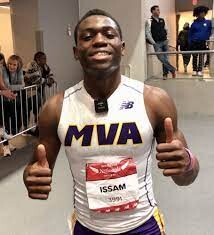
The official American high school boys record stands at 10 seconds flat—a time Trentavis Friday ran in 2014. That is as close as any high schooler has come to breaking 10 seconds in legal conditions. Before Asinga’s run on Sunday, Matt Boling had the fastest all-conditions run in American high school history, posting a 9.98-second 100m back in 2019. That race saw winds of 4.2 meters per second.
Despite running in far slower winds than Boling felt during his race, Asinga obliterated that record, flying to the finish line. A wind conversion calculator shows that his result is equal to a 9.85 run in 2.0m/s wind and a 9.93 in still conditions. In either case, Asinga’s time would smash all previous American high school records.
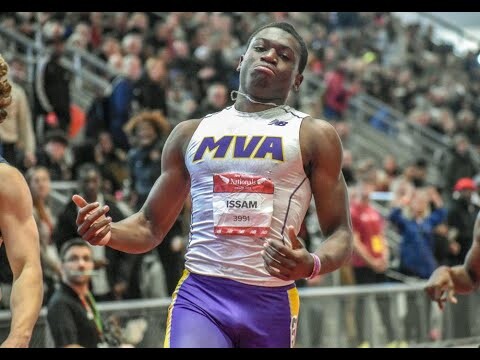
After the race, Lyles took to Twitter to congratulate the young sprinter. “Shout out to Issam Asinga,” he wrote. “I can definitely see us racing on the big stages if you keep improving and you can definitely get that HS record man!” There’s no word on when Asinga’s next race will come, but it will be an exciting one to watch as he chases a wind-legal result.
(04/24/2023) Views: 656 ⚡AMPby Running Magazine
Kenya’s Samwel Mailu smashed the course record at the Vienna City Marathon
Kenya’s Samwel Mailu smashed the nine-year-old course record of the Vienna City Marathon, running 2:05:08 at the World Athletics Elite Label road race on Sunday (23).
Despite warm conditions during the second half of the race, the 30-year-old was 33 seconds quicker than the former course record-holder GetuFeleke of Ethiopia, who clocked 2:05:41 in 2014. Mailu’s compatriots BethwelYegon and Titus Kimutai followed with 2:06:57 and 2:07:46 in second and third, respectively.
There was a Kenyan double as Magdalyne Masai won the women’s race in 2:24:12 from Agnes Keino, who ran 2:24:25. Ethiopia’s GadiseMulu was third with 2:24:50.
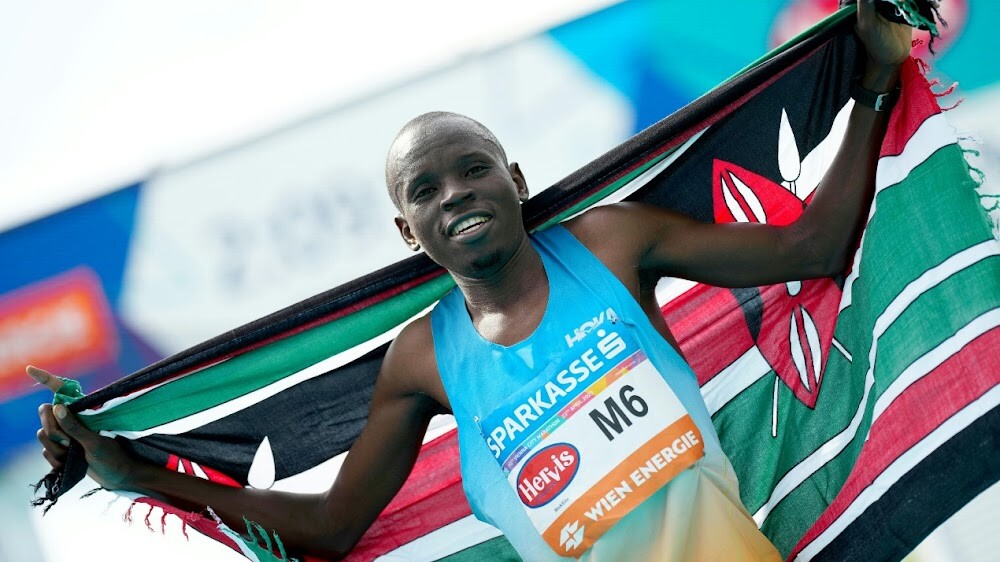
With temperatures climbing to around 20°C in unexpectedly sunny conditions during the second half of the jubilee race, the men’s leading group ran a consistently fast pace. After a 29:43 10km split, a group of 11 runners including three pacemakers reached halfway in 62:43.
The pace continued to be fast and the group then partly broke up between 26km and 28km in the Prater Park, where EliudKipchoge broke the two-hour barrier in 2019.
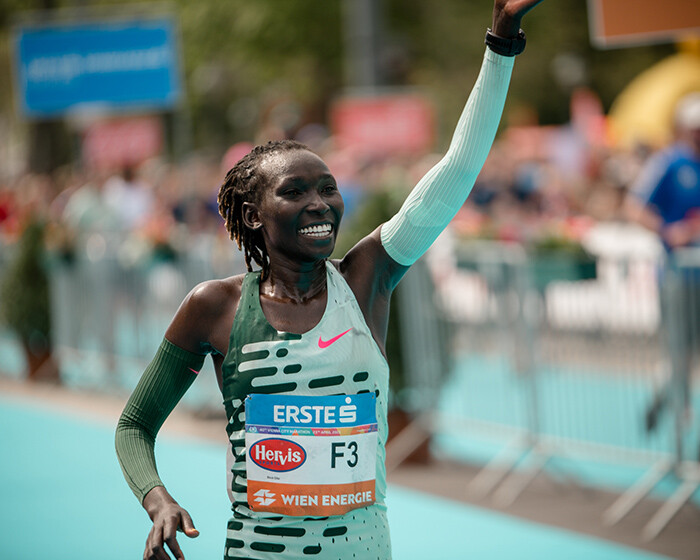
There were still six runners in contention when the leaders reached 30km in 1:29:13 and it was an all-Kenyan affair: Yegon, Mailu, Kimutai, Joshua Kogo, Bernard Chepkwony and debutant Elvis Cheboi. The latter two then lost contact, while Mailu started to pull away.
Between 32-33km he had a lead of around 10 meters over Kimutai and another 15 meters over Yegon. While these gaps grew considerably in the final five kilometers, Yegon was able to overtake Kimutai for second place.
But there was no way of catching Mailu, who ran an unexpected marathon debut in Frankfurt last year. He was a pacemaker but then continued to run and finished second with 2:07:19.
“The race in Frankfurt gave me a lot of motivation,” he said. “For me, today was kind of another marathon debut. This was my biggest career win.”
In contrast, the women never really started the planned attack on the course record. With slower split times than expected, there were initially 11 runners in the first group. Once the pace picked up a bit the group was reduced to seven at the 10km mark (33:48). Six women then reached halfway in 72:04: Kenyans ViselineJepkesho, Masai, RebeccaTanui and Keino as well as Ethiopians Mulu and NuritShimels. Tanui and Shimels were then dropped while the other four passed the 30km mark in 1:41:58.
With little over seven kilometers to go, Keino made a move in the Prater Park. The winner of last year’s Munich Marathon was around 15 meters ahead of Masai, but she could not increase her advantage. Instead, Masai responded and overtook her Kenyan rival soon afterwards.
“It was a perfect race for me,” said Masai, who is the younger sister of 2009 world 10,000m champion Linet Masai and 2009 world 10,000m bronze medalist Moses Masai. “I ran well and had some energy left for the last couple of kilometers. I have prepared for the Vienna City Marathon since January. I am very happy to have won, but I would have like to run a bit faster than 2:24.”
(04/24/2023) Views: 538 ⚡AMPby World Athletics
Vienna City Marathon
More than 41,000 runners from over 110 nations take part in the Vienna City Marathon, cheered on by hundreds of thousands of spectators. From the start at UN City to the magnificent finish on the Heldenplatz, the excitement will never miss a beat. In recent years the Vienna City Marathon has succeeded in creating a unique position as a marathon...
more...London Marathon Men — Kiptum Blinder With Boggling Splits
Kelvin Kiptum found a way to better his marathon debut world record as he dashed away from a quality field, blitzing a stupefying 59:45 second half to win the London Marathon with a 2:01:25 clocking.
“I am so happy with my performance in my first World Marathon Majors, and to run the second fastest time in history,” Kiptum beamed. “The secret is hard training, and my preparation was very good. Everything was going one way, and I was expecting good results.”
Race day certainly went Kiptum’s way as the 23-year-old not only pared 72 seconds off Eliud Kipchoge’s London course record, he scared Kipchoge’s 2:01:09 global standard, and moved past Kenenisa Bekele to No. 2 on the all-time list.
Left far behind was the competition as Geoffrey Kamworor ran a PR 2:04:23 to finish 2nd as Tamirat Tola filled out the podium with a 2:04:59 effort.
Kiptum picked up right where he left off last December in Valencia when he ran a stunning 2:01:53 marathon debut, closing the second half in 60:20. Having logged that impressive sub-2:02 debut, this run was less stunning than it was spectacular as Kiptum hit speeds seldom seen on a marathon course.
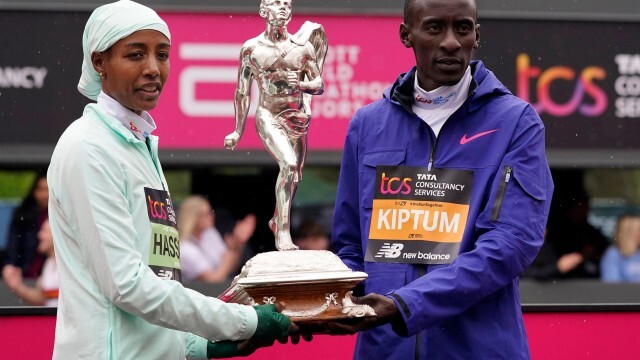
While the runners set off on wet pavement, the expected steady rain did not materialize and the light wind, 50-degree (10C) temperatures and a crisp 38-degree dewpoint combined for some fast running. Well at least for Kiptum.
Defending champ Vincent Kipruto and Kiptum were ready for a fast getaway, clipping at the pacers’ heels through the downhill opening 5K (14:30) before settling into a steady 2:56K pace.
Crossing 20K on the Tower Bridge in 58:31 (2:03:27 pace), Kiptum seemed to egg on the trio of pacers as they upped the tempo to pass halfway in 61:40. The move also yielded a generational change of sorts as the 40-year-old Bekele slipped out of contention while Kiptum sped on in an effort that would supplant the Ethiopian’s 2:01:41 Berlin ’19 win.
The ensuing 5K segment in 14:22 between 20 and 25K pared the pace down to a 2:03:01 clip, and the lead group to 6 contenders. Kenyans Kiptum, Kamworor and Kipruto led the charge, a stride ahead of the Ethiopian trio of Tola, Seifu Tura and Leul Gebrselassie.
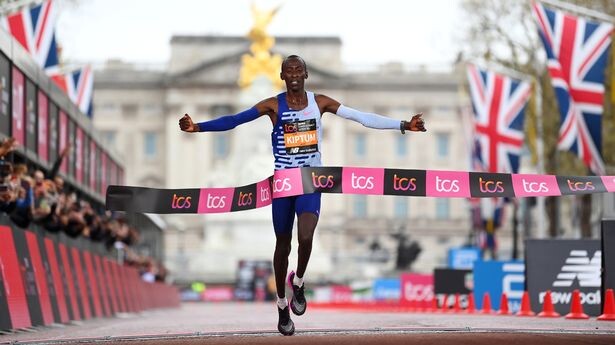
Covering the subsequent 5K in 14:30 pushed the tempo down to 2:02:57 at 30K (1:27:23) when Kiptum’s obvious exuberance could no longer be restrained.
Kiptum’s break came after he missed his 30K fluid grab. “My plan was to catch a water,” he said. “But unfortunately, I missed and I said, ‘Let me make a move,’ so I try.”
Kiptum’s try was a sharp acceleration covered at first by Kamworor and Tola, but soon they were left behind.
After facing Kiptum in Valencia, Tola was ready for the move but discovered one of his legs wasn’t: “When he was moving, I start with him but my leg was not OK, so I kept on my pace to finish.”
Kamworor clung to the radical speed a bit longer before coming to his senses: “When Kelvin made a move, that was a crazy pace and I couldn’t go with it because that was insane, so I said, let me go with my pace.” Note that this perspective comes from an athlete who knows something about insane pace as he closed out his 2018 World Half-Marathon Championship in Valencia with a blistering 13:01.
Once cut loose, Kiptum covered ground effortlessly, with a little side-to-side shoulder movement in his arm swing, but from his bib number on down he ran as smoothly as Kipchoge. Looking well within his comfort zone Kiptum’s breakaway was sealed with a 13:49 split to hit 35K in 1:41:12 — 2:02-flat pace.
The sub 2:50 kilo pace continued all the way down the Thames Embankment with a 14:01 split through 40K, and running 6:12 over the final 2195m.
Kiptum admitted, “It was difficult between 30 and 40K, and at 41 and 42 I was so exhausted I had no energy.”
The 58:42 half-marathoner’s transition to the full distance seems complete as for a second race in a row, after some 30km of running, Kiptum was able to shift back into the 2:48 pace of a sub-59:00 HM.
Scant few marathoners split a sub-2:50 kilometer; Kipchoge recorded 8 in the first half of his WR run last October, and 4 in his 2:01:39 record run. Kiptum ran 6 consecutive sub-2:50s between 31 and 37K in Valencia, and went even faster here, averaging 2:47.5 over the final 12,195 meters.
That’s 1:57:48 marathon pace.
Kiptum’s improbable finishing speed and rise to the top tier of marathoners over the short span of 5 months and two competitions is a rare achievement. The Kenyan phenom has impacted the marathon world like an unassuming rookie pitcher hitting the big leagues and pounding the strike zone with 105mph fastballs.
Managed by Marc Corstjens, the soft-spoken Kenyan is based in Chepkorio, 6km east of Kipchoge’s Kaptagat camp. Kiptum is self-coached, often trains alone with a preference for long, hilly runs in the forest — reminiscent of Sammy Wanjiru’s ’08 Olympic year training.
“My focus now is marathon,” Kiptum said. “I have done some half-marathons, I have run 59 or 58 seven times, so I said, ‘Let me try to shape up for the marathon.’”
As for chasing Kipchoge’s WR, Kiptum demurred with the patience evidenced in his opening 30K: “I will go home and see, but not now. Maybe in 2 or 3 years with good preparation.”
Among the field’s highly decorated veterans, Kamworor was happy to run his best race since his ’19 motorbike accident: “The race was good, and I am happy that I have come back after a long time struggling with injuries.”
Mo Farah closed out his marathon career finishing 9th in 2:10:58, while Bekele was less fortunate, perhaps closing out his stellar career with a DNF.
Top 10 Men Finishers
1. Kelvin Kiptum (Kenya) 2:01:25
2. Geoffrey Kamworor (Kenya) 2:04:23
3. Tamirat Tola (Ethiopia) 2:04:59
4. Leul Gebresilase (Ethiopia) 2:05:45
5. Seifu Tura (Ethiopia) 2:06:38
6. Emile Cairess (Great Britain) 2:08:07
7. Brett Robinson (Australia) 2:10:19
8. Phil Sesemann (Great Britain) 2:10:23
9. Mo Farah (Great Britain) 2:10:28
10. Chris Thompson (Great Britain) 2:11:50
(04/24/2023) Views: 641 ⚡AMPby Track and Field News (Sean Hartnell)
TCS London Marathon
The London Marathon was first run on March 29, 1981 and has been held in the spring of every year since 2010. It is sponsored by Virgin Money and was founded by the former Olympic champion and journalist Chris Brasher and Welsh athlete John Disley. It is organized by Hugh Brasher (son of Chris) as Race Director and Nick Bitel...
more...Kenya’s Bernard Koech won the men's race at the Haspa Marathon Hamburg in a course record while Dorcas Tuitoek completed a Kenyan double by winning the women’s race
Kenya’s Bernard Koech won the men's race at the Haspa Marathon Hamburg in a course record of 2:04:09, while Dorcas Tuitoek completed a Kenyan double by winning the women’s race in 2:20:09 on Sunday (23).
Their compatriots Joshua Belet and Martin Kosgey took second and third in the men’s race with 2:04:33 and 2:06:18, respectively. Long-time leader Tiruye Mesfin of Ethiopia struggled in the final stages and despite falling, she still finished second in the women's race in 2:20:18, while Stella Chesang clocked 2:20:23 on her debut to break the Ugandan record.
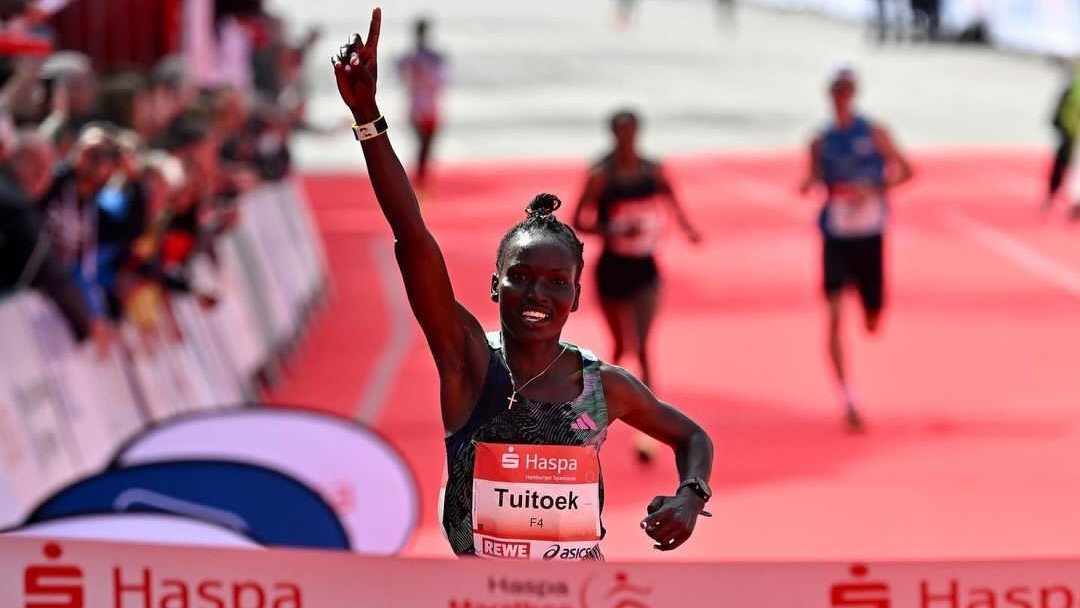
In almost perfect conditions a leading group of 13 runners formed in the men’s race right after the start and they stayed together until the 27th kilometer. The half marathon mark was passed in 62:32, slightly off course record pace. But after 27km the pace of the leading group increased and Koech, Kosgey and Belet broke away. Kosgey dropped back right before the 35km mark and the decisive moment came when Koech left Belet behind.
Koech built on his lead and with 2:04:09 he improved the course record by 38 seconds.
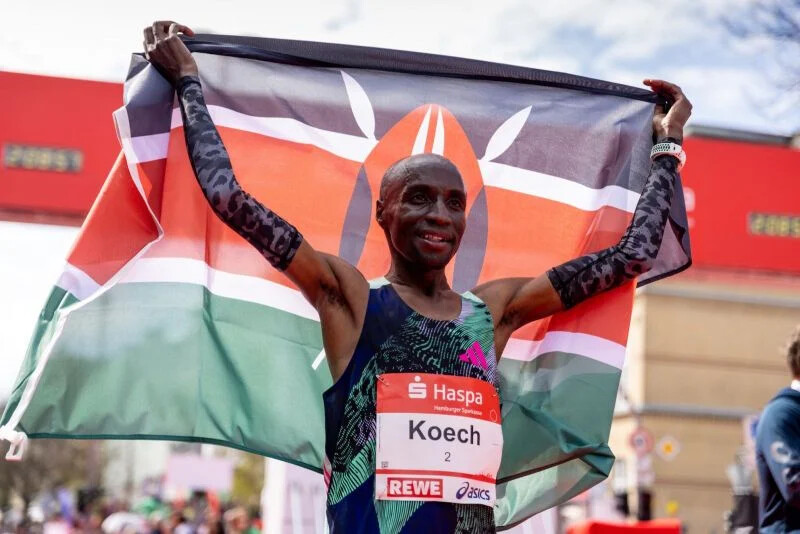
With 2:04:33 for second place, Belet was also under the previous record, while Kosgey followed in 2:06:18.
Brazil’s Daniel Do Nascimento, who was among the pre-race favorites, finished fourth in 2:07:06.
“I ran a god race and I knew that I probably had to run a time around my PB to win,” said Koech. “I spoke with Eliud Kipchoge about the course before I came here and he gave me some advice.”
Kipchoge won his marathon debut in Hamburg back in 2013.
Kenya’s Rhonzai Lokitam Kilimo finished fifth in 2:08:08, the same time as Germany’s Richard Ringer – a PB for the latter, which is two seconds inside the Olympic qualifying time.
As expected, it was Mesfin who took the lead in the women’s race early on. But with a half marathon split of 69:46, she was not as fast as she had planned. The 2:17:23 course record was out of reach, but at 35km Mesfin looked a certain winner.
She was around a minute ahead of her rivals, but then disaster struck. The 20 year-old slowed and then stumbled, falling to the ground in the final kilometer. Behind her, Tuitoek saw her opportunity and found another gear to pass Mesfin around 300 meters from the finish line.
“I was really surprised to win. I did not see when Tiruye Mesfin fell, I was just fully focused on myself. I still had enough energy,” said 25-year-old Tuitoek, who had a PB of 2:24:54 before the race. “I knew that I could probably run a 2:20 time. This course is really fast and good for records.”
(04/24/2023) Views: 615 ⚡AMPby World Athletics
Haspa Marathon Hamburg
The HASPA MARATHON HAMBURG is Germany’s biggest spring marathon and since 1986 the first one to paint the blue line on the roads. Hamburcourse record is fast (2:05:30), the metropolitan city (1.8 million residents) lets the euphoric atmosphere spill over and carry you to the finish. Make this experience first hand and follow the Blue Line....
more...London Marathon 2023: Kelvin Kiptum and Sifan Hassan win with superb runs
Kenya's Kelvin Kiptum smashed compatriot Eliud Kipchoge's course record to win the men's London Marathon in the second-fastest time ever.
The 23-year-old was just 16 seconds outside Kipchoge's world record, finishing in two hours one minute 25 seconds.
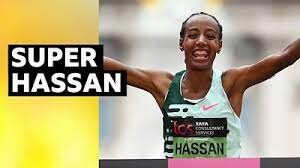
Sifan Hassan also produced a remarkable run to win the women's race.
The Dutch Olympic track champion, 30, suffered with a hip injury but battled to win on her debut at the distance.
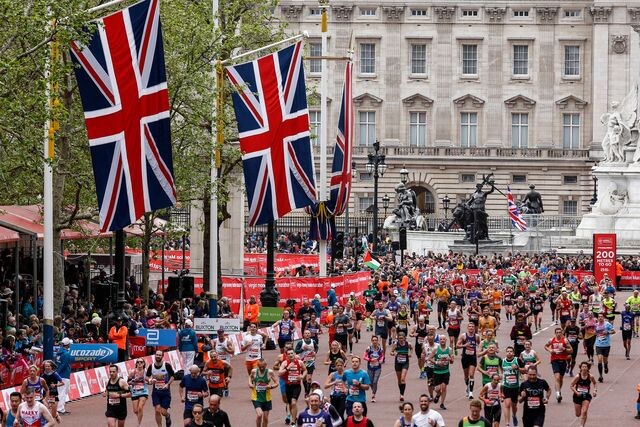
“It was really amazing,” she says. She never thought she could win, so can’t believe that she did. The crowd are amazing, she says, and every single kilometre she was grateful to be there.
She’s so happy and it’s beautiful to see; she explains she has a pre-existing hip problem, hence the stretching, and because she was fasting she didn’t practise so didn’t know where to stop for drinks.
At 20km she felt she wasn’t tired and was thinking about getting experience for her next marathon and at every moment she was grateful. She didn’t have confidence because she didn’t practise drinking and she found it really tough; she realised she didn’t have to have as much as she should.
Living in the States, she used to set her alarm to watch this race, and now she’s won it she’ll never forget it. She’d been told she’d hurt, but felt much better after 35km than she thought, and when she saw the line she thought it that really it?!
She needs to decide what race she’ll run at the Paris Olympics next summer but she’s so grateful. What an incredible racer and lovely person.
Kiptum produced the fastest marathon debut in Valencia in December, where he finished in 2:01:53 - the third-fastest time in history.
He went faster still on the streets of London, knocking one minute and 12 seconds off Kipchoge's previous course record to beat second-placed compatriot Geoffrey Kamworor by almost three minutes.
Ethiopia's reigning world champion Tamirat Tola was third, while Britain's Mo Farah finished ninth in what he says will be his last marathon.
Emile Cairess, 25, produced a superb run to finish as the first British man home, taking sixth in 2:08:07 on his marathon debut.
It was the third-fastest marathon time by a British man - behind Farah and Steve Jones - and the second fastest by a Briton in the London race.
Four British runners finished in the top 10 in total, with Phil Sesemann eighth and Chris Thompson 10th.
In the women's race, Hassan, who won the 5,000m and 10,000m at the Tokyo Olympics in 2021, appeared out of the race after dropping back early on with a hip problem, but gradually fought back.
She then produced a sprint finish to win in two hours 18 minutes 33 seconds.
Ethiopia's Alemu Megertu was second and Kenya's previously unbeaten Olympic champion Peres Jepchirchir third.
Kenyan world record holder Brigid Kosgei looked to be limping from the start and dropped out after just three minutes, while Ethiopia's defending champion Yalemzerf Yehualaw was fifth.
Sam Harrison, 27, was the first British woman home, clocking a new personal best of 2:25:59 for the 26.2-mile distance as she claimed 11th.
It was the fifth-fastest time by a British woman in the event.
Switzerland's Marcel Hug knocked 50 seconds off his own course record to win a third consecutive London Marathon men's wheelchair race - and fifth in total.
Hug, 37, finished in one hour 23 minutes 48 seconds, well ahead of the Netherlands' Jetze Plat in second, with Japan's Tomoki Suzuki third and the United States' Daniel Romanchuk in fourth.
Britain's David Weir, 43, finished his 24th London Marathon in fifth place.
Australia's Madison de Rozario held off Manuela Schar, of Switzerland, in a sprint finish to win the women's wheelchair race for a second time.
The four women's favourites made it on the Mall together before De Rozario and Schar pulled away.
De Rozario won in one hour 38 minutes 52 seconds, with defending champion Catherine Debrunner, of Switzerland, in third and the United States' Susannah Scaroni fourth.
Eden Rainbow-Cooper, 21, who was third in 2022, was the first Briton home in seventh.
The event has returned to its traditional date in the calendar, in April, for the first time since 2019 after being moved during the Covid-19 pandemic.
More than 47,000 runners are taking part, with huge crowds lining the streets of London despite damp conditions.
(04/22/2023) Views: 692 ⚡AMPTCS London Marathon
The London Marathon was first run on March 29, 1981 and has been held in the spring of every year since 2010. It is sponsored by Virgin Money and was founded by the former Olympic champion and journalist Chris Brasher and Welsh athlete John Disley. It is organized by Hugh Brasher (son of Chris) as Race Director and Nick Bitel...
more...Two Firefighters Ran the Two Oceans Half Marathon in Full Gear
Renaldo Duncan and Jermaine Carelse completed the Cape Town race to support Volunteer Wildfire Services.Running a half marathon while wearing ski boots is one thing, but taking on a race in full firefighter gear is a whole new level.
On Sunday, two fire and rescue service members, Renaldo Duncan and Jermaine Carelse, completed the Two Oceans Half Marathon in Cape Town, South Africa, while wearing full firefighting gear to support a local charity.The men donned heavy jackets and helmets for the duration of the half—though no large boots were involved, as the firefighters opted to wear traditional running shoes to make things a bit more pleasant.
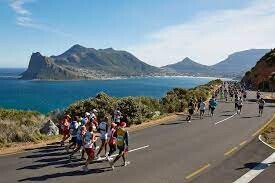
While the weight of firefighter gear was indeed a hindrance during the race, the biggest challenge was how the equipment would affect body temperature in the late miles.
"We started heating up and [had] to take in a lot of fluids," Duncan told News24 in Cape Town. "It’s probably the most fluid I’ve ever taken in a race."
Duncan, a 13-year veteran firefighter, trained for this year’s Two Oceans by running in full firefighter gear during other races, and the duo had completed the race together—also in full gear—back in 2017. With the gear on, the pair completed this year’s run in 2:41.
The firefighters did the stunt in hopes of raising awareness and donations for the Volunteer Wildfire Services (VWS), which combats runaway fires in the area. The VWS is a collection of about 320 volunteers that fight dangerous brushfires by wading through dense brush and across treacherous terrain to contain fires before they can spread farther.
"A lot of the city’s annual fires, around half, are bushfires, and a lot of that happens in the green belts that surround the city, whether in Helderberg or along Table Mountain National Park,” said JP Smith, a mayoral committee member for safety and security, to News24. “These fires can be utterly devastating [and] we depend heavily on the VWS ... these volunteers do really brilliant work, and they do a lot of fundraising and need a lot of equipment.”
This isn’t the first time firefighters have opted to go full gear for a good cause. In 2015, firefighters in Ontario ran with 70 pounds of gear to raise awareness for PTSD. That same year, a New Jersey firefighter set a record for the fastest mile in full gear with a time of 6:45 to raise awareness for his charity, Team Firefighter.
(04/22/2023) Views: 666 ⚡AMPHere Are the 10 Most Hilarious Guinness World Records Being Attempted at the 2023 London Marathon
So far, 2023 has already given us so many memorable, slightly useless Guinness World Records—from the man who ran a half marathon while wearing 120 t-shirts to the J.K. Rowling fan that ran the fastest half marathon time while dressed as a witch and the man who crushed a half-marathon while in ski boots. Luckily, if you’re a fan of watching such feats, one of the premier events in the running world for setting wacky world records—the London Marathon—is here.
Last year’s event saw 18 records broken out of a possible 34 attempts, including the one completed by Kellie Clark, who, with her Snickers bar outfit, became the speediest female dressed as a candy confectionery item with a time of 4:24:06 and who could forget David Jones, who finished in 2:47:15 while wearing his pajamas.The number of attempts is no coincidence, as the race is entering its 16th year of collaboration with Guinness to bring creative and inspirational runners to the race to raise awareness for specific charities and organizations.
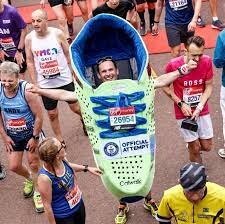
Guinness World Records adjudicators will be present at the start and finish lines of the TCS London Marathon to evaluate costumes, verify runner times, and certify any successful participants as official Guinness World Record holders, entitling them to be featured in the next installment of the book released in September 2023.
“It will be all my birthdays, and Christmases come at once! I used to get a copy of the Guinness World Records book every year under the tree and pore over it, gobsmacked by all the weird and wonderful records. So, to be included in there would absolutely be a dream come true,” said Jack Glasscock, who spoke to marathon organizers about the prospect of becoming the fastest man dressed as a Domino’s Pizza garlic and herb dip. Eliud Kipchoge may never be able to claim that.
While Glasscock, who is running to raise funds for the Teenage Cancer Trust, is one of the many costumed record hopefuls raising money for the charity of their choice, others, like Radio 1 DJ Adele Roberts, are hoping to break a record without an outfit. Roberts is just 18 months removed from surgery to remove her bowel and hopes to become the fastest marathoner with an ileostomy. She will do so to raise money for Attitude Magazine Foundation, which supports LGBTQ+ communities.
The 2023 edition of the race will be even more exhilarating, with a whopping 73 records set to be challenged this time. We’ll spare you the details of all 73, but we will share 10 of this year’s absolute dumbest records being attempted. Strap on your favorite candy-bar costume and get ready to be inspired:
Fastest marathon dressed as a three-dimensional dinosaur (male)
Fastest marathon dressed as a three-dimensional aircraft (male)
Fastest marathon dressed as a three-dimensional aircraft (female)
Fastest marathon dressed as a knight (male)
Fastest marathon in a full-body inflatable costume (male)
Fastest marathon carrying a household appliance
Fastest marathon dressed as a savory food (female)
Fastest marathon dressed as a gingerbread person
Fastest marathon dressed as a crustacean (female)
Fastest marathon dressed as a piggy bank
(04/22/2023) Views: 784 ⚡AMPby Runner’s World
Five Recovery Foods That Pro Athletes Can’t Get Enough Of
The best athletes don’t just train hard—they also recover smart. And a big part of effective recovery is the post-workout meal.
A good after-exercise nutrition plan can help an athlete replace the energy they burned during a workout, repair and rebuild muscles, and provide the fuel they need to crush their next training session, according to Jordan Hill, a Colorado-based registered dietitian and certified specialist in sports dietetics with Top Nutrition Coaching. The resulting gains can be significant.


Just ask Lea Davison. When the two-time Olympic mountain biker worked with a nutritionist some 10 years ago to dial in her post-workout fueling plan, she “really noticed the difference,” describing a reduction in rabid hunger and a feeling of being “stronger all around.”
When curating a post-workout snack or meal, folks should look for two main things: carbs and protein, says Hill. Carbs help reduce inflammation, boost immunity, and stimulate the release of insulin, a muscle-building hormone that also helps refill your body’s glycogen stores (your muscles energy source). Protein helps refill your glycogen stores as well, and also halts muscle breakdown and promotes the growth of new muscle, Hill explains. Moreover, when combined, carbs and protein reduce cortisol, a hormone that causes muscle breakdown.
Athletes should consider foods rich in antioxidants like fruits and vegetables, and omega-3s like nuts, seeds, and fish, as they tamp down inflammation and further assist in the recovery process, Hill explains. It’s also important to keep in mind hydration and electrolyte replenishment, especially sodium and potassium.
When it comes to carbs and protein, the amount you consume matters. After an intense workout, look for a three-to-one ratio of carbs to protein, or closer to a two-to-one ratio if your goal is weight loss, says Hill. You can calculate your target amount of protein in grams by dividing your bodyweight in kilograms in half. Then, multiple that figure by two or three to get your carbohydrate value in grams, Hill explains.For example, with the three-to-one ratio, someone who weighs 150 pounds (68 kilograms) would have a target protein goal of 30 to 35 grams and a target carbohydrate goal of 90 to 105 grams. Keep in mind this guidance applies only to intense workouts—the type that leave you sweaty, tired, and potentially sore the next day. Following a gentler workout—say, a yoga session or quick 20-minute strength routine—these specific ratios aren’t as important, says Hill, who recommends folks in those scenarios just follow their general eating patterns for the day.
Last tip: Pay attention to timing. Women should aim to eat their protein amount within 30 minutes of a workout. That’s because certain hormone fluctuations that occur in women post training can accelerate muscle breakdown, explains Hill, and getting in protein quickly can help combat that. Women can eat their carbs alongside the protein, or eat the carbs separately up to two hours after the workout. The guidance is a little less strict for men: so long as they eat both the protein and carbs within two hours of exercising, they’ll reap the benefits.
Need some inspiration for your next post workout meal? We tapped two-time Olympic mountain biker Davison and four other elite athletes to learn what they typically feast on after a tough training session.Pro snowboarder and Olympic silver medalist Julia Marino usually gravitates towards a smoothie with a mixture of frozen fruit, coconut milk, yogurt, and protein powder. “It’s not too heavy,” says Marino of her go-to snack. “When I’m done working out and pretty warm, I’m craving something light and colder that’s easily digestible.”
Meagan Martin, a pro climber and American Ninja Warrior women’s champion, is also a fan of the post workout smoothie. Her concoction often features a mix of frozen fruits and veggies (like banana, pineapple, blueberries and spinach), along with cinnamon, chia seeds, almond milk, almond butter, and sometimes whey protein. “I have this after any workout,” says Martin. “Whether it’s a climbing session or a cardio workout, it’s just the thing my body needs.”
Hill, the nutritionist, endorses these types of smoothies as a great way to get antioxidants, hydration, and protein following a workout. Just be sure to pay attention to portion sizes to ensure you’re hitting a good ratio of carbs to protein, she advises.
During cold months, Davison frequently refuels with a fruit smoothie, similar to the ones described above. But after a long ride on hot days, she favors a DIY slushie: She blends a scoop of unflavored protein powder with lemonade and frozen, locally-picked strawberries.“It’s easy to drink,” she says, adding that the tartness of the lemonade helps counterbalance the sweet chews, bars, and gummies she consumes during her ride. If her workout concludes at home, she’ll quickly whip this up within the 30-minute recovery window, or, if she’s ending a ride at a trailhead, she’ll make it in advance and stash it in a Yeti cooler so it stays chilled.
This concoction, says Hill, offers “great hydration” and electrolytes in addition to protein. The strawberries and lemonade (so long as it’s sugared) provide carbs, she adds. If you’re making this at home, Hill recommends monitoring the portion size to ensure the carb to protein ratio is sufficient.Adidas-sponsored athlete Chris Nikic, who in October became the first person with Down syndrome to finish the Ironman World Championship, is a Chipotle devotee. The 23-year-old athlete’s favorite food is rice, and every day for lunch he orders a heaping burrito bowl with all the fixings: brown and white rice, brown and black beans, chicken, veggies, corn, cheese, and guacamole. The end result is “a four-pound bowl,” says Nikic, who is currently training for the Tokyo Marathon and notes the meal tastes best after a run.
Nikic’s go-to is a “great option,” says Hill. It provides protein, lots of carbs—including both easy-to-digest simple carbs from the white rice and satiating fiber-rich carbs from the brown rice—as well as antioxidants from the veggies.
When it comes to post exercise fueling, Dylan Bowman is a creature of habit. For years now, the professional trail runner has consumed the same recovery meal pretty much every day. He’ll scramble two eggs with greens and onions and then “liberally” butter two pieces of bread. Sometimes, he adds avocado if he’s feeling extra hungry. “I love it because it’s simple and quick,” Bowman explains. “I can get it in quickly and get the recovery process started before I begin the work day.”
This meal hits the big components, says Hill: protein with the eggs, healthy fat with the avocado, and carbohydrates with the toast. If you need more calories depending on the intensity of your workout, Hill recommends either increasing the portion sizes or pairing the meal alongside something else, like oatmeal with berries and honey.When Davison is craving “real” food (i.e. something she can chew, not just sip) she whips up eggs fried over medium with toast, or concocts egg tacos with cheddar cheese, salsa, scrambled eggs, and corn tortillas. “Eggs are my go-to for lunch mostly,” she says.
The breakfast taco option is really similar to Bowman’s staple and provides carbs from the tortillas plus protein from the eggs. The salsa adds antioxidants. Depending on the intensity of the workout, Hill might recommend adding extra carbs to properly refuel—things like orange juice, chocolate milk, or a small cup of fruit.
(04/22/2023) Views: 798 ⚡AMPby Outside
London defending champ Amos Kipruto speaks out on Kenyan doping problem
Kipruto, who used a 4:21 25th mile to win last year’s race, says his preparation has gone well for London, and while he hasn’t done every session with high-powered training mates Evans Chebet and Benson Kipruto (who just went 1-3 in Boston), he has run a number of workouts with them and has finished alongside them. He said his fitness is on par with when he won this race six months ago.
“Last year’s shape and this year is really similar, no change,” Kipruto said.
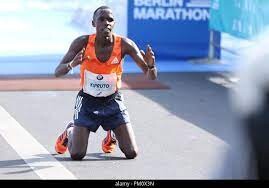
Kipruto was asked in the main press conference about his thoughts on Kenya’s doping problem — the country saw at least 25 athletes suspended in 2022 — and spoke candidly about the issue, calling it “an embarrassment.”
“It’s really killing me sometimes, my heart, because when you see someone has been caught, it’s really raising a lot of questions in your mind,” Kipruto says. “You’re asking yourself why this person go through this? You find someone injecting yourself, you find someone buying some medicine, swallow some medicine and you know [they’re healthy and don’t need it]. So someone is not even thinking about his health.”
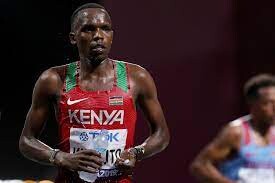
Kipruto echoed the comments fellow Kenyan marathoner Mary Ngugi made to the BBC on Wednesday, saying success is the product of patience and time. He believes too many athletes want to take a shortcut to success by doping.
“When you tell someone be patient, they see you like you are talking nonsense,” Kipruto said. “…What kills athletes mostly is impatience, they need to rush. You find someone getting everything. they want to run faster to get money, which is not correct. But if someone is clever enough, you better be patient and your time will come.”
Kipruto is pleased that the Kenyan government has taken action to fight doping, dedicating $5 million per year over the next year toward tackling the issue. He says he believes the AIU is doing a good job by using more sophisticated methods to catch dopers and asked for them to keep pushing.
“The request I have for the AIU and [the Anti-Doping Agency of Kenya] is to tighten up a lot, even to bring more technology how to catch dopers,” Kipruto says. “…If they introduce even more systems how to handle this doping, I’ll be happy.”
(04/22/2023) Views: 552 ⚡AMPby Letsrun
TCS London Marathon
The London Marathon was first run on March 29, 1981 and has been held in the spring of every year since 2010. It is sponsored by Virgin Money and was founded by the former Olympic champion and journalist Chris Brasher and Welsh athlete John Disley. It is organized by Hugh Brasher (son of Chris) as Race Director and Nick Bitel...
more...Kenenisa Bekele Says His Training Ahead Of London Has Been Good, But Not Perfect
On Sunday, 2019 Berlin Marathon champion Kenenisa Bekele of Ethiopia will take on defending champion Amos Kipruto of Kenya in a potentially explosive 2023 London Marathon race.
Last year, he finished fifth in 2:05:19 behind Kipruto (2:04:39). In an exclusive interview with Nation Sport, the two-time Olympics 5,000 metres and 10,000m champion admits that this year’s race features one of the strongest fields. He talked to our writer Bernard Rotich.
Question: Having completed your training for the London Marathon, how have your preparations been so far?

My training has been good, but not perfect. I had minor injuries earlier on in my training programme, but I feel healthy and fit for Sunday’s race.
Where do you train specifically, and what does your day to day programme look like?
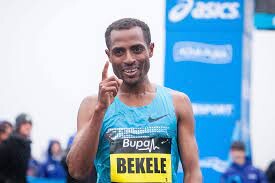
I train around Addis Ababa in Ethiopia. I do runs at altitude, and Entoto Forest Park in Addis Ababa is one good place for that. But I also do low altitude training around Sendafa, a small town located some 38 kilometres to the East of Addis Ababa. Of course, exercise training becomes an important part of my training programme ahead of races.
How does your diet look like when training for races? Do you have special food during that period?
Not any specific food. Most importantly, I like a variety of food. I eat a lot of vegetables, nuts, fruit, some meat, pasta, rice, milk and of course our national food injera which is high in nutrients. For me, just plain food is enough, not too much spices and oil.
Which was your last race and what can you say about your performance in it?
My last race was the 2022 London Marathon. I had hoped for more in the race, but I couldn’t achieve what I set out to do. I was struggling healthwise, having suffered a double Covid-19 infection.
At the 2019 Berlin Marathon, you came close to breaking Eliud Kipchoge’s then world record in the marathon of 2:01:39 by two seconds, but Kipchoge further lowered that time. Is Kipchoge’s new world record of 2:01:09 within reach for you?
Actually, it is what motivates me. Of course I still hope it will happen one day.
When competing against Kenyans, do you come under pressure, or do they help you to push yourself to the limit?
Good competition always helps to motivate me to push myself the extra bit. We need each other to excel in athletics.
You have had a long and successful athletics career. What is your secret to longevity?
My talent is God-given. This is what God chose for me to do. I had dreams, and I still have many goals to achieve. That keeps me going.
How have you invested your earnings from athletics, and what advice can you give upcoming athletes who look up to you?
I built my own synthetic athletics track in Sululta, about 20km north of Addis Ababa. Initially, I built it for my track training. I needed a good soft track surface to avoid injury. Nowadays, almost all Ethiopian athletes train there, which supports athletics in Ethiopia. Next to it, I built a training center and guesthouse where athletes can stay. We need to help each other and build for the community.
What is your message to your fans ahead of Sunday’s race?
I’m very happy with all the support I get from all over the world. The crowds are usually really amazing in London. I really appreciate the support I get from my fans during my preparations. I see it, and it motivates me.
You belong to NN Running Team. How has your experience been so far?
For me, the medical and nutritional support of the team has made the difference. I have access to the best sports doctors, physios, nutritionists and products. I owe them a lot. It has been career extending, and they are the reason I am still chasing my dreams and goals.
What do you think of the 2023 London Marathon line-up? Do you feel pressure to deliver?
Of course in a World Marathon Major, you can only expect a top field of athletes. The competition is really strong this year, but I’m looking forward to getting the most out of myself.
Who are your training partners? What do you think of them?
I train with Leul Gebresilase who will also compete in London Marathon. Training together with other strong athletes motivates me to push the boundaries. I think Leul is strong. He finished second last year, but let’s see what will happen in this race.
(04/22/2023) Views: 534 ⚡AMPTCS London Marathon
The London Marathon was first run on March 29, 1981 and has been held in the spring of every year since 2010. It is sponsored by Virgin Money and was founded by the former Olympic champion and journalist Chris Brasher and Welsh athlete John Disley. It is organized by Hugh Brasher (son of Chris) as Race Director and Nick Bitel...
more...Run Commuting Could Benefit Your Training
First, it was the check engine light in my car.
Then it was the rear derailer on my bike.

With my two primary modes of transportation out of commission, I decided to take to the streets and try run commuting to work.
It seemed like the perfect way to boost my mileage and revamp my training with new routes. So I laced up my shoes, invested in some dry shampoo and hit the road.
Besides its obvious transportation value, run commuting has many benefits for even the most road-averse trail runners.
"I definitely believe that run commuting helps my trail running," says ultra-champ Michael Wardian, of Washington, D.C. "It takes planning, carrying a load, perseverance and dedication."
Much like packing and planning for a big trail run or race, commuting takes a bit of prep. I cross-referenced Google Maps and Strava for routes that balanced efficiency and less traffic. Find out how long your commute should take you, then give yourself extra wiggle room for clean up. Your office mates will thank you.
"Make sure you can shower at work and have a place to store clean and stinky clothes," says Sharman. "As well as a determination to run rain or shine."
I typically found myself trying to travel as fast and light as possible-just carrying the clothes (and deodorant) that I'd need for the day. However, there were several less-than-ideal trips that found me slogging either a gallon of milk, a laptop or one very unfortunate casserole. As good as most running packs are, I have yet to find one that can accommodate a lasagna.
Carrying a laptop takes some getting used to, as well. After an unfortunate incident involving my computer and some salad dressing, I began to wrap everything in ziploc bags. Because of all the jostling involved in run commuting, I discovered that foods like salads and grain bowls were much more portable than sandwiches, which are prone to disassembly en route.
"I think the attitude needed is just one of adventure and determination," says Wardian. "There will be obstacles that try and derail your run commute, but if you are committed it will be one of the best things ever."
Get in more miles
Run commuting is also an effective way to squeeze in extra miles by breaking up training into bite-sized chunks throughout the day. A three-mile run to and from work made logging consistent double-digit miles much easier than trying to bang out a half marathon right before work.
"Volume is important for training, and in cities it can be difficult to squeeze in enough miles, especially with most professional jobs," says Ian Sharman, four-time Leadville Trail 100 winner. Sharman, who used to run commute in London, believes that run commuting can be hugely beneficial to any trail runner's training with a little bit of planning and a sense of adventure.
"Although the terrain was typically not even remotely hilly, I included running around parks by taking a less direct route home," he says. "That factored in some grass and dirt."
Save gas money and add it to your running fund
Besides investing in a comfy pack and military-grade deodorant, run commuting is cheap. I didn't buy gas, and my legs required less upkeep than my bicycle. Run commuting is also one of the greenest ways to get around, and I found that starting my day with a peaceful jaunt to work was much more pleasant than sitting in traffic.
"Run commuting has opened my eyes to the fact that you don't have to drive everywhere," says Wardian. "There are so many errands that can be done on foot and under your own power, and I love that."
While run commuting is generally mood and energy boosting, it's not without its challenges. I endured rain, wind, hail and plenty of less-than-stellar hair days. However, with minimal gear and a good attitude, I found the benefits of run commuting far outweighed both the scorching heat and sogginess.
Despite several slip ups like forgetting shoes and having to rock my sneaks with a little black dress, or arriving to work hours late after taking a wrong turn, I loved run commuting. I got to know the most efficient and scenic routes from my house to just about everywhere in town. I loved the moments of solitude it granted me at the beginning and end of every day.
Mike Wardian's best advice for newbie run commuters?
"Just start"
Plan Your Run Commute
Gear up, size down. Travel-sized soaps, shampoos or wipes help save space and weight, and leave you feeling fresh after your morning commute. Dry shampoo or baby powder can help alleviate sweaty hairlines. I learned how to blow-dry bangs in a hand dryer.
Map it. Google Maps, Map My Run and Strava are great resources for in-town routes. Be sure to check for construction and account for morning traffic.
Dry-run. Practice your route the night before to work out the kinks, and find coffee along the way.
Pack tetris. Pack heavier items like a laptop towards the bottom and back of your pack, leaving room on top for lighter items or things that you'd rather not smush-like lunch.
Bag it. Protect the things that matter-your laptop, your clothes-from liquid assault, be it in the form of rain or stray salad dressing. Wrap your computer in a plastic grocery sack and put your clothes in plastic baggies.
Cool it. Give yourself plenty of time to cool off before stepping into the office. Stretch, drink water, take five minutes to breathe-or else you'll find yourself sweating right through your shower.
Early Bird: A stress-induced PR is no way to start the day. Map your route and imagine running your slowest splits, hitting every red light and getting shin splints. Add two minutes to that for every mile. Arrive on time, or better yet, early.
(04/22/2023) Views: 519 ⚡AMPHow to Set Your Heart Rate Zones
Your physiology is beautifully unique. I sound like John Mayer if he was a physical therapist. Our bodies are wonderlands, even if our glutes are unmaintained landfills.
The individual uniqueness of athletes creates a problem, though. How can we understand our physiology in the broader context of training theory when every variable is a bell curve across the population? General equations work if you're smack-dab in the middle of the bell curve thiccness, but can be actively wrong and counterproductive as you venture into the standard deviation hinterlands.

Consider the equation that many of you might have heard about heart rate: 180 beats per minute minus age = approximately aerobic threshold, or the intensity level that serves as a top-end barrier for easy/steady running that should encompass around 80% of your training volume. While that equation is generally useful, it can be actively useless for individuals, especially aging athletes who are highly trained and have a much higher aerobic threshold than the equation would predict.
For me, the equation caps my easy runs at 145 heart rate. My actual aerobic threshold is 152 beats per minute in running (and 150 beats per minute in biking). In practice, that's almost a one-minute-per-mile difference in output. Training from a general equation would prevent me from accruing benefits from steadier paces, and I'd probably be slower at everything.
raining zones from your watch can also be atrocious. In the last few months, I have helped a few hundred listeners of our podcast calculate their heart rate zones (our episode on heart rate zones is here). And a lesson I learned is that some of the watch brands use algorithms that are less accurate than U2 in Spanish class. Zone Uno, Zone Dos, Zone Tres, Zone Catorce, Zone Biblioteca, etc. Some of the watch zones are set so low that I have no idea what they could possibly be measuring.
So today, let's look at one simple way to calculate your heart rate zones to help you calibrate your training intensity. Knowing your intensity ranges is helpful because it optimizes your metabolic fitness, allowing the body to burn more fat at higher outputs, while supporting mitochondrial proliferation and efficiency, allowing both higher and lower intensities to take less energy. Disclaimer: exercise physiology terminology is always subject to evolving debate, particularly on Twitter (the world's town square, if the square was also where the town put the raw sewage). Here is my favorite infographic ever on the overlap of these principles, from Fluid Athletics (follow them on Instagram here).
What Are Heart Rate Zones?
We'll be using the traditional Five-Zone model, contrasted with the Three-Zone model used in most training research, but it helps to understand both and how they interact. Heart rate is best thought of as a proxy for lactate concentrations. To simplify it a ton, lactate is produced as our bodies use glucose to fuel ATP production during glycolysis. Lactate is a fuel source for cells, and it's accompanied by a hydrogen ion that changes muscle pH and contributes to fatigue. A 2018 review in Cell Metabolism described the lactate shuttle where the cells use lactate for energy. If this shuttling mechanism is overstressed, lactate levels and fatigue rise and exercise becomes less sustainable. A great overview by Dr. Howard Luks is here.
When lactate concentrations begin to rise, intensity switches from easy to moderate, an inflection point known as LT1, broadly overlapping with aerobic threshold where athletes go from primarily burning fat to primarily burning glycogen. And when lactate levels rise more steeply at higher intensities, intensity transitions from moderate to hard, an inflection point known as LT2, broadly overlapping with traditional lactate threshold (or critical velocity, depending on the method of calculation). That encompasses the 3-Zone model used in research:
Those zones are used in research to determine intensity distribution. While these breakdowns are gross approximations, it can help to put some numbers on paper to get your bearings (all of these numbers have big error bars).
So if we're using heart rate to approximate lactate and the associated physiological impacts of fatigue, why don't we just use lactate? Good question, you article-ruining jerk. In a perfect world, athletes may decide to prick themselves for blood lactate readings with every interval like they're Norwegian vampires. Practically, though, there's a lactate learning curve in the best of times that can lead to inaccurate data, and in the worst of times it can take some of the spontaneous artistry out of daily training. You can probably tell I'm scared of blood, needles, and vampires (whether traditional or sexy).
But have blood-free hope! Using the method in the article, I have approximated zones for professional athletes that have later been validated in lab tests with small enough margins of error to be useful. However, it's key to get a full lab test for truly accurate data. Heart rate without lactate, metabolic, and/or ventilatory lab tests is like determining the time from where the sun is in the sky. With context clues, you can be close, but you wouldn't want to use it to cook a turkey.
Five-Zone Training Model
Now, let's finally get to the Five-Zone heart rate model that is used in most training approaches. The Three-Zone model is overlaid with green, yellow, and red (again, there is debate around the exact breakdown, particularly with the Zone three/Zone four delineation).
There are a few ways to set the zones, but I see the most repeatability and accuracy with the Lactate Threshold Heart Rate method pioneered by legendary coach Joe Friel. As outlined in Training Peaks, he suggests that athletes "do a 30-minute time trial all by yourself (no training partners and not in a race). Again, it should be done as if it was a race for the entire 30 minutes. But at 10 minutes into the test, click the lap button on your heart rate monitor. When done, look to see what your average heart rate was for the last 20 minutes."
I like athletes to do the test on uphills, where they won't be limited by neuromuscular and biomechanical factors if they don't have a ton of speed training. If it wasn't a truly hard effort or your heart rate takes a lot of time to increase across an effort, you can take the average heart rate from a section as short as 10 minutes. Because this isn't an exact measurement like in a lab test, think of it as an art that is useful in understanding your body, rather than attempting to find a correct answer like high school algebra.
For an easy way to scrub complex data files with HR variation, you can use the Strava Sauce browser plug-in, highlight the area you want to examine, and it will give averages without ever lapping the watch. When I calculate zones for athletes, I have found that you can also approximate LTHR from almost any hard workout with intervals 3 minutes or over by looking for spots in the file where heart rate stabilizes for 15-30 seconds before rising to less sustainable levels (and sometimes falling back toward that baseline in longer efforts). Be careful about using data from very hot days or long races over 90 minutes, when heart rate can sometimes be sustained above Friel's LTHR in ways that are not mirrored by the underlying physiology.
A big key here: the data needs to be accurate. Chest-straps are ideal for these purposes, and if you are doing a workout to set heart rate zones, it's worth using the chest strap even if it feels like you're getting the heimlich maneuver from a weak octopus. While wrist-straps are rapidly improving in accuracy, there is extreme variation among athletes/watch brands. For example, my Garmin 745 seems to work really well in most circumstances (see this beautiful graph of a threshold workout). But other athletes don't have that success, and sometimes they send me heart rate files that look like Bitcoin price graphs (we are not sure why it's going up and down, but we can be pretty sure it's nefarious).
How to Set Your Heart Rate Zones
Once you have the LTHR number, it's time to set those elusive zones. We're at another controversial point where the exact percentages are subject to extreme debate. The problem: when you validate heart rate data with lab tests, individual physiology varies substantially. LTHR narrows down that physiological variation to get an idea of zones, but the exact delineation depends on training history, muscle fiber typology, metabolic context, astrological sign, etc. Don't even get me started on Scorpios.
Here are the percentages that Megan and I like to use:
Let's dig into an example from my data. In February, I did a virtual bike race up a mountain. Using the Strava Sauce plug-in and highlighting the final 20 minutes of that hard effort, my LTHR was 172. While there is variance across sports and my heart rate is higher with running, that means my current zones for biking are approximately:
Your LTHR may increase with training and it will drop with age. Athletes are often between 165 and 175, though in professional athletes, I have seen numbers as high as 189 and as low as 152. You can see why dialing in your unique physiology is so important. An athlete with an LTHR of 160 needs to cap most of their easy runs at 140 heart rate (top end of Zone 2). Meanwhile, an athlete with an LTHR of 180 can go all the way up to 157! Often, everything about those athletes can look the same from the outside-same age, same PRs, same training, same potential. But they have very different hearts.
How To Use Your Heart Rate Zones
There are two places where having a general feel for your personal heart rate zones can be most helpful: understanding your Zone 2 (with LT1 as a cap) and determining the sustainability of longer efforts. First, let's break down how to think about each of the zones:
Knowing that Zone two cutoff can help calibrate an athlete's effort so they understand what terms like "easy," "steady," and "moderate" actually mean. Spot-checking heart rate periodically on harder efforts can ensure that athletes aren't going too hard, pushing everything into Zone five and reducing aerobic adaptations. I love athletes to get a feel for how high their heart rate gets on uphills especially, since excessive effort on ups can lead to reduced endurance and race performance. Zone 3 is your friend, in moderation. Zone four is your acquaintance. And spending too much time with Zone five will end with you folded up in a car trunk somewhere outside Las Vegas.
Takeaway
The big takeaway is that heart rate is just a proxy for fatigue processes, especially when calculated outside of a lab. The numbers can vary by the day, and they change across training blocks. Temperature, stress, caffeine, and political news all impact the numbers enough that caring too much about a few beats per minute is unhelpful. The day I first heard the nickname "Meatball Ron," I was in Zone three while sitting on the couch.
Instead, view heart rate as a way to calibrate your physiology in a general way, spot-checking your perceived exertion so that you know what you think your body is doing generally aligns with what your body is actually doing. Once an athlete dials in heart rate, I like them to look at it once every couple weeks during a run, and solely after-the-fact on other runs (if at all), never investing too much in small changes. Heart rate sometimes takes a while to respond, so I find it's rarely useful on shorter intervals.
If you train within the correct general range of intensities, whether guided by heart rate, lactate, and/or perceived exertion, you can improve output at Zone two and Zone three heart rates in particular, and because those efforts are more sustainable metabolically, you'll excel in races. You definitely don't need to have a heart rate monitor to achieve those goals. But you do need to have a good feel for your unique physiology.
All of our bodies can be well-calibrated wonderlands. We sometimes just need a little bit of the sexiest thing of all: data.
(04/22/2023) Views: 2,905 ⚡AMPby Trail Runner Magazine
How to get back into running after a long break
Dusting off your running shoes after a break can be intimidating. If an injury, pregnancy or busy work schedule got in the way of your passion for running, you may wonder if you’re now too out of shape. Will your body even remember how to run a certain pace? Or will your legs feel weak and wobbly? And how many times do you have to pound pavement or hop on a treadmill before it feels fun again?
The good news is that your muscles retain a memory of their former strength, which can make it easier to bounce back than if you were starting from scratch. If you were sidelined for only two or three weeks, you may not even notice a significant change in your running performance, especially if you remained physically active during your time off.
If it has been longer, you may not want to rush back to several-mile runs. Mix running with walking, take time building up strength in unused muscles, and use a few tricks to motivate and reward yourself.
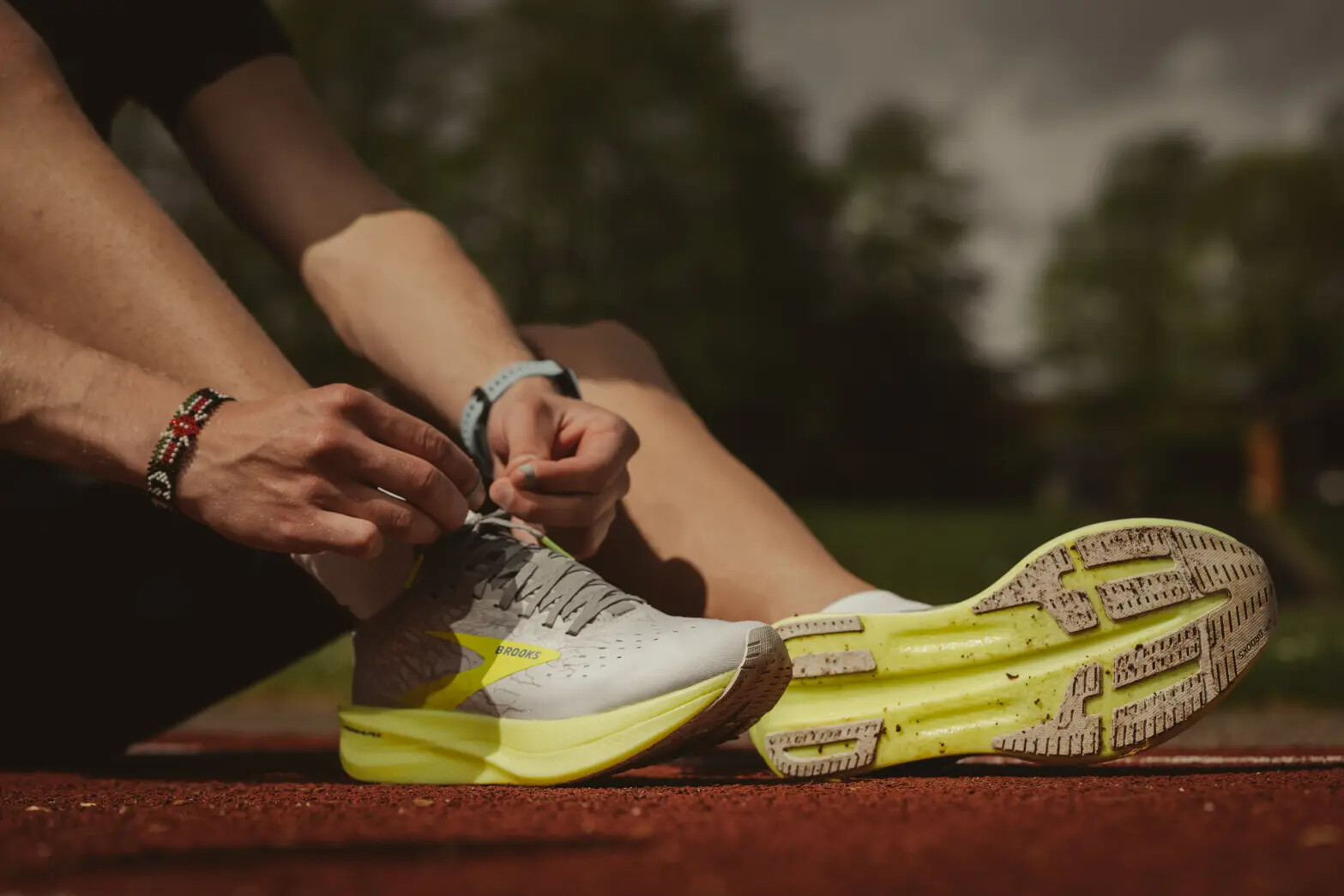
It can take about two months for a new behavior to become automatic. Once it does, it also becomes less taxing. But until then, you want to minimize the potential for injury and frustration. Use these expert-backed tips to get past the annoying retraining period so you can hit the open road with passion.
Ease into a routine.

You are more likely to stick with a running habit if you start with small goals. That may mean holding yourself back a bit, both in terms of pace and distance. “Slow and steady wins the race,” said Karena Wu, a physical therapist and owner of ActiveCare Physical Therapy in New York City. Slow down until you can pass the talk test, which means carrying on a conversation while running.
Try to do two to three short, easy runs per week. You could also follow a couch to 5K training plan designed for beginner runners and those who are returning after a long break. Alternatively, you may use a strategy that incorporates walking breaks into your runs.
Whichever plan you pick, be sure it has elements of strength training, stretching and resting. The point is to stay consistent and remember that you are using this time to recondition the muscles, tendons, ligaments and connective tissues in your legs, Dr. Wu said.
Build in immediate rewards.
You may think you can muscle through the first few weeks or months of running, but research suggests that motivation alone is not always enough. Pairing small, immediate rewards to a task — like watching Netflix while on the treadmill or treating yourself to an Epsom salt bath after a long trail run — can make it easier and more enjoyable to continue doing these activities.
“People repeat behaviors that they enjoy,” said Wendy Wood, a research psychologist at the University of Southern California and the author of “Good Habits, Bad Habits.” “If you hate running to begin with, there’s probably not much you can do to motivate yourself to repeat it.”
Short-term rewards can carry you through the days when your motivation is lagging. And they may even accelerate the formation of your new running habit.
Research shows that you can also get psychological rewards from running with a group of friends, affirmations from a coach or listening to your favorite music. Some studies have shown that people who listen to music are able to run faster, perform better and feel less exhausted.
Start strength training.
Strength training helps prepare your body for running again and can keep you injury free for the long haul. Many physical therapists and running experts even recommend strength training a few weeks before returning to running to build up muscle strength, increase flexibility and improve overall biomechanics.
“I think a lot of people use running to get in shape, but I would really recommend getting in shape to get back to running,” said Irene Davis, an expert on the biomechanics of running at the University of South Florida.
Runners tend to be weak in their feet and ankles, as well as their hips and glutes, Dr. Davis said. To strengthen these areas, try weight lifting, yoga, calisthenics or plyometrics at least two days per week.
Dr. Davis and Dr. Wu recommended exercises that train multiple muscles at the same time, like single and double leg calf raises, lateral band walks (or monster walks), planks, lunges, squats and step-ups.
Stretch.
A well-designed warm-up can also get your blood flowing and prepare your muscles for running. Dr. Wu and Dr. Davis recommended dynamic stretches, in which you move your joints and muscles through full ranges of motion, mimicking the movement you’re about to perform without holding them in place. For runners, they are often the same exercises used in strength training, like lunges and squats, as well as butt kicks and high knees.
Research has offered mixed and often contradicting results regarding the benefits of cooling down after a workout. But many athletes and physical therapists, including Dr. Wu, recommend static stretches, in which you hold a position for a period of time, after a run. She also recommended bringing your knee to your chest, pulling your ankle toward your glutes, leaning against a wall to stretch your calves or going into a deep lunge and moving your hips in a circle. Experiment with stretching and see if it makes you feel more flexible or helps you regain energy for the next run.
Get enough rest.
Just because your body remembers how to do a five-minute mile doesn’t mean your muscles and joints are ready for the toll running can take. While you are rebuilding stamina and strength during runs, you’re also breaking your body down in many ways, like opening microscopic tears in your muscles. Taking at least one day off a week will help avoid injury and let you come back stronger, allowing your body time to recover.
During each run, your body also depletes its stores of glycogen, a type of carbohydrate saved in the muscles and liver. Resting and refueling helps replenish these reserves so that you can use them as energy when you run again.
Remind yourself that you are making progress throughout the whole process. Running is an invigorating way to exercise with the breeze in your hair and the ground at your feet. So dust off those shoes and head out the door.
(04/21/2023) Views: 802 ⚡AMPby Knvul Sheikh
Eilish McColgan withdraws from London Marathon due to knee injury
Eilish McColgan has pulled out of the London Marathon on Sunday because of a knee problem.
Event organisers announced on Thursday evening that McColgan delayed her travel to London to give her the best chance of competing, and would not be attending a scheduled pre-event media conference on Friday morning.
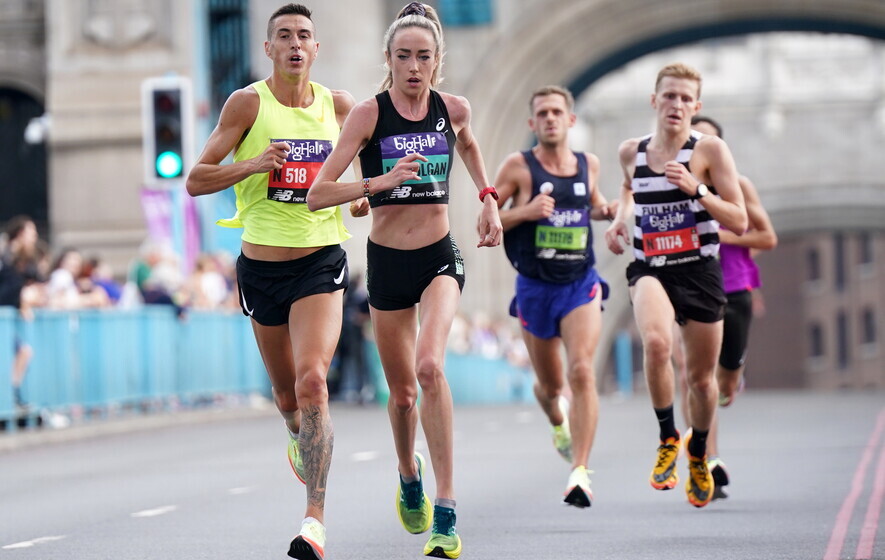
The 32-year-old Scot, who won her first major title on the track at the 2022 Commonwealth Games in Birmingham, had hoped to see how the injury responded, but confirmed she had not been able to shake off the issue in time to run.
“I was sort of hopeful to be honest,” she said. “I have had a bit of knee bursitis back in February, March time and it was something I could run through.
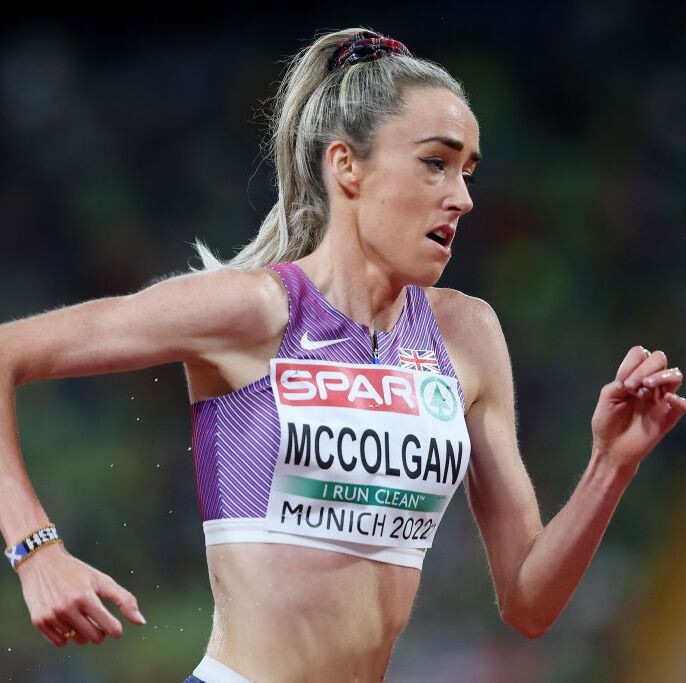
“But I couldn’t run through this. I’ve tried, trust me, but it has just got to the point where it is not going to be feasible to run a marathon this weekend.”
McColgan had planned to run the 2022 London Marathon last October before being forced to withdraw due to a medical issue.
The problem was identified as rebound hypoglycaemia, a common occurrence among endurance athletes which leads to reduced blood sugar levels and not enough glucose in the blood to meet the body’s needs.
McColgan, whose mother Liz won the London Marathon in 1996, said: “There are a few factors that have come together to lie a bad storm. A whole host of things in the last three weeks have built up and this knee thing has been the final crack in the armour.
“I’m disappointed. I know I’m ready to run a good marathon. I’d have loved to have given it a go and see what happens.
“These things happened for a reason. There will be another marathon, they’ll be another London Marathon in my future which hopefully I’ll get the chance to perform well at.
“I’ve shed a lot of tears in the last two days. It feels tougher because I’ve missed two now, for two entirely different reasons.
“All elite athletes go through this, I hope one day I will be on that start line. I know I can run a good marathon and I know one day it will be in London.”
(04/21/2023) Views: 513 ⚡AMPTCS London Marathon
The London Marathon was first run on March 29, 1981 and has been held in the spring of every year since 2010. It is sponsored by Virgin Money and was founded by the former Olympic champion and journalist Chris Brasher and Welsh athlete John Disley. It is organized by Hugh Brasher (son of Chris) as Race Director and Nick Bitel...
more...Geoffrey Kamworor ready to glide on London roads
Two-time New York City Marathon winner Geoffrey Kamworor declares he is in his best shape ever and promises fireworks in England.
Kamworor, fondly referred to as the man of all surfaces, was hit by a motorcycle while training in Kaptagat on June 27, 2020, fracturing a tibia. He underwent surgery to mend the injury.
Things suddenly changed for Kamworor as his career in athletics turned upside down.
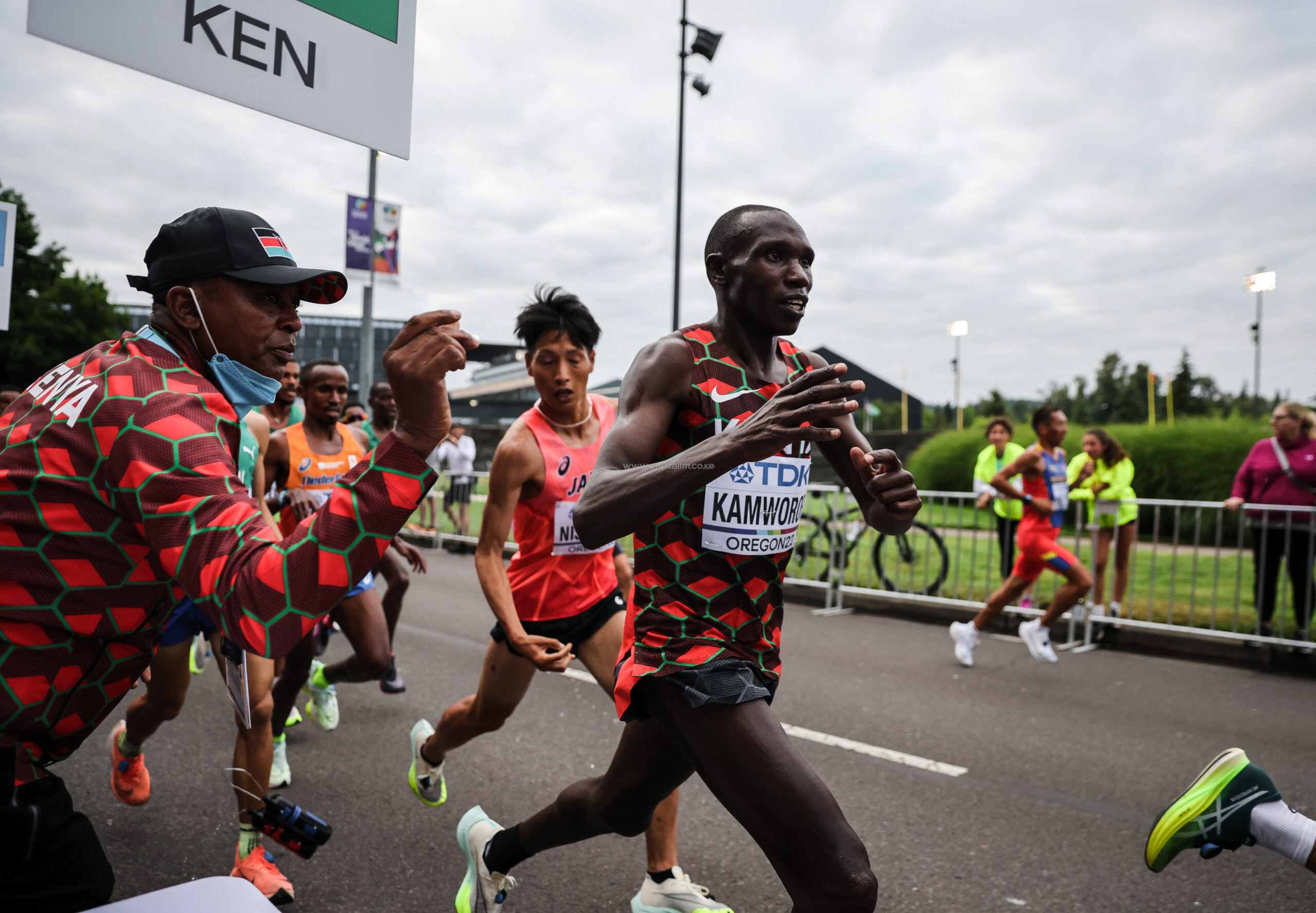
He was then gunning for his fourth consecutive World Athletics Half Marathon Championships title, but injured he failed to defend the crown on October 17, the same year in Gdynia, Poland.
Kamworor, who had the previous year recaptured the New York City Marathon title he had won in 2019, would embark on a frustrating long period of recovery. He eventually bounced back after 18 months to claim silver at the Istanbul Half Marathon on April 4, 2021.
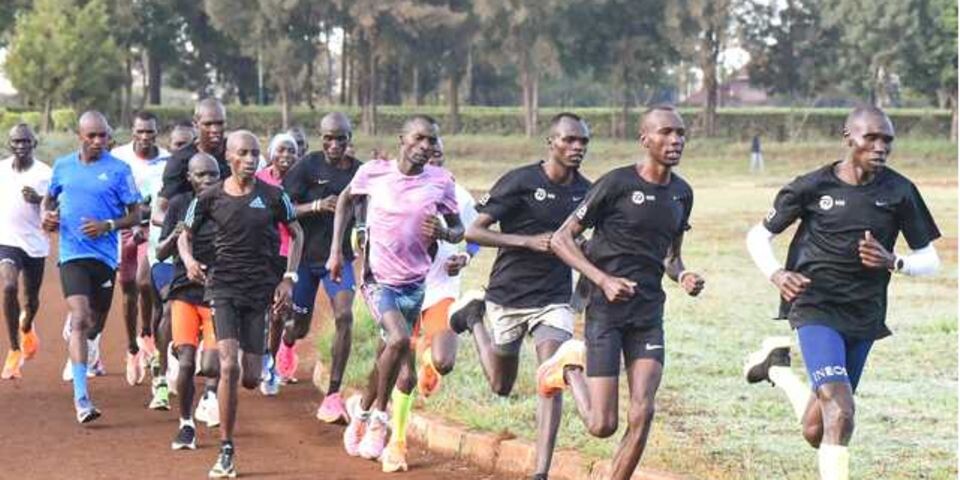
Amidst a series of injuries Kamworor, the 2014 world 10,000m silver medalist, was still good enough to run the fastest time on Kenyan soil as he won the Kenyan Olympic Games trials 10,000m in 27 minutes and 01.06 seconds at the Moi International Sports Center, Kasarani.
The man of all surfaces’ dream of returning for the Tokyo Summer Olympic Games went up in smoke with an ankle injury.
The fighter he is, he returned for the Valencia Marathon on December 5, 2021 where he finished fourth in a personal best time of two hours, five minutes and 23 seconds.
He opened the 2022 season with an 18th place finish in the Boston Marathon on April 18 as a recurring ankle injury put paid to his title ambitions.
Kamworor still earned a place in the Kenya marathon team for the World Athletics Championships held on July 17 in Oregon, United States where he battled to a credible fifth place.
“For sure the last two years have been frustrating for me since the accident, injury after another crept in,” said Kamworor, as h3 announced that he was back into his best shape and ready for his debut in the London Marathon on Sunday.
“I am now running and conducting my training without any discomfort. I feel like I am back to the shape I was in 2017 to 2019 before all these misfortunes happened,” said Kamworor, the 2015 and 2017 world cross country champion.
He went through his last speed work on Tuesday in Eldoret ahead of his departure to London yesterday.
Kamworor said that it’s a dream come true for him to finally compete in the London Marathon.
“I want to thank the organizers for giving me this opportunity. I can promise a beautiful race in the British capital,” said Kamworor. He predicted a tough race owing to the quality entries.
“It will depend on how you wake up but I am ready for any weather conditions,” said Kamworor.
He said he is ready for any pace and whatever tactics that will be thrown into the race by his opponents
Among the top cream of athletes Kamwowor will battle on the streets of London are fellow countrymen Amos Kipruto, who is the defending champion, and Kelvin Kiptum, 23, who produced the fastest marathon debut in history when he claimed victory in Valencia in 2:01:53 in December. This is, in fact, made him the third fastest man in history.
The Kenyans are up against home athlete Mo Farah and Ethiopian legendary distance runner Kenenisa Bekele among others.
(04/21/2023) Views: 481 ⚡AMPby Ayumba Ayodi
TCS London Marathon
The London Marathon was first run on March 29, 1981 and has been held in the spring of every year since 2010. It is sponsored by Virgin Money and was founded by the former Olympic champion and journalist Chris Brasher and Welsh athlete John Disley. It is organized by Hugh Brasher (son of Chris) as Race Director and Nick Bitel...
more...Tiruye Mesfin targets Hamburg Marathon course record and Daniel do Nascimento intends to bounce back this Sunday
Very fast times and thrilling races are expected at the Haspa Marathon Hamburg on Sunday. Just a year after Yalemzerf Yehualaw set a sensational course record of 2:17:23, which at that time was an unofficial world debut record as well, a fellow-Ethiopian will be at the start line, hoping to smash the mark: 20 year-old Tiruye Mesfin announced at the press conference in Hamburg that she targets a world-class time of sub 2:17.
Brazil’s Daniel do Nascimento is among the men’s favorites. The South American record holder wants to bounce back after disaster struck in New York in November. After taking the European marathon gold in Munich in sensational style last summer Hamburg will be the first race at the classic distance for Germany’s Richard Ringer. Around 12,000 runners have registered for the marathon event while the total number including shorter races is over 30,000.
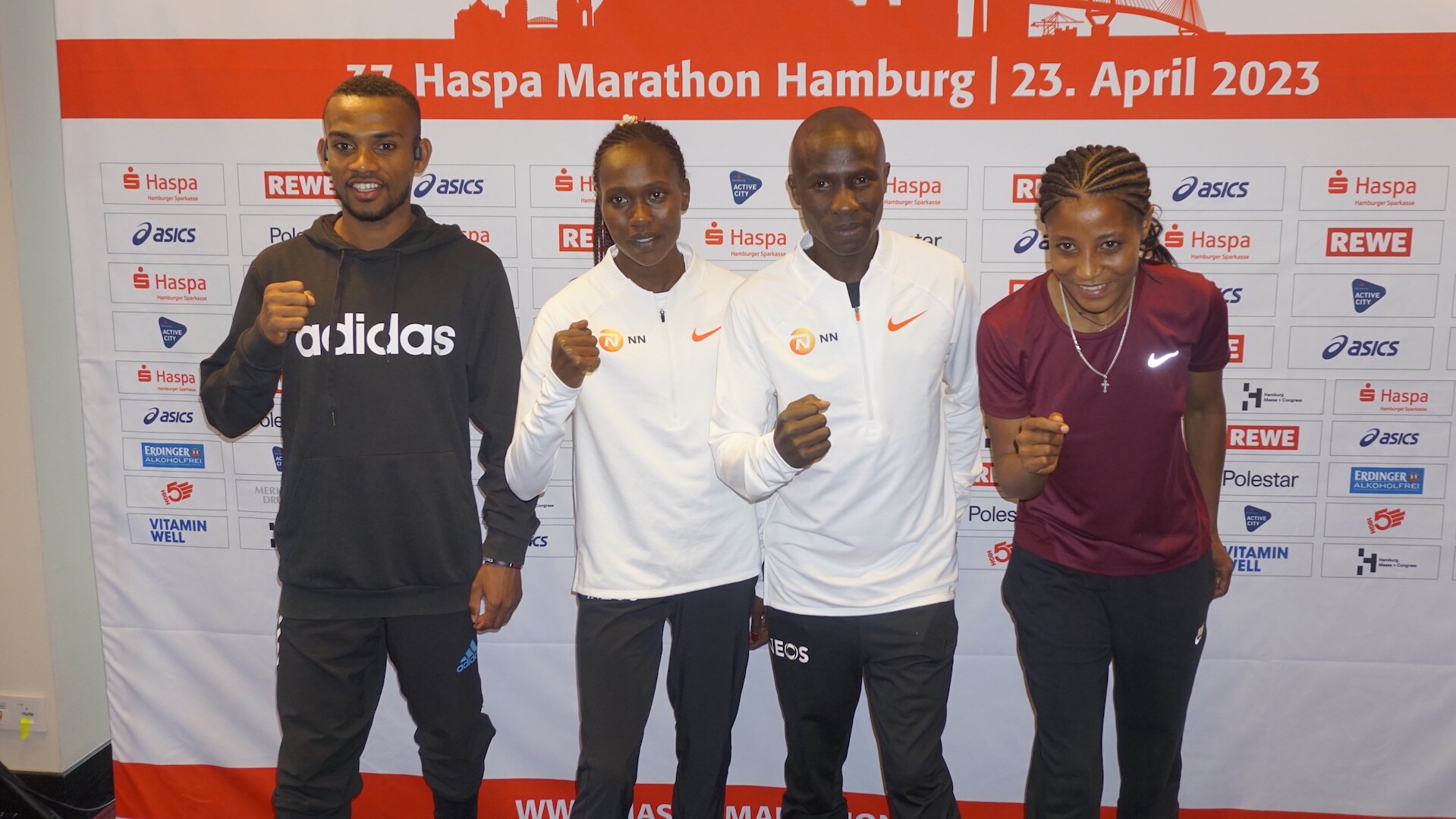
A live stream of the race will be available worldwide at www.haspa-marathon-hamburg.deon Sunday. The race starts at 9.30am local time and the coverage will begin at 8.45am. While the commentary will be in German the Twitter account of the Haspa Marathon Hamburg will carry English elite race updates.
Tiruye Mesfin could indeed be in a position to break the course record on Sunday if weather conditions will be suitable. At the moment the forecast looks good, however there might be some wind. The Ethiopian youngster ran a superb 2:18:47 debut at the Valencia Marathon in December and believes she can run considerably faster in her second marathon on Sunday.
“I am in fine form and my preparations went very well. I will try to break the course record, but at least I want to run a personal best,“ said Tiruye Mesfin, who hopes to be in the mix for Olympic qualification. „My plan is to run the first half in 68:00.“ While this would lead towards a world-class time of 2:16 she knows that it will probably not be enough to secure an Olympic spot. “I think I would have to go even faster, but there is some time left and I could do it in a later race.“
Qualifying for the 2024 Paris games will probably be easier for Stella Chesang since the competition for places in Uganda is not as tough as in Ethiopia. Running her debut marathon in Hamburg she is ready for an adventurous pace.
“I want to go with the first and see how it goes for me and what is possible. I hope to achieve Olympic qualification,“ said Stella Chesang, who chose Hamburg for her first marathon “because of the fast course“. Her half marathon PB of 68:11 indicates that she could break the Ugandan record of 2:23:13. And her tenth place at the World Cross Country Championships in Bathurst, Australia, in February shows that she is probably in very good form.
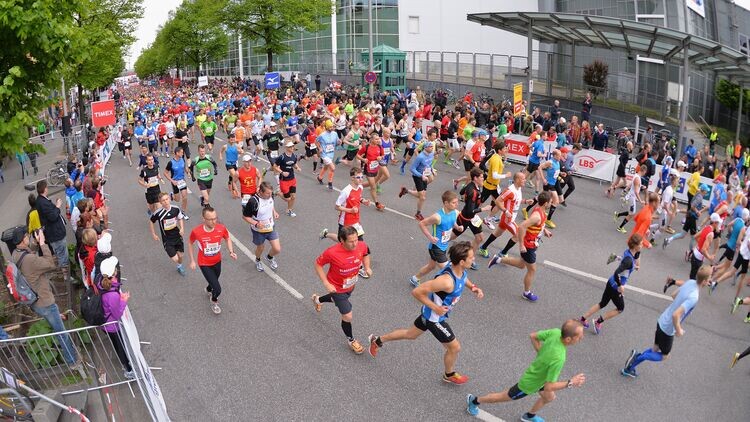
Kenya’s Bernard Koech is the fastest runner in the field with a PB of 2:04:09. He did not make it in time for Thursday’s press conference because of a strike at Hamburg airport. South American record holder Daniel do Nascimento arrived a day earlier and was present when the conference fittingly began in room Sao Paulo at the Radisson Hotel.
A year ago the Brazilian, who recently trained in Uganda for a longer period, stunned with a time of 2:04:51 in Seoul. However the 24 year-old then collapsed with ten kilometers to go at the New York Marathon in November. Daniel do Nascimento ran world record pace in the first part of that race and was ahead by well over two minutes at half way. “I made a mistake in New York, it was not a good strategy. After 30k I felt sick and got stomach problems. For me marathon is a bit like a marriage - there are difficult times and better times,“ he said. “I will run more intelligently on Sunday and will surely finish this time.“
If he should succeed in breaking his personal best he would then most probably break the course record as well. Last year Cybrian Kotut improved the mark to 2:04:47, which is just four seconds quicker than do Nascimento’s South American record. Unfortunately the Kenyan is among a number of withdrawals the organisers have to cope with. Ethiopians Mule Wasihun and Muktar Edris, who wanted to run his debut in Hamburg, had to cancel their starts due to an injury as well.
After his sensational gold medal performance at the European Championships in Munich last summer Richard Ringer returns to the classic distance for the first time. Olympic qualification is his next major goal. “Preparing for Hamburg everything went really well, even better than expected,“ said Richard Ringer, who will choose a more conservative approach on Sunday.
"I don’t want to take too many risk now as I really want to make sure that I achieve the Olympic qualifying time and go under 2:08.“ Richard Ringer’s PB stands at 2:08:49. “At the moment I hope that a time between 2.07:30 and 2:08:00will be enough to qualify for Paris.“ Another German runner who will go for the Olympic standard in Hamburg is local runner Haftom Welday. The former Eritrean surprised with a 2:09:06 in Berlin last year and now hopes to run well under the Olympic qualifying time of 2:08:10. Since he will choose a more aggressive approach than Ringer there could be an interesting German battle in Hamburg as well.
Elite Runners with Personal Bests
MEN:
Bernard Koech KEN 2:04:09
Tsegaye Kebede ETH 2:04:38
Daniel do Nascimento BRA 2:04:51
Martin Kosgei KEN 2:06:41
Masresha Bere ETH 2:06:44
John Langat KEN 2:07:11
Henok Tesfay ERI 2:07:12
Joshua Kemboi KEN 2:08:09
Daniel Mateo ESP 2:08:22
Richard Ringer GER 2:08:49
Martin Musau UGA 2:09:04
Haftom Welday GER 2:09:06
Derlys Ayala PAR 2:10:11
Jeisson Suarez COL 2:10:51
Ernesto Zamora URU 2:11:26
Andy Buchanan AUS 2:12:23
Arttu Vattulainen FIN 2:13:29
Joshua Belet KEN Debut
Moses Koech KEN Debut
Demeke Tesfaye ETH Debut
Simon Debognies BEL Debut
WOMEN:
Tiruye Mesfin ETH 2:18:47
Sintayehu Tilahun ETH 2:22:19
Giovanna Epis ITA 2:23:54
Dorcas Tuitoek KEN 2:24:54
Marion Kibor KEN 2:25:15
Kumeshi Sichala ETH 2:26:01
Tsigie Haileslase ETH 2:27:08
Paolo Bonilla ECU 2:27:38
Obse Abdeta ETH 2:27:47
Rosa Chacha ECU 2:28:17
Zenebu Bihonzg ETH 2:28:59
Katja Goldring USA 2:29:01
Tereza Hrochova CZE 2:29:06
Molly Grabill USA 2:29:17
Loreta Kancyte LTU 2:30:48
Fabienne Königstein GER 2:32:35
Tabea Themann GER 2:33:51
Stella Chesang UGA Debut
Mekdes Woldu FRA Debut
Mary Granja ECU Debut
Ana Ferreira POR Debut
(04/21/2023) Views: 544 ⚡AMPHaspa Marathon Hamburg
The HASPA MARATHON HAMBURG is Germany’s biggest spring marathon and since 1986 the first one to paint the blue line on the roads. Hamburcourse record is fast (2:05:30), the metropolitan city (1.8 million residents) lets the euphoric atmosphere spill over and carry you to the finish. Make this experience first hand and follow the Blue Line....
more...Three days after her 75th birthday, Jeannie Rice runs 3:33 at Boston Marathon
Three days after her 75th birthday, Jeannie Rice of Mentor, Ohio, added the women’s 75+ age group world marathon record to her impressive resume, winning her age category at the 2023 Boston Marathon by 20 minutes and crossing the line in 3:33:15.
Rice not only beat the previous record of 3:38:56, held by Norway’s Vera Nystad. She also beat Nystad in the race, who finished second to Rice in 3:53:52. Nystad is three years older than Rice, and originally set the record at age 77, when she ran 3:38 at the 2022 Berlin Marathon.

This masters record isn’t Rice’s first over the marathon distance. She also holds the women’s 70+ record of 3:27:50 from the 2018 Chicago Marathon. Her time of 3:38 is remarkable, and it shows that age really is just a number.
Rice averaged a mind-blowing five minutes per kilometre pace for 42.2 kilometres at age 75. That’s eight and a half consecutive 25-minute 5 Ks.

Rice considers herself a snowbird, as she lives and trains in her hometown of Mentor, Ohio for six months of the year before heading to Naples, Fla., for six months every winter.
This is Rice’s second marathon in the last six weeks. In March, she won the women’s 70+ age category at the 2023 Tokyo Marathon in 3:31:22 to receive her six-star finisher medal–completing all six Abbott World Marathon Majors.
(04/21/2023) Views: 611 ⚡AMPby Marley Dickinson
Boston Marathon
Among the nation’s oldest athletic clubs, the B.A.A. was established in 1887, and, in 1896, more than half of the U.S. Olympic Team at the first modern games was composed of B.A.A. club members. The Olympic Games provided the inspiration for the first Boston Marathon, which culminated the B.A.A. Games on April 19, 1897. John J. McDermott emerged from a...
more...How to conquer your very first 10K
HOW TO PREPARE FOR A 10K RUN FOR THE FIRST TIME
10k runs are super popular because the distance is manageable for most people. Many people choose 10k as their first running event distance. Here are some tips to prepare for the first attempt at a 10k run:

1. CONSISTENCY IS KEY
Ideally, pick a 10k run at least eight weeks away. This gives plenty of time to get in enough running to train the body (especially the legs) to tolerate running for an extended period of time.

Beginner runners may be running (and walking) for over an hour. Working up to this duration/distance requires running at least three times per week. Speed and duration of the runs are less important than just getting out and running or walking a couple of times a week since polarized training can improve performance for recreational runners. Don’t add more than 15 percent more total distance per week.
2. BUILD UP LONG RUN DISTANCE
Work up to at least 75 percent of the distance (7.5 km) for the long runs. Try to get in a long run once a week or at least every other week. The long runs will help develop the muscular endurance to tolerate running for 10k. They will also help build confidence that the distance is doable.
An easy way to add distance to the long run is to add 500m – 750m to the longest runs usually done. It may not seem like much, but it will add up!
3. DON’T WORRY ABOUT SPEED
One does not burn considerably more calories by running faster. Speedwork like HIIT and other forms of interval training can add too much intensity for new runners to tolerate. If the goal is just to finish the first 10k run, don’t worry about doing hard runs (unless you want to because they’re “fun”). Instead, just make sure to consistently train and avoid injury.
4. TAKE RECOVERY SERIOUSLY TO AVOID INJURY
Beginner runners might be tempted to run through the soreness and pain that comes from training consistently for their first 10k. Knowing when to ignore the pain and push through comes with athletic experience—beginner runners don’t have this luxury.
Novice runners are at a higher risk for injury than others, as noted in The American Journal of Sports Medicine. Here are some indicators that one should stop or drastically reduce training:
Sharp pains that come on suddenly mean stop running immediately or risk getting injured.
Prolonged soreness and swelling are likely from an overuse injury. Get in some RICE (rest, ice, compression, elevation) to reduce swelling and speed up recovery. Don’t keep running on the injury, or it could get much worse.
Sickness symptoms below the neck are not worth continuing to train.
5. FOLLOW A 10K TRAINING PLAN
adidas Running Premium Members can create a training plan suited to their ability level, goal finishing time and race distance. The training plan guides training runs so new runners never run too fast and stay motivated to finish their run strong! Download adidas Running to check out other unique features like Live Cheering!
HOW TO PREPARE FOR A 10K RUN (INTERMEDIATE-ADVANCED)
Intermediate or advanced runners are looking to improve their 10k time. They may also use 10k runs to build speed for a longer event like a half marathon or marathon. 10k is a great distance to build speed and endurance without adding tons of fatigue. It requires good endurance, a high threshold and maybe even a good sprint at the end. In other words, it’s a great distance to develop into a well-rounded runner. Follow these tips to try for a new 10k PR:
1. MASTER PACE CHANGES
Running a faster 10k requires training to run a faster 10k. Plan to include HIIT sessions and other types of interval workouts in the leadup to the race. Long runs with several kilometers run at or slightly above race pace are key workouts for race-specific intensity. Tempo and threshold workouts should be a staple in a quality, intermediate to advanced running plan.
2. STRENGTH TRAINING
Advanced runners and intermediate runners looking to jump to the next level should likely be doing strength training. As found in Medicine and Science in Sports and Exercise, specific strength training can improve running performance. This doesn’t mean going to the gym to bulk up. Instead, bodyweight and functional training are sufficient. Check out adidas Training for a running-specific strength training program alongside a running training plan.
3. RECOVER HARD TO TRAIN HARDER
Intermediate runners might be tempted to skimp on recovery to get in another hard training session. This is what separates intermediate runners from unlocking advanced running performance. Elite runners know when it’s time to take it easy and put their feet up on the couch for an afternoon nap.
4. GET A GOOD TRAINING PLAN
Following a training plan tailored to specific goals and abilities is vital for intermediate to advanced runners. adidas Running even has customizable plans to help achieve a 40-minute 10k. Become a Premium Member and start a plan to set a new PR in just a few weeks!
5. WARM UP
Make sure to warm up properly on race day. Learn how warm-ups can optimize performance and find the perfect warm-up routine.
Consult a medical professional when in doubt.
(04/20/2023) Views: 630 ⚡AMPby Morgan Cole
Mo Farah expects his final London Marathon to be emotional
Mo Farah expects there to be tears on Sunday when he runs the marathon in the city he calls home for one final time.
The four-time Olympic gold medallist turned 40 last month and has confirmed this weekend’s London Marathon will be his last race over that distance. He then plans to run in just two more events before he retires at the end of this year.
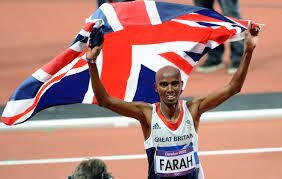
This will be Farah’s fourth marathon in the capital, after finishing eighth in 2014, third in 2018 – when he broke the British record - and fifth in 2019.
And he thinks it will be an emotional farewell in the city he was smuggled to from Somalia aged eight – and where he enjoyed his greatest glory by winning golds in the 5,000m and 10,000m at London 2012.
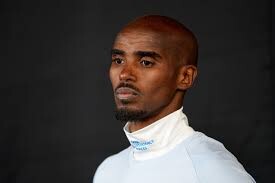
‘This is it. It will be my last marathon,’ said Farah in London on Thursday. ‘When you know it’s the end of the road, you always get emotional. I think it will get to me. Maybe after the race there will be tears.
London is my home. This is where my journey started as a young boy who took part in the mini marathon, won that, and watched the senior race thinking, “One day I’m going to run the London Marathon”.
‘Also the memory of 2012 and that Super Saturday. That still motivates me to keep going. All the people in the UK have been a big part of my career and I owe them.’
Farah, who has been training in Ethiopia and finished seventh in a 10km race in Gabon earlier this month, has not run a full marathon in three years and pulled out of last year’s race with a hip injury.
‘I don’t know if my body can do it but I have to finish,’ he said. ‘It has definitely been quite emotional these last couple of years. As an athlete, you always want to go out there and do the best you can, but my body hasn’t allowed me to do what I needed to do in training.
‘That’s been the hardest thing. For many years, I tended to take it for granted. As you get older, that totally changes because you can’t do what you did. That is the most frustrating thing. Age does catch up with you and your body.’
Farah’s legacy has, of course, been tarnished by his relationship with his former coach Alberto Salazar, who was banned for four years in 2019 for doping violations. The American has since been banned for life for sexual and emotional misconduct.
Asked if he had any regrets in his career, Farah insisted: ‘Not at all. I wouldn't have done anything different. I just took that journey and kept going and kept grafting. As an athlete you go out there and deliver and win races. That’s what I’ve done.’
(04/20/2023) Views: 493 ⚡AMPby David Coverdale
TCS London Marathon
The London Marathon was first run on March 29, 1981 and has been held in the spring of every year since 2010. It is sponsored by Virgin Money and was founded by the former Olympic champion and journalist Chris Brasher and Welsh athlete John Disley. It is organized by Hugh Brasher (son of Chris) as Race Director and Nick Bitel...
more...Sifan Hassan is set to make her marathon debut at London
Sifan Hassan’s 2023 London Marathon challenge: “I’m going to finish the distance or the distance is going to finish me” the Netherlands’ Sifan Hassan said in February when announcing she would race in 23 April’s London Marathon.
While the words were delivered with a customary laugh, there’s a real element of the unknown about Hassan’s jump from the 10,000m on track to a distance of over four times that where many runners' dreams have been scuppered.
Heck, even the marathon race itself is based on the legend of an ancient Greek messenger who drops stone cold dead after running it.
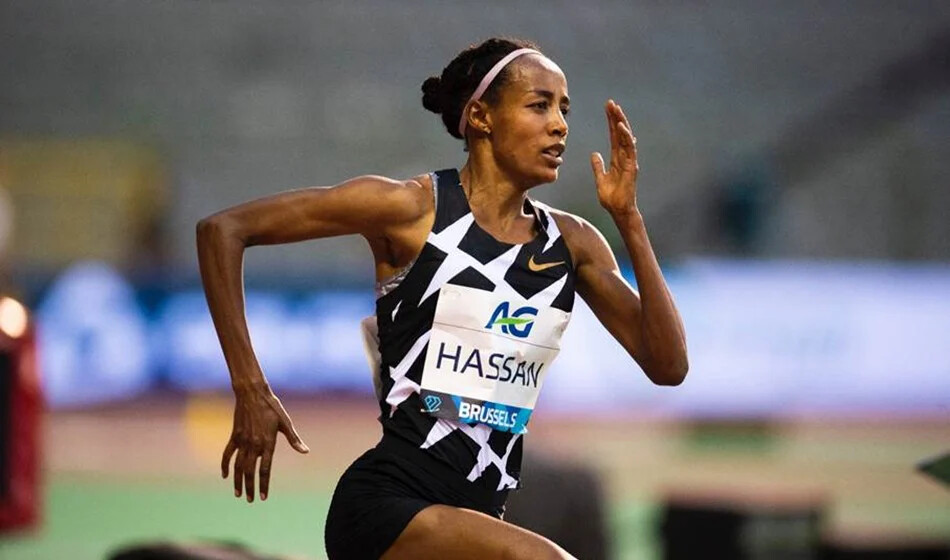
But if there’s one thing Hassan is known for above anything else, it’s her love of a challenge.
“Many people say I’m crazy,” she said of her previous big challenge of racing in three distances at the Tokyo 2020 Olympics that took place in 2021. “Believe me, I think I’m crazy too.”
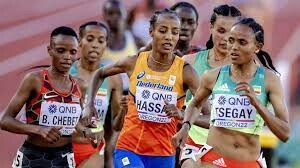
Sifan Hassan: From refugee to the elite athletics star with energy to burn
In many ways, Hassan’s decision to run the London Marathon is reminiscent of her first big distance race in Eindhoven in 2011.
Just three years after arriving in the Netherlands as a refugee from Ethiopia, she told her coach, Ton van Hoesel, that she wanted to run a half marathon - even though she hadn’t trained for the race.
“I told her OK but do not start too fanatically because you might get injured. Well, she won the race!” recalled Van Hoesel in an interview with thenationalnews.com.
With the London Marathon, Hassan will once again be stepping into the unknown. However, this is an athlete who has faced and overcome fierce challenges both in running and in life.
While Hassan doesn’t talk about the reasons she left Ethiopia as a teenager, her experience after arriving in the Netherlands, which included being housed in a centre for minors for eight months in Zuidlaren where she “cried every day”, was one of the hardest challenges of her life.
Soon after, her introduction to the world of athletics gave her a new focus. After borrowing used spikes and kits from her local club, she began a journey that would take her to even more challenges - one of which is among the most breathtaking in Olympic history.
The London Marathon 2023: Hassan steps into the unknown
Hassan’s attitude to life so often mirrors her success in running - and she’ll need to draw upon her own mantras more than ever when she takes on her first-ever marathon in London.
“I tell people, when life is hard you will see yourself like you never imagined,” she said after her history-making showing in Tokyo. “Never give up.”
There is a playful curiosity about Hassan, who seems to peek over at new challenges and ask herself the question, “why not?” when so many others would get stuck on the “why”.
“I just want to see what I can do in the marathon,” Hassan said when announcing she would race in London, as if ticking off another item on a whimsical bucket list.
While the London Marathon doesn’t mark a permanent transition to the longer distance for the 29-year-old, who has said she plans to return to the track in time for Paris 2024, it does open up yet more possibilities for someone who is once again pushing the boundaries of track & field.
This is an athlete whose satisfaction comes from achieving the extraordinary. Even when some, including herself, think that borders on the preposterous.
As she herself said in Tokyo: “The last two weeks, sometimes I woke up from a nightmare and I asked: ‘Why do I have to make myself so stressed? But something inside me said to keep on going. I think I was kind of crazy, but now I am really happy."
(04/20/2023) Views: 505 ⚡AMPby Sean McAlister
TCS London Marathon
The London Marathon was first run on March 29, 1981 and has been held in the spring of every year since 2010. It is sponsored by Virgin Money and was founded by the former Olympic champion and journalist Chris Brasher and Welsh athlete John Disley. It is organized by Hugh Brasher (son of Chris) as Race Director and Nick Bitel...
more...UTMB World Series introduces new pregnancy policy
Organizers of the UTMB World Series—billed as the world’s ultimate trail-running circuit—say they have committed to supporting mothers and their partners by introducing a new pregnancy policy that will apply to UTMB World Series events in the 2023 season.
The policy (which includes deferral and priority entry guidelines for athletes who are pregnant, athletes with a partner who is pregnant and athletes who are adopting or birthing via surrogacy) encourages runners to return to the trails in a safe way and within a timeframe that is considerate of individual circumstances following birth.
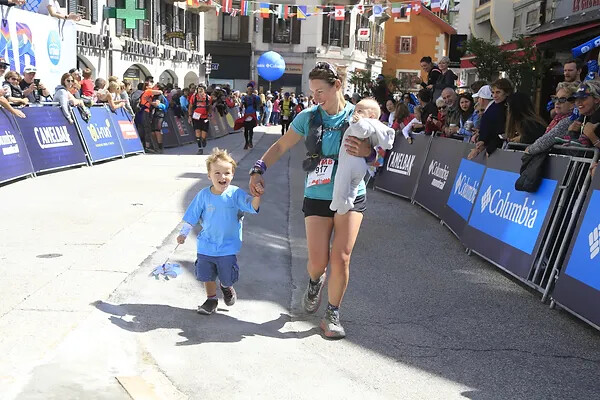
For events with an entry lottery, including UTMB Mont-Blanc, Lavaredo Ultra Trail by UTMB and Eiger Ultra Trail by UTMB, the policy states women will be given a full refund and priority entry to be used within five years for races in the 50K, 100K and 100M categories, and within two years for 20K races.For all other events, the policy allows for women who become pregnant after registration to defer their entry for up to two years for the same race, or receive a full refund.
Partners of pregnant women as well as parents who are adopting or birthing via surrogacy will have the option to defer their entry for up to two years or receive a full refund.
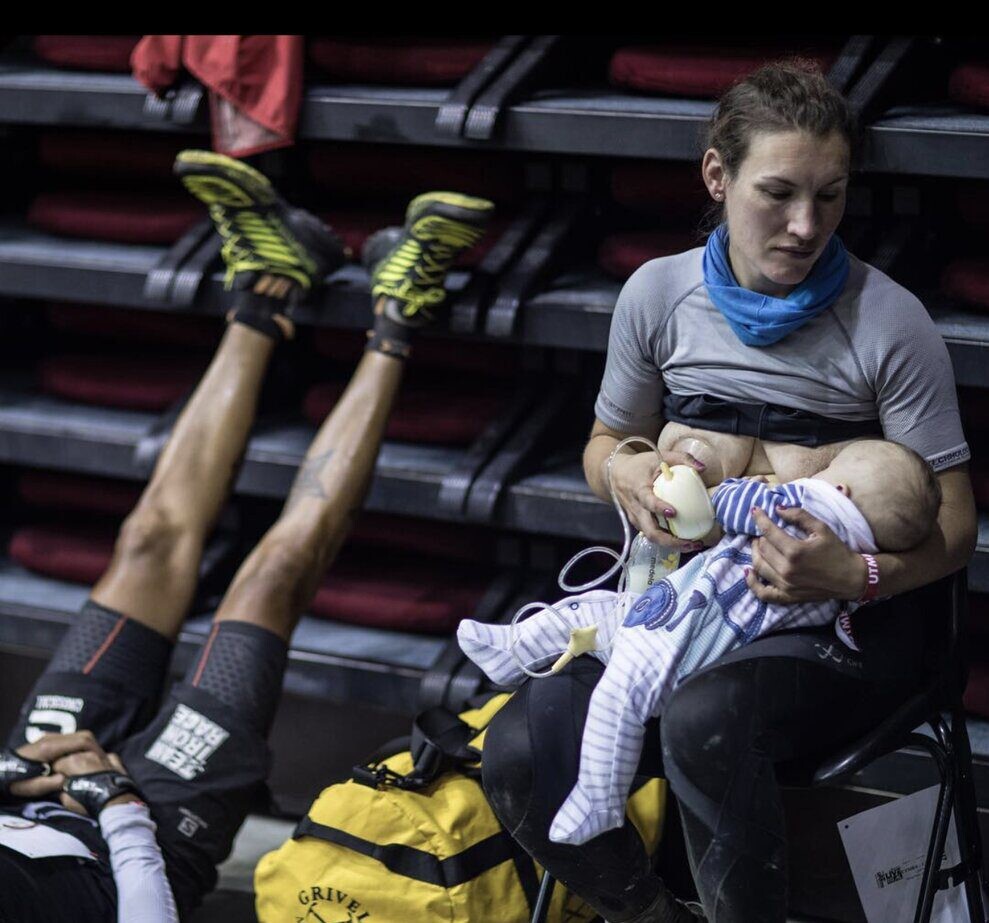
Organizers say the policy was created following a lengthy consultation process, which included gathering expertise from sports and medical professionals, the Pro Trail Runners Association, and athletes such as Sophie Power, who made headlines in 2018 when a photo of her breastfeeding midway through UTMB went viral.
“I’m delighted that UTMB World Series is launching a world-leading pregnancy deferral policy that supports all women to return to racing when they are ready,” said Power, founder of SheRACES. “At SheRACES we look forward to continuing to work with UTMB World Series going forward, sharing our insights to ensure more women from all backgrounds participate in these iconic events.”
UTMB World Series organizers say the new policy comes as part of an effort to encourage more women into the sport and to build on UTMB Group’s commitment to equal opportunities. In line with the actions put in place in previous years, in 2023, male and female elite athletes will be equally represented on the start line of all three UTMB World Series Finals races at the sports pinnacle event UTMB Mont-Blanc, thanks to the new sports system, which sees elite athletes qualify through a series of events throughout the year.
UTMB World Series adds it also remains committed to equal media coverage and representation on communication platforms including UTMB Live, as well as equal prize money for male and female athletes.
UTMB is one of several prominent races—including Western States, the London Marathon and the Calgary Marathon—to have recently introduced policies aimed at supporting mothers and pregnant athletes.
(04/20/2023) Views: 549 ⚡AMPby Paul Baswick
North Face Ultra Trail du Tour du Mont-Blanc
Mountain race, with numerous passages in high altitude (>2500m), in difficult weather conditions (night, wind, cold, rain or snow), that needs a very good training, adapted equipment and a real capacity of personal autonomy. It is 6:00pm and we are more or less 2300 people sharing the same dream carefully prepared over many months. Despite the incredible difficulty, we feel...
more...World marathon silver medalist Judith Korir motivated for London race
World marathon silver medalist Judith Korir believes she has what takes to secure a podium place in the 43rd London Marathon in the United Kingdom on Sunday.
But it will be a tall order for her as she faces a formidable field that has her compatriots, reigning Olympics marathon champion Peres Jepchirchir and Olympics marathon silver medallist Brigid Kosgei, who is also the world marathon record holder.
The runners will be targeting the course’s best time, which is a women’s only world record time set by Kenya’s Mary Keitany in 2017.
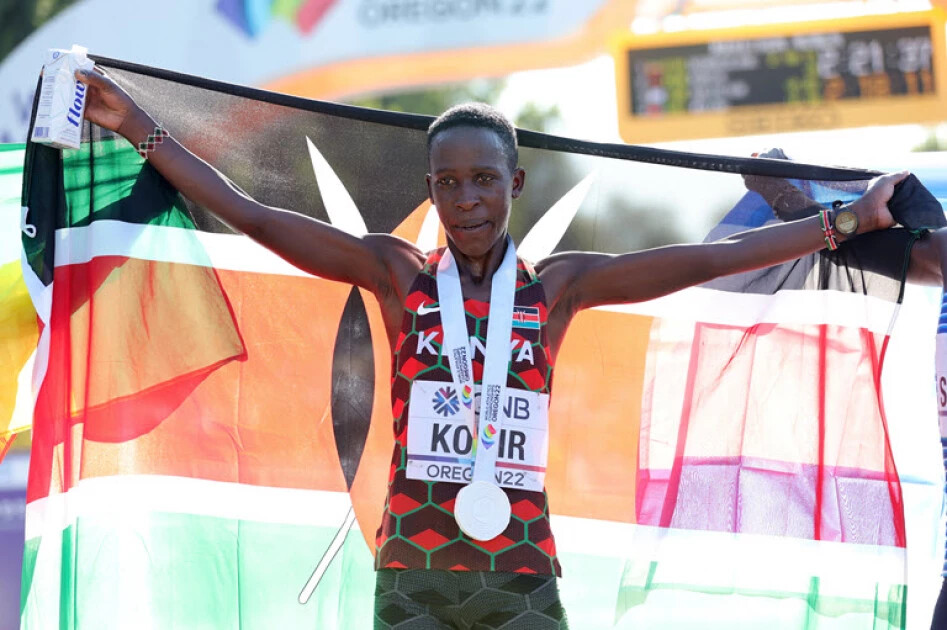
Last year, Korir who trains under the Italy-based Rosa Associati management, was initially entered in the London Marathon as a pacesetter but the last minute withdrawal of Brigid Kosgei saw her registered as a competitor.
She went on to finish fourth in a time of 2:18:43. This time she has been training in the full knowledge she is in the list of the elite women competitors.
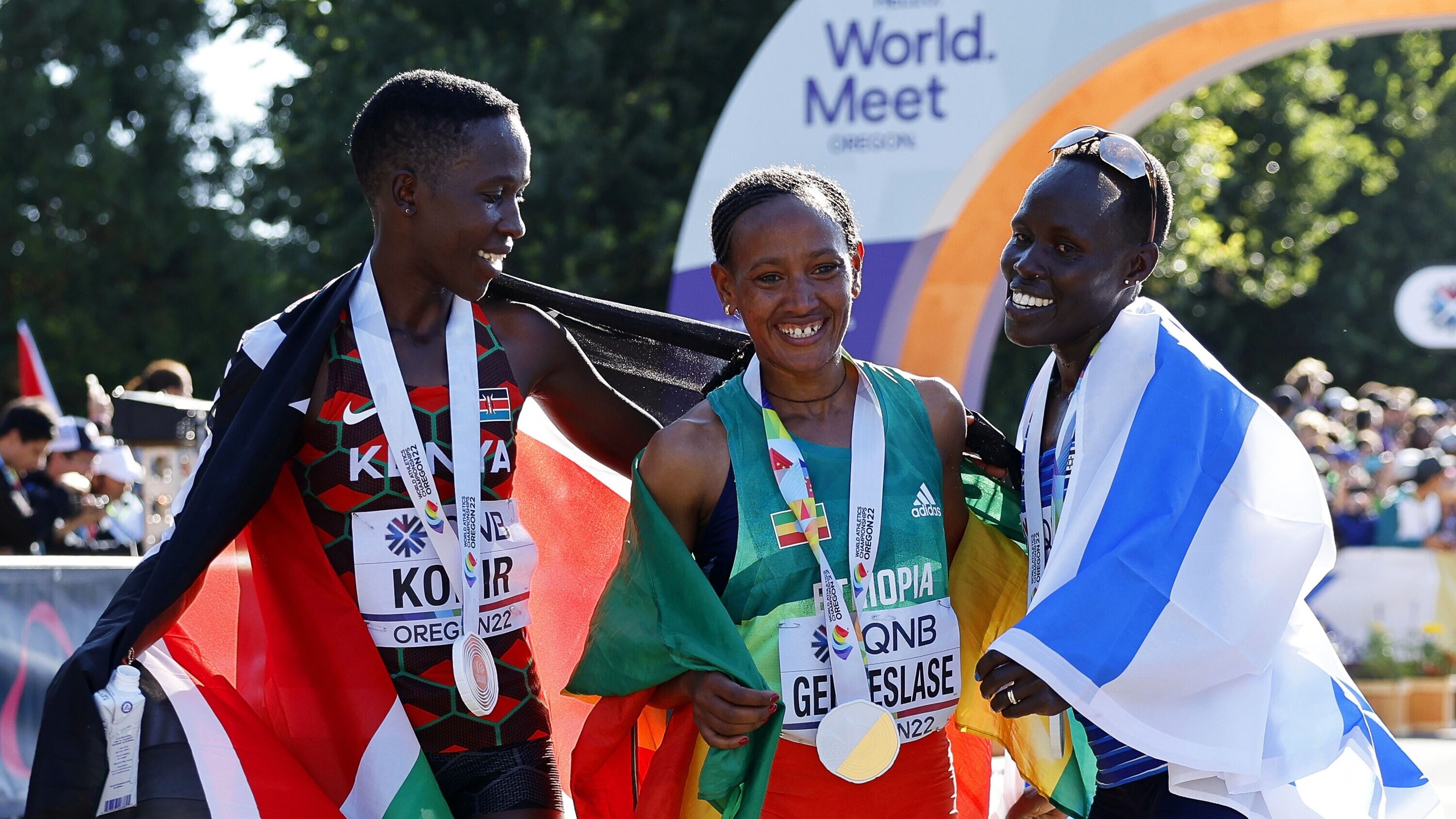
“The line-up is tough but I believe in my training. I can’t compare it with last year where I prepared for one month,” Kosgei said when Nation Sport caught up with her at the Ndura Sports Complex in Kitale, last week as she put the finishing touches to her training.
“Competing with some of the best athletes in the marathon like Jepchirchir and Kosgei motivates me to work extra hard,” she said.
“London Marathon line-up is tough and my target is just to run well because we have some of the best athletes in the world participating,” added Korir, who is the 2022 Paris Marathon champion.
Nation Media Group’s NTV will broadcast the race live. There will be a watch party in Eldoret, at the Uasin Gishu County big screen along Uganda Road, starting at 8am on race day.
(04/20/2023) Views: 461 ⚡AMPby Bernard Rotich
TCS London Marathon
The London Marathon was first run on March 29, 1981 and has been held in the spring of every year since 2010. It is sponsored by Virgin Money and was founded by the former Olympic champion and journalist Chris Brasher and Welsh athlete John Disley. It is organized by Hugh Brasher (son of Chris) as Race Director and Nick Bitel...
more...Eliud Kipchoge shed some light on what happened in his Boston Marathon debut
More than a day after he finished sixth in his first Boston Marathon, Eliud Kipchoge sat down to answer a few questions.
Kipchoge, the 38-year-old marathon world record holder, had only lost two of his 17 career marathons prior to Monday. So it was surprising to see him struggle to answer the acceleration of Gabriel Geay during Mile 18 of the race. He then fell to the back of the pack and was subsequently dropped by the race leaders by Mile 21.
Kipchoge acknowledged that he had an issue with his upper left leg that began during Mile 18.
“That’s where the problem is,” Kipchoge told reporters on Wednesday. “I tried to do what was necessary, but it was not working.”
“I’m not a doctor,” he later joked when asked for more specifics.
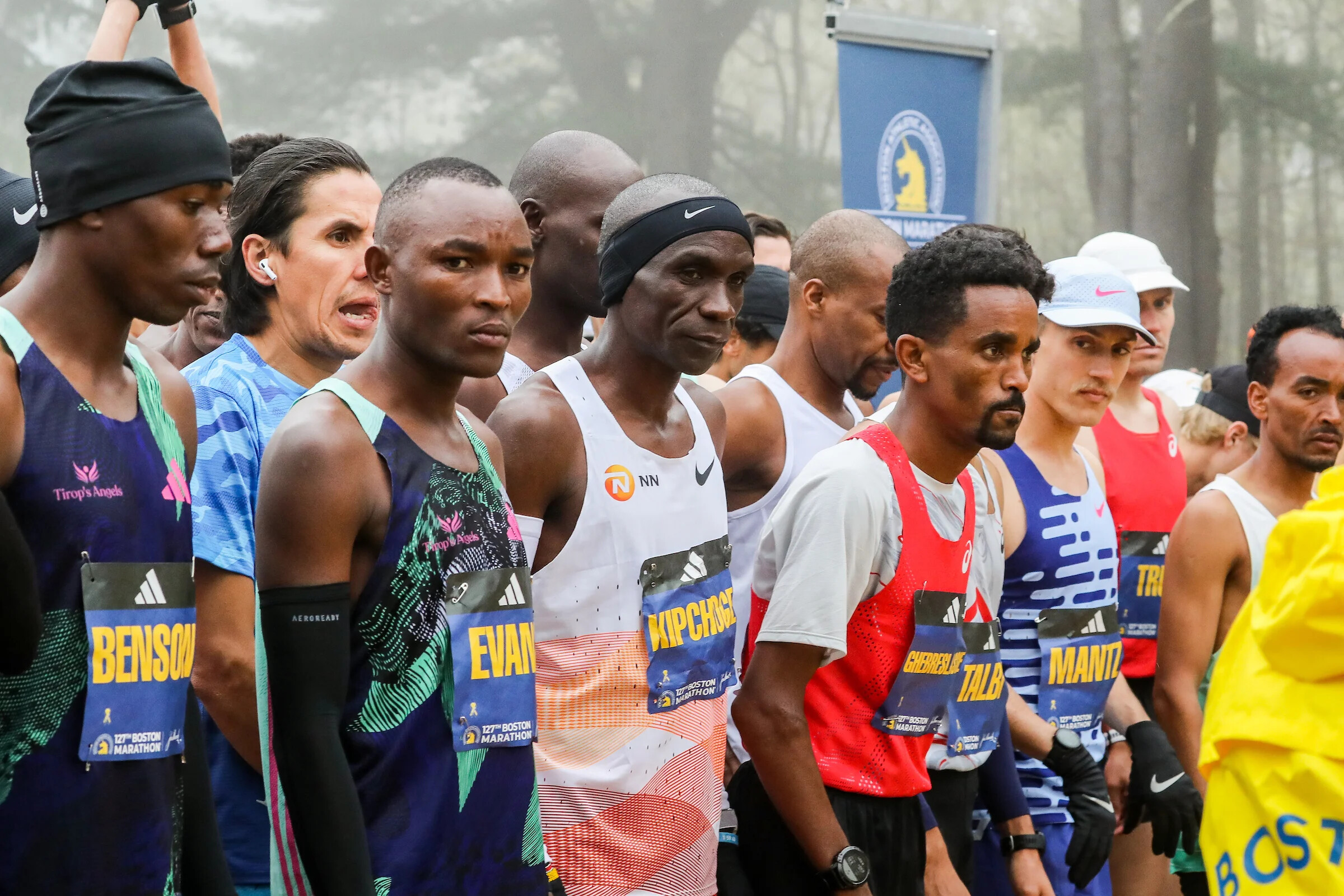
Having encountered the issue mid-race, he said that he simply “put my mind just to run in a comfortable pace to finish.”
Asked if he considered dropping out once he experienced an issue with his leg, Kipchoge admitted that “a lot of talking was going on in my mind.”
“But I said, ‘Hey, I can’t quit.’ They say it’s important to win, but it’s great to participate and finish.”
Given that he started confidently — leading the pack of elite runners for nearly all of the opening 17 miles — Kipchoge responded to a question about whether he had been tactically too aggressive in the early part of the race.
“This is sport, and you need to push,” he replied.
As for what’s next on his agenda, the Kenyan acknowledged that he will take some time to think things over. His main focus in the short term is to “recover, both mentally and physically.”
Despite the differences between Boston’s course — with its continuous elevation changes — and others that he’s run, which have generally been much more flat, Kipchoge also downplayed its effect on how he ran.
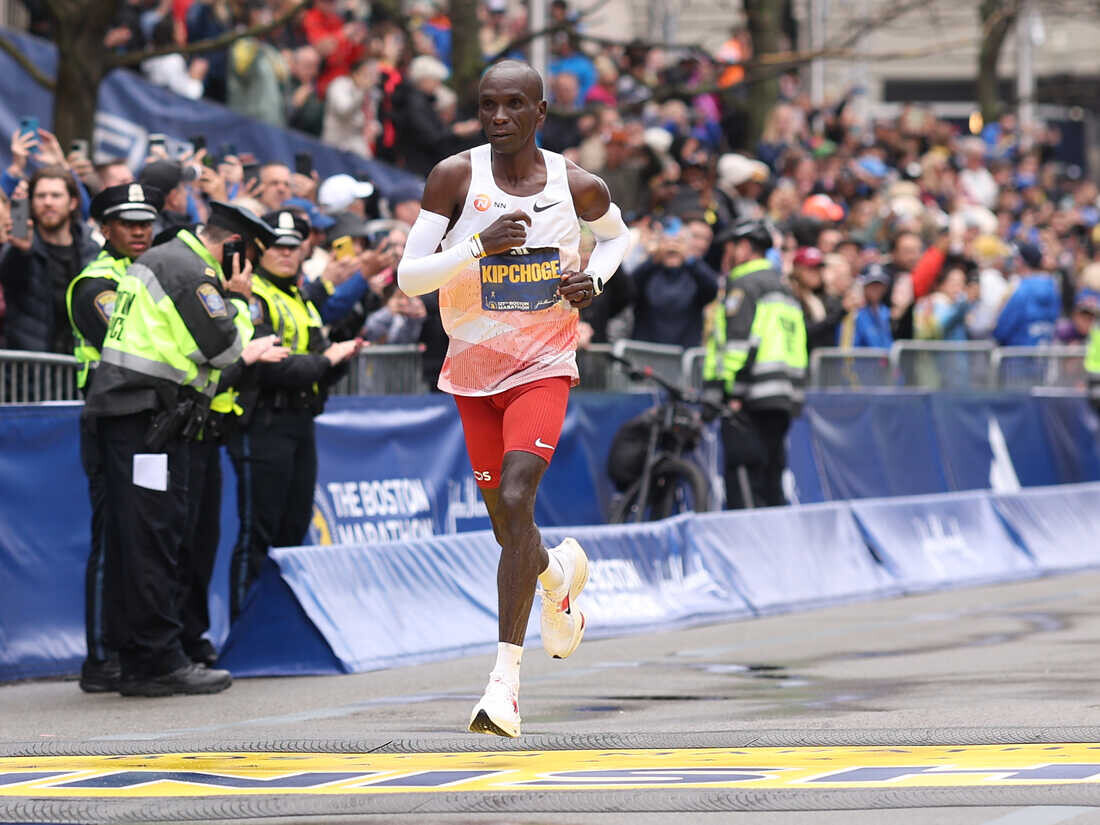
Though his debut in Boston didn’t go to plan, he said he would “absolutely” consider returning to run again. However, this will likely not be in 2024 since Kipchoge will probably aim to run in the Paris Olympics, which will take place too close to Boston’s April schedule for him to be at his fitness peak. He is the two-time defending Olympic gold medalist.
Kipchoge also released a statement following the race on Monday in which he congratulated eventual winner (and fellow Kenyan) Evans Chebet.
“I live for the moments where I get to challenge the limits. It’s never guaranteed, it’s never easy,” Kipchoge said. “Today was a tough day for me. I pushed myself as hard as I could but sometimes, we must accept that today wasn’t the day to push the barrier to a greater height.
“I want to congratulate my competitors and thank everyone in Boston and from home for the incredible support I am so humbled to receive,” he added. “In sports you win and you lose and there is always tomorrow to set a new challenge. Excited for what’s ahead.”
(04/19/2023) Views: 565 ⚡AMPby Hayden Bird
Boston Marathon
Among the nation’s oldest athletic clubs, the B.A.A. was established in 1887, and, in 1896, more than half of the U.S. Olympic Team at the first modern games was composed of B.A.A. club members. The Olympic Games provided the inspiration for the first Boston Marathon, which culminated the B.A.A. Games on April 19, 1897. John J. McDermott emerged from a...
more...Australian man runs marathon while pushing lawnmower
As runners tied up their shoelaces and stretched their calves for Sunday’s Newcastle Marathon in New South Wales, Australia, one local dad checked his wheels and made sure his catcher was secure, pushing a Victa Corvette 400 gas-powered lawnmower for 42.2 kilometres while raising money to help Australia’s Youth Mental Health Foundation.
The idea to do something special came to Daniel Robinson while he was mowing his lawn. He has previously done other challenges to raise money for the same foundation; for example, last year, he spent 12 hours running up and down Newcastle’s Mount Tomaree, doing 40 push-ups at the top, on every lap.
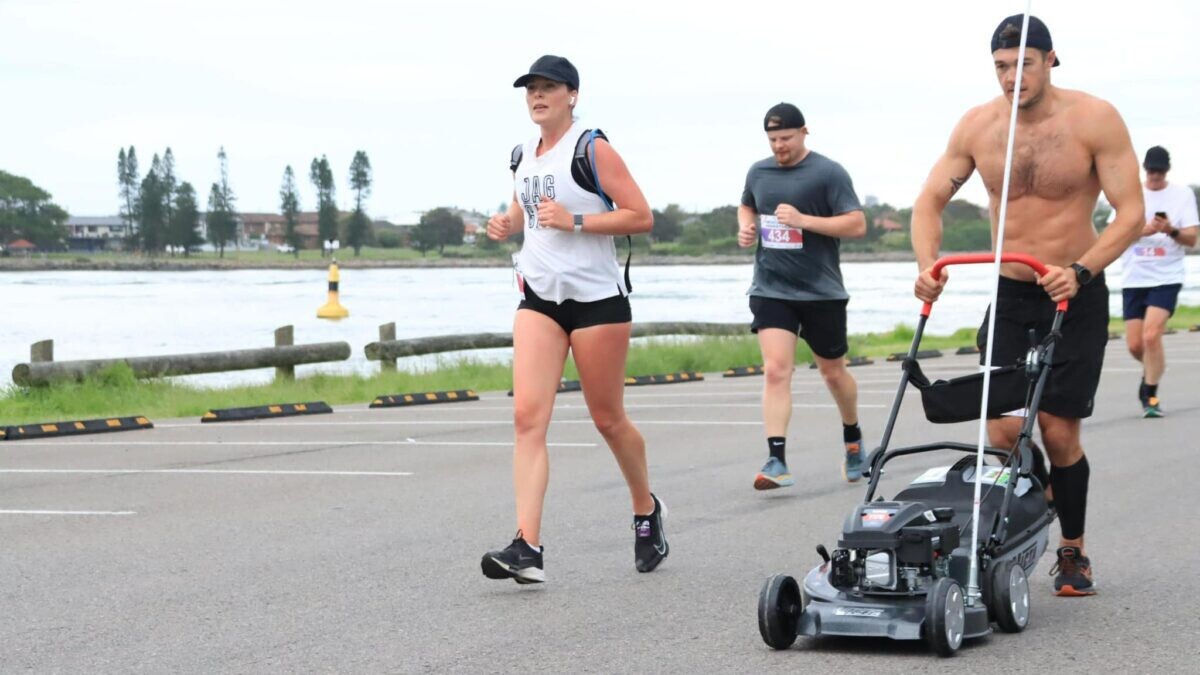
“I wanted to run a marathon while doing something that I haven’t seen before,” said Robinson to local news. “It took me a while to think it up, but I loved the idea of pushing myself and my lawnmower.”
Robinson finished the marathon in a time of 4:04:37, crossing the line in 198th place out of 500 runners. Robinson said the hardest part was making sure he didn’t trip or “mow” anyone down.
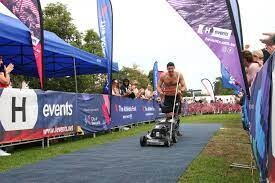
Youth mental health is an important cause close to Robinson’s heart. “Each year, one in four young people experience a mental health issue, and 75 per cent of mental health disorders emerge before a person turns 25,” said Robinson. “Sadly, suicide is still the leading cause of death for young people in Australia.”
Robinson’s goal is to raise $20,000 for Australia’s Youth Mental Health Foundation, he’s currently about half of the way there.
(04/19/2023) Views: 657 ⚡AMPby Marley Dickinson


